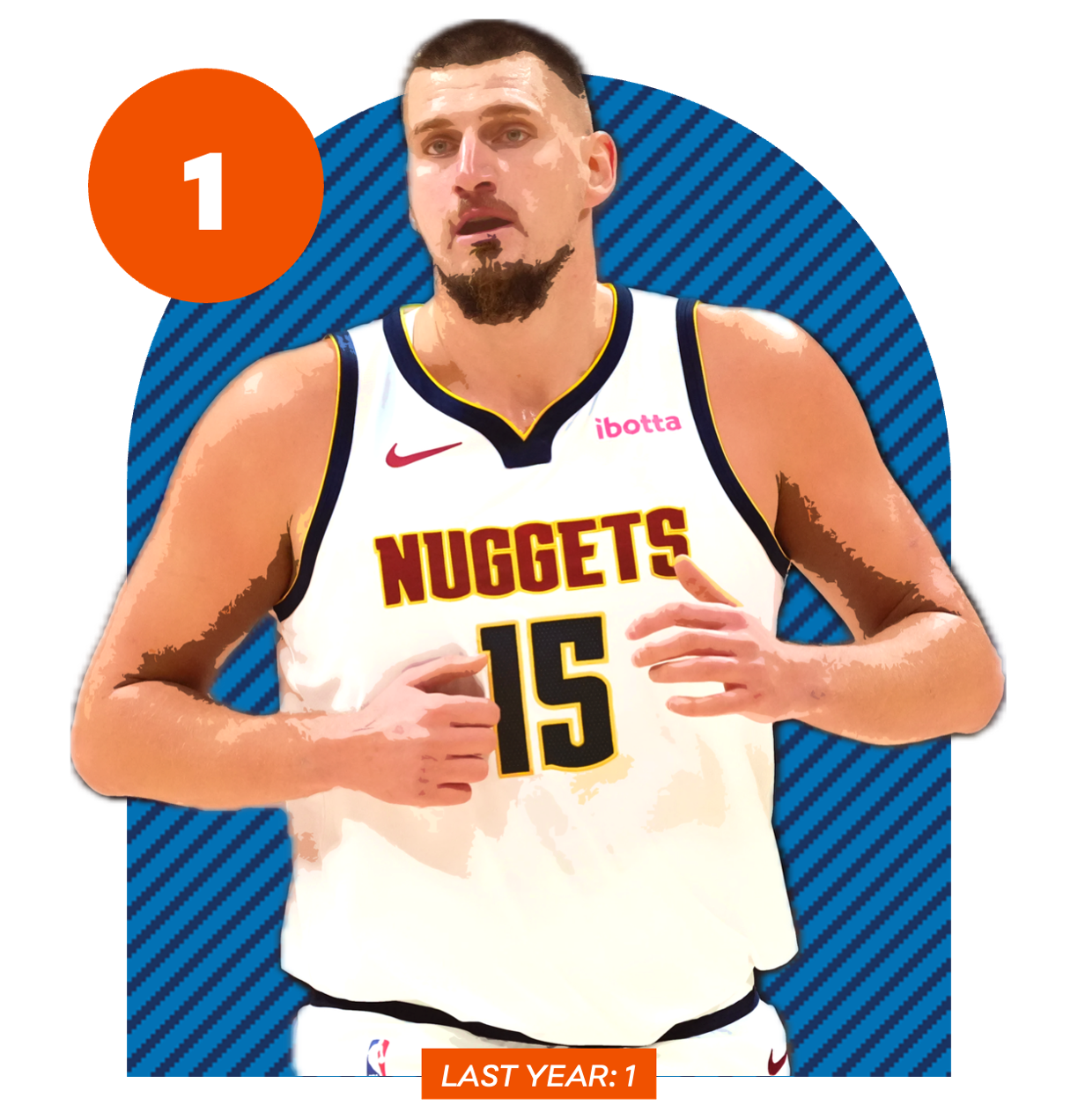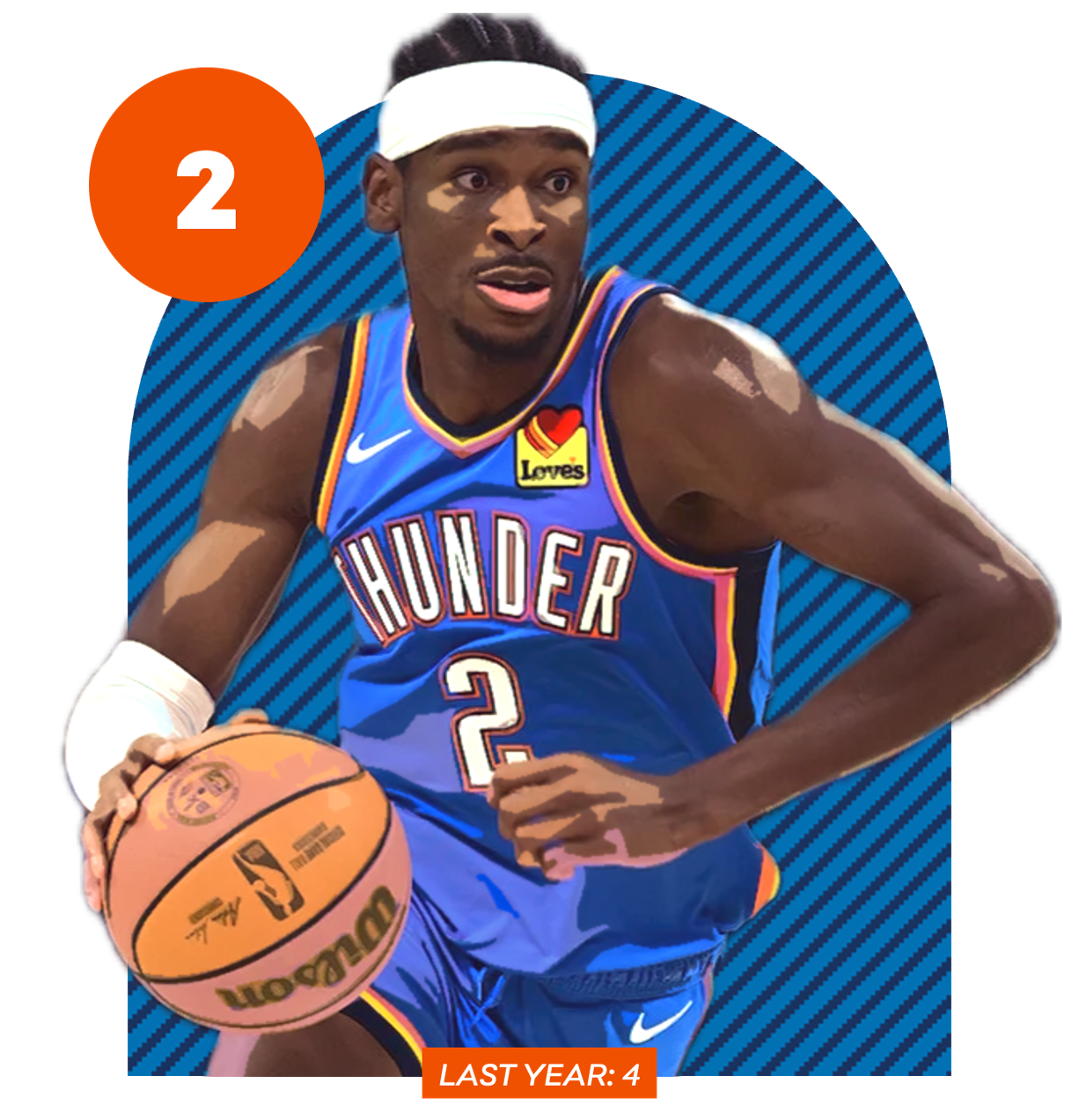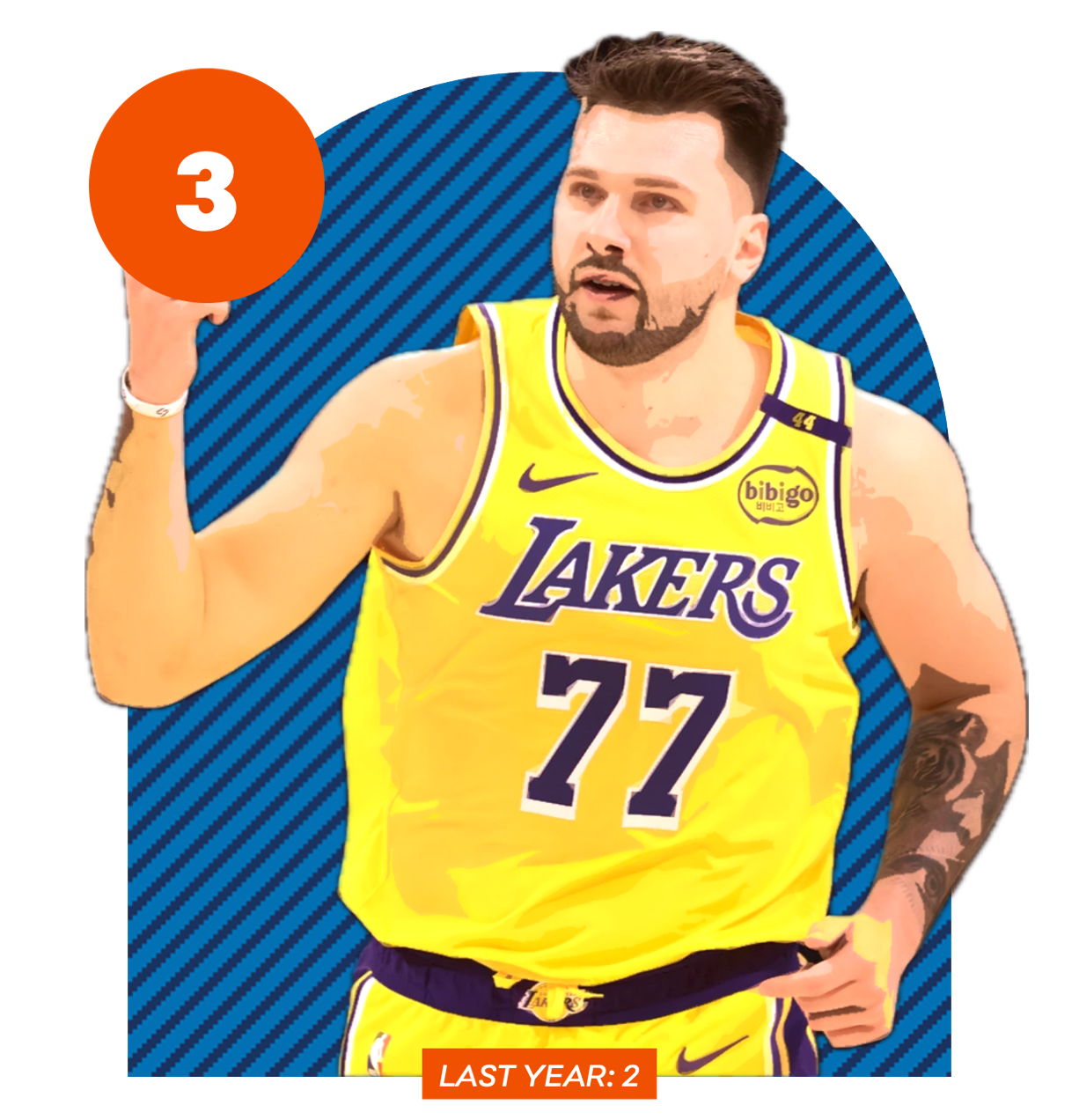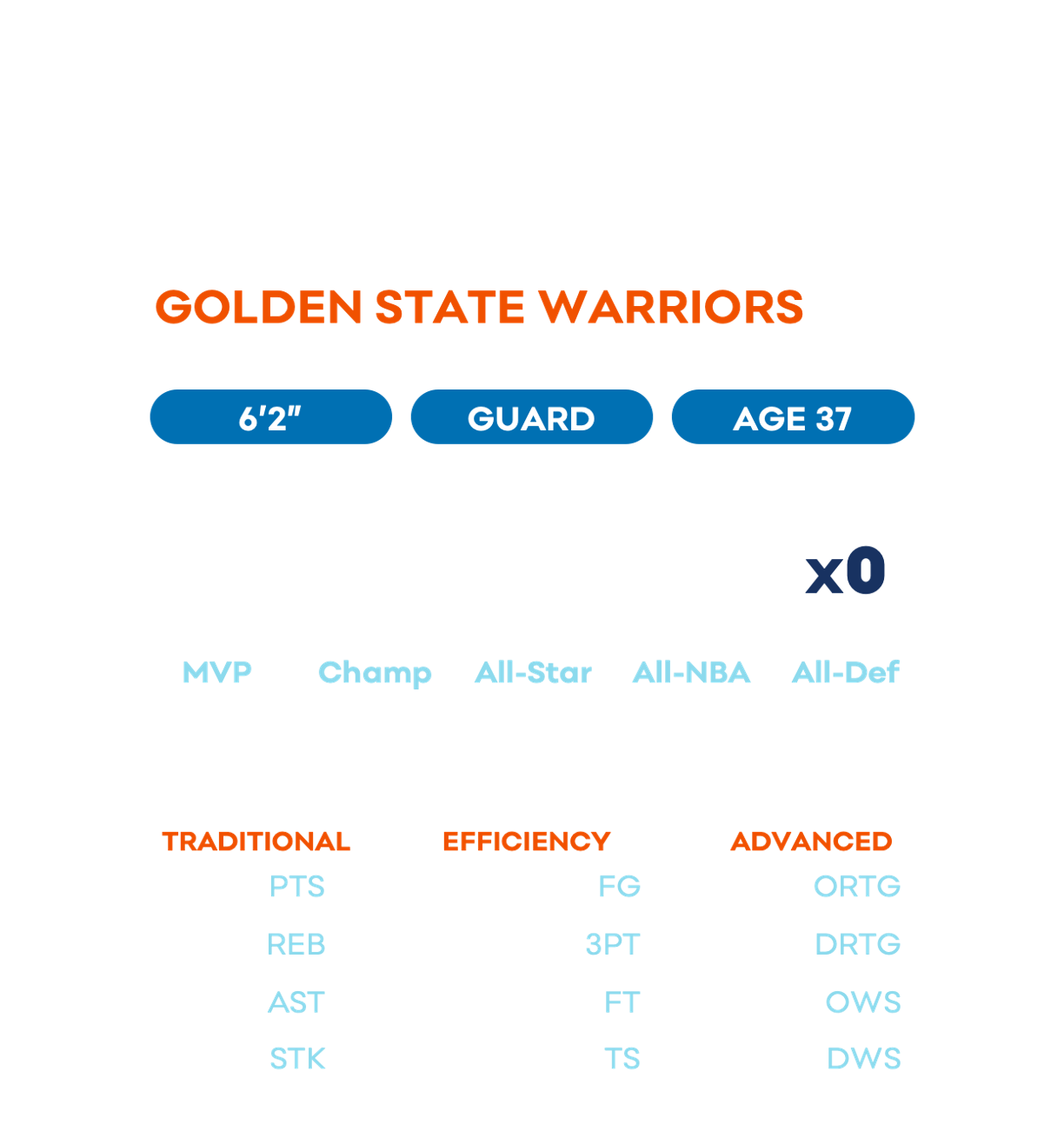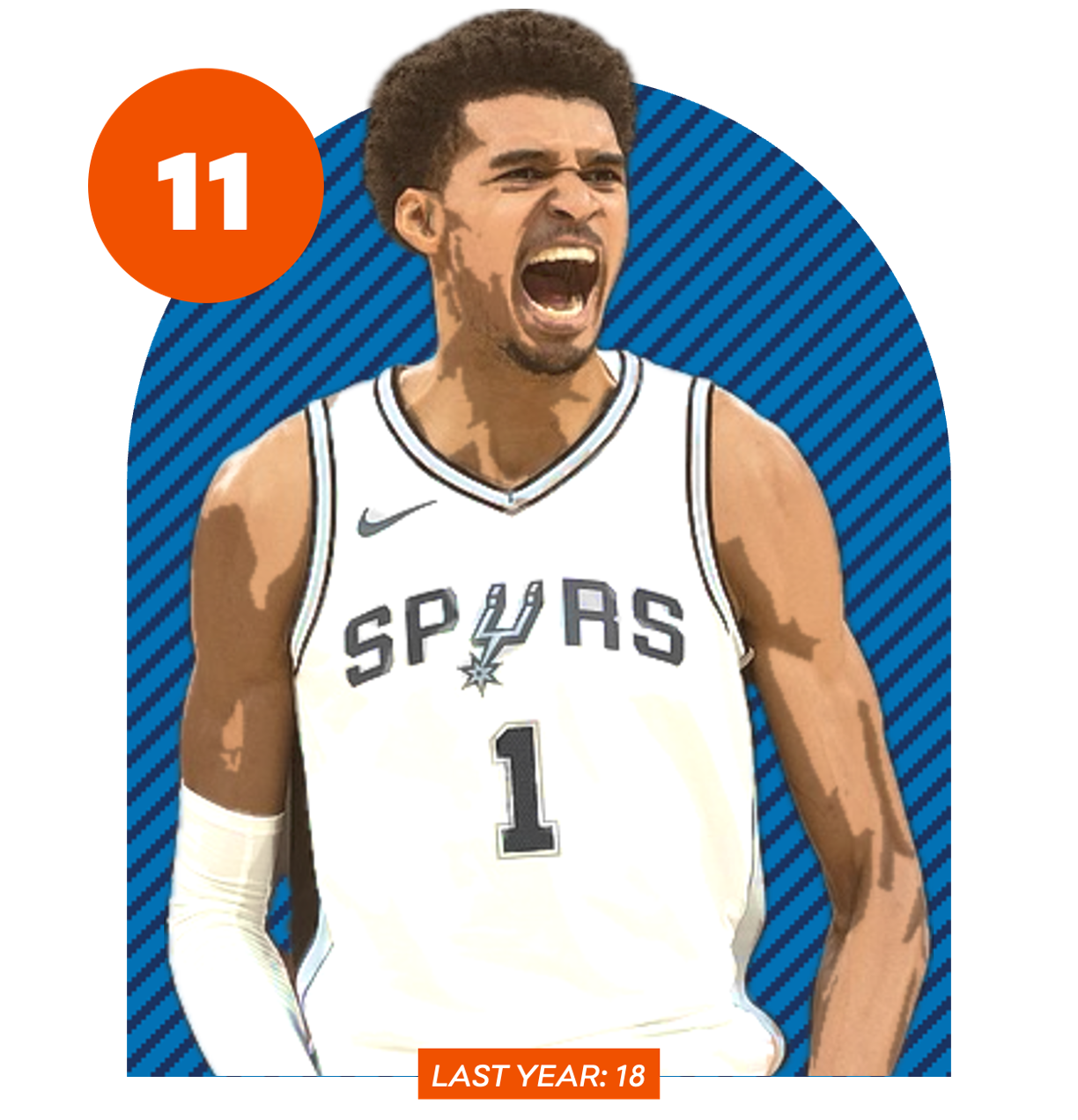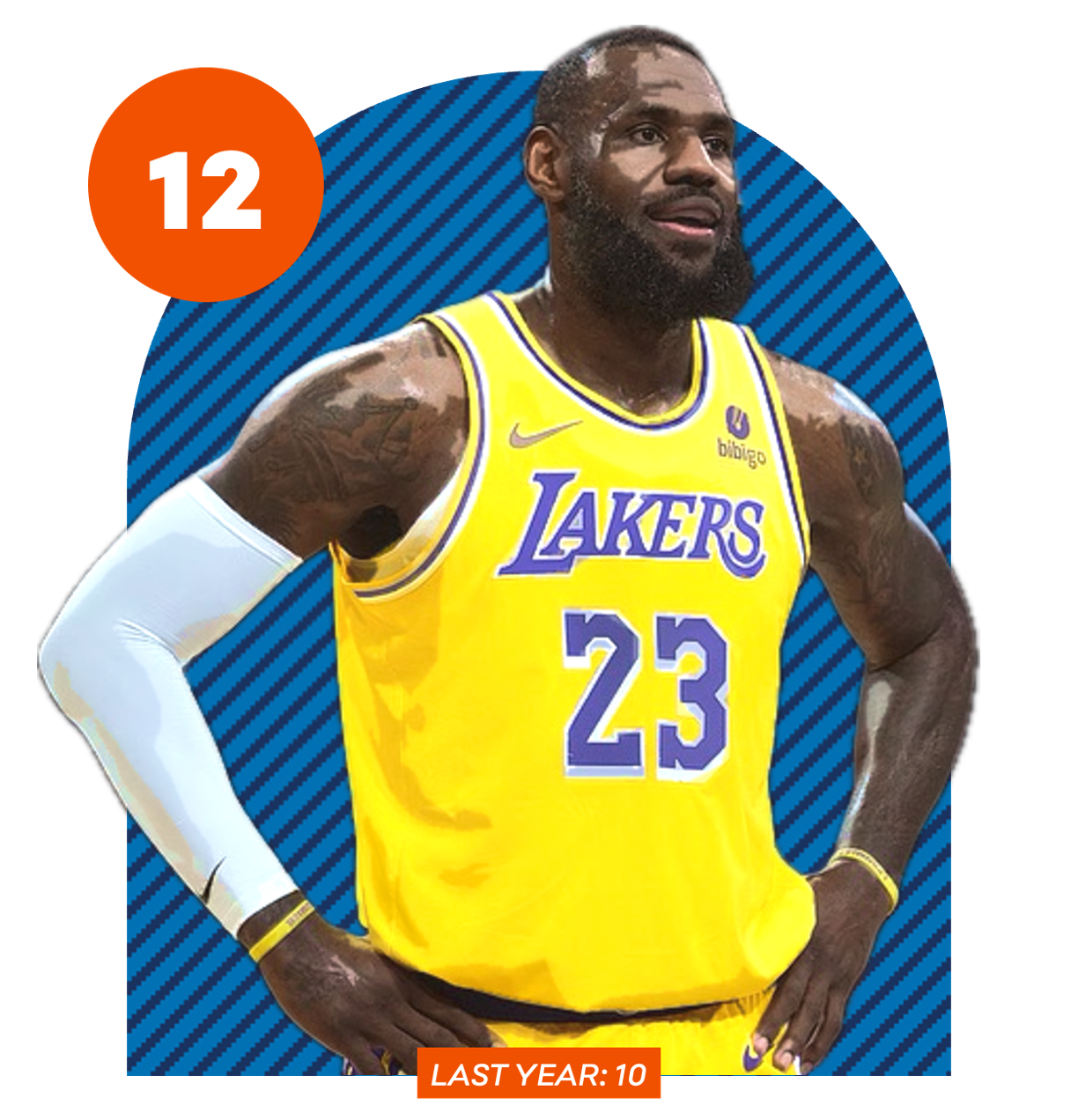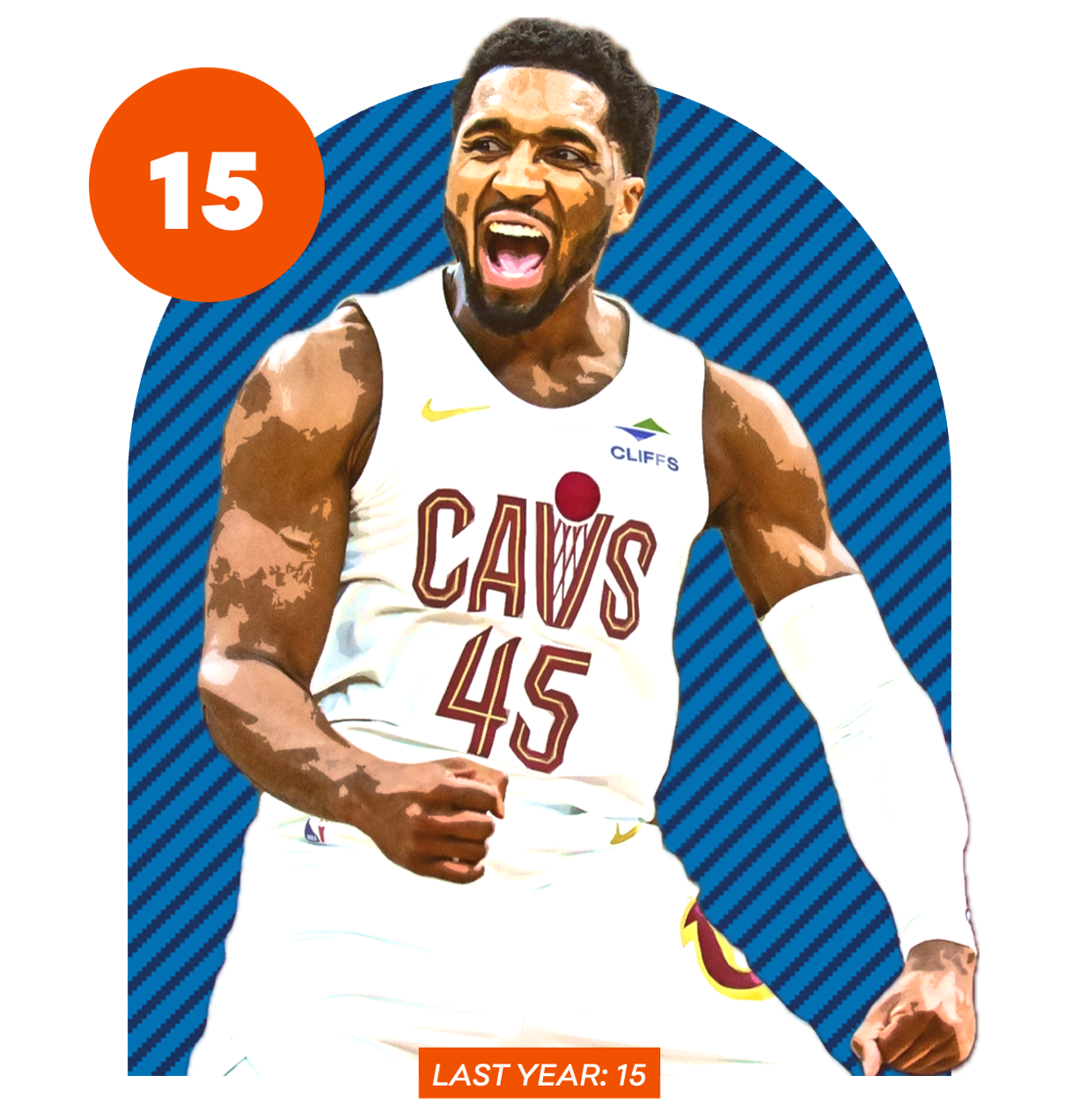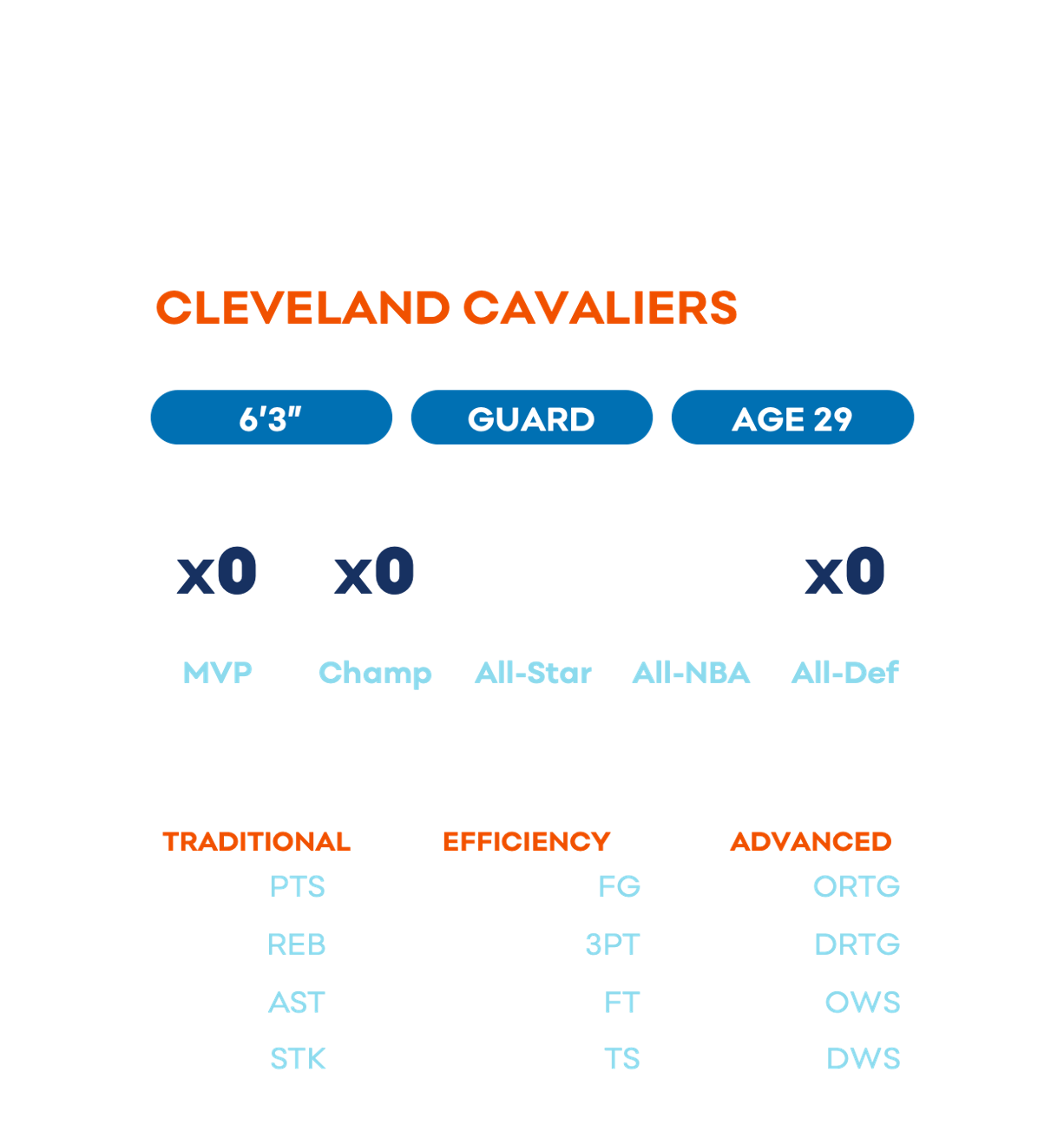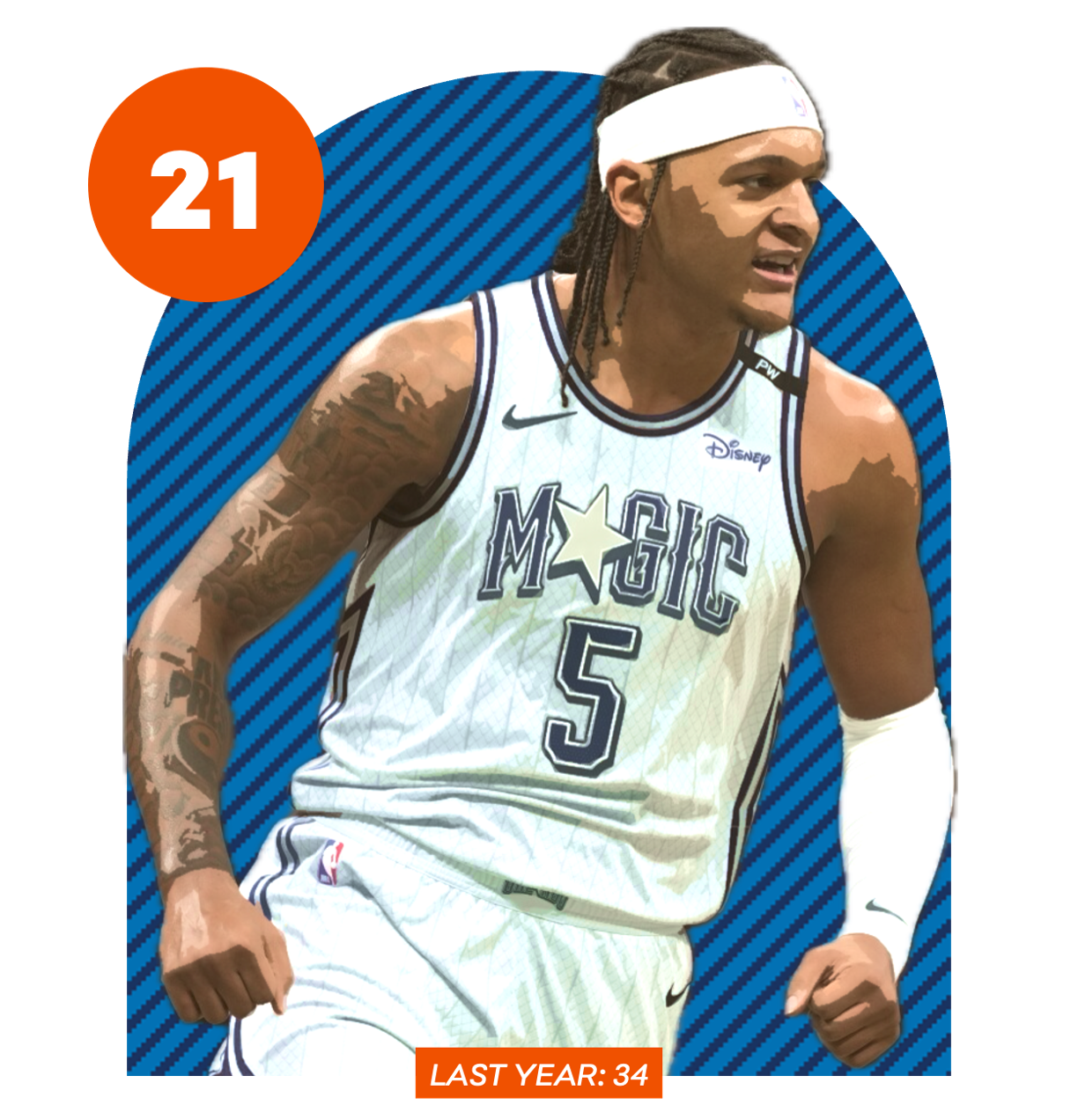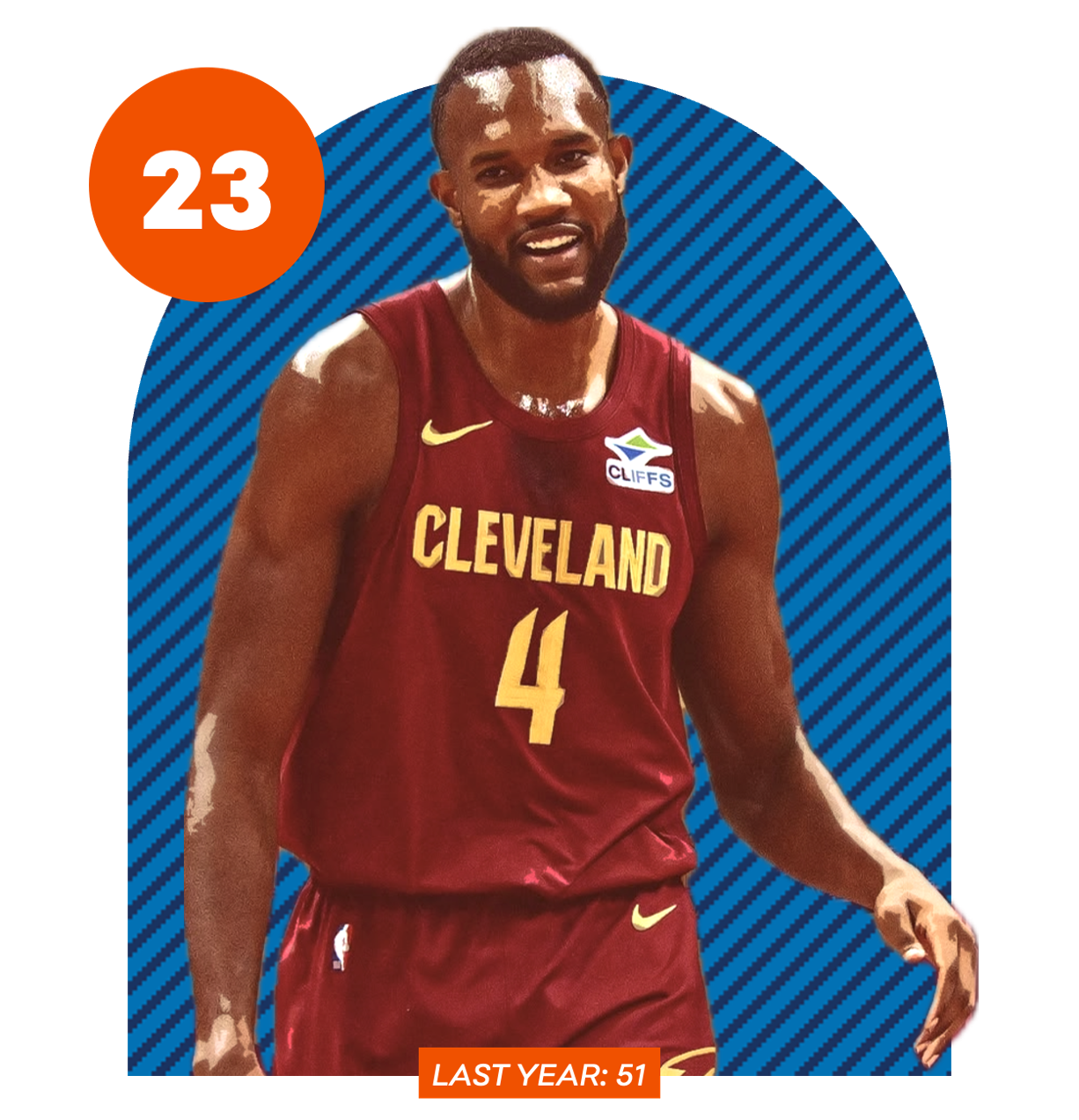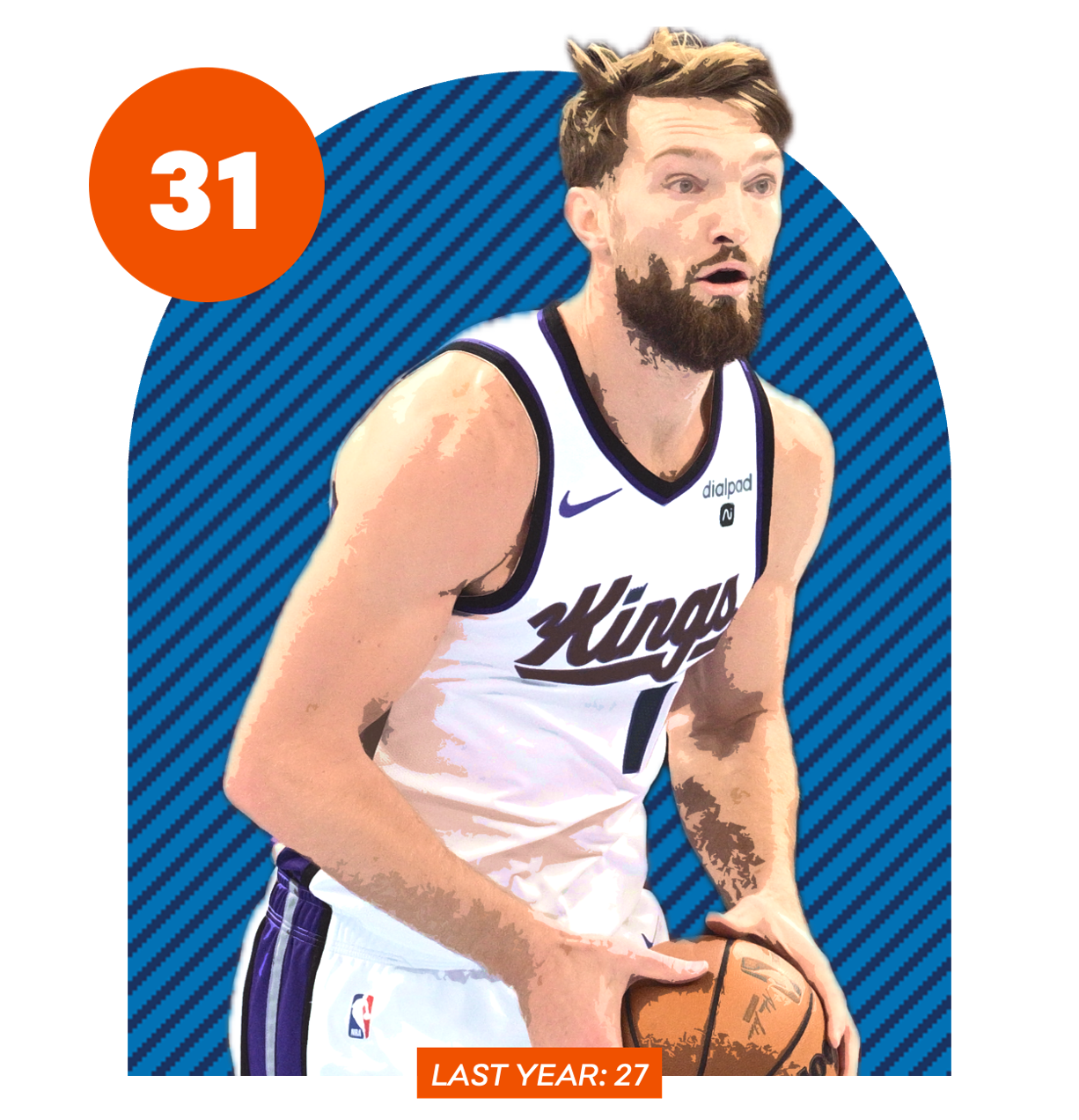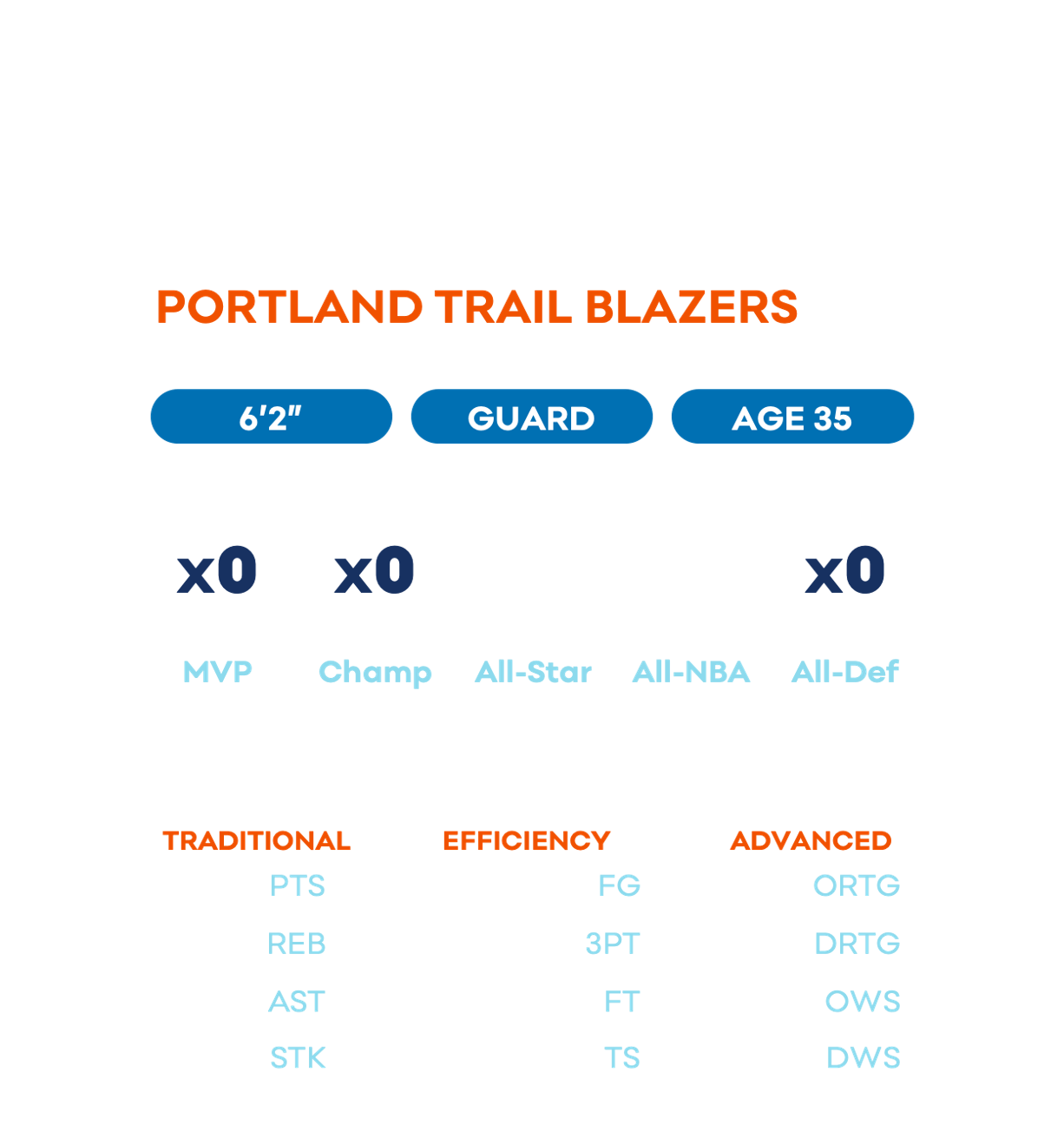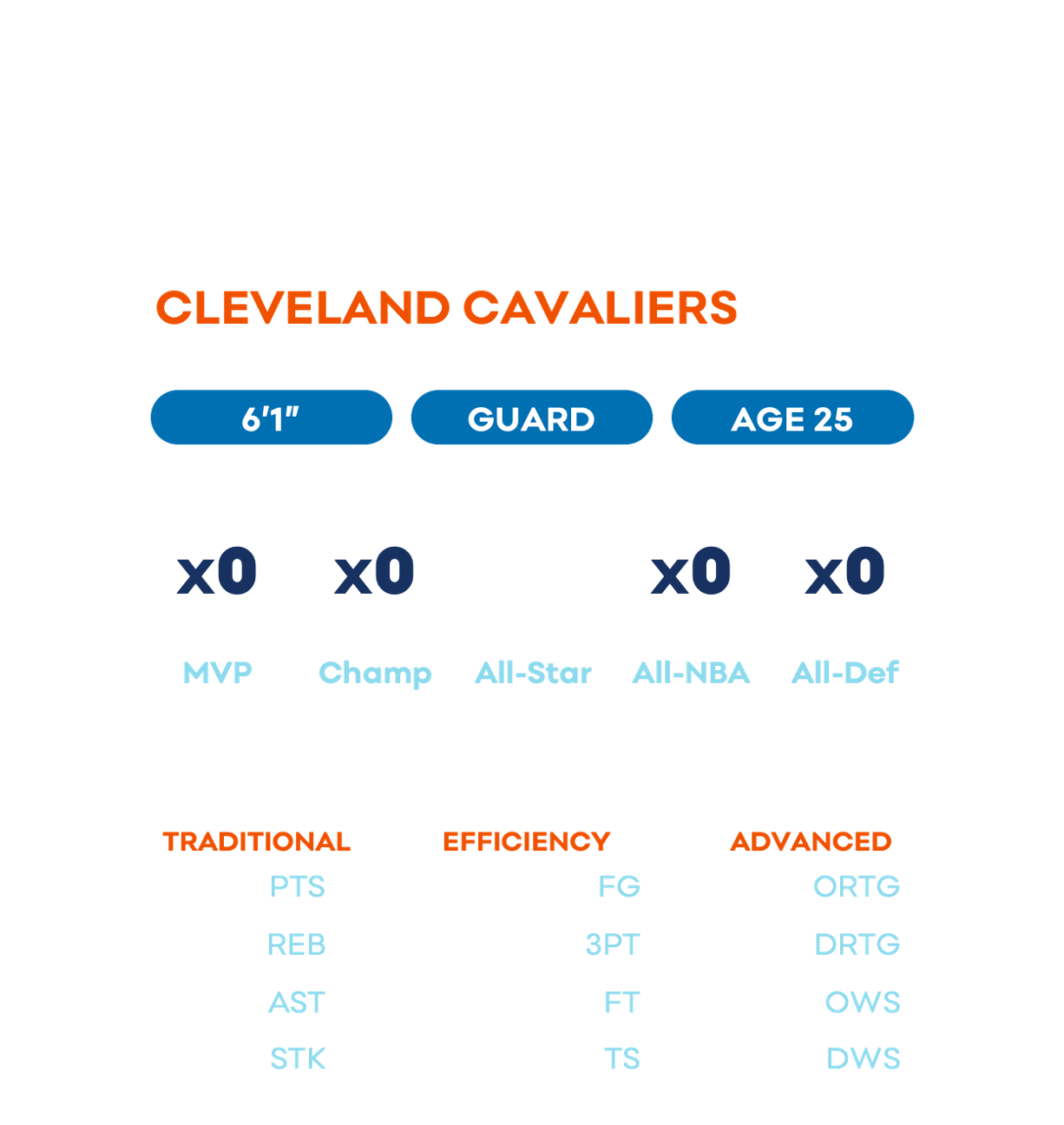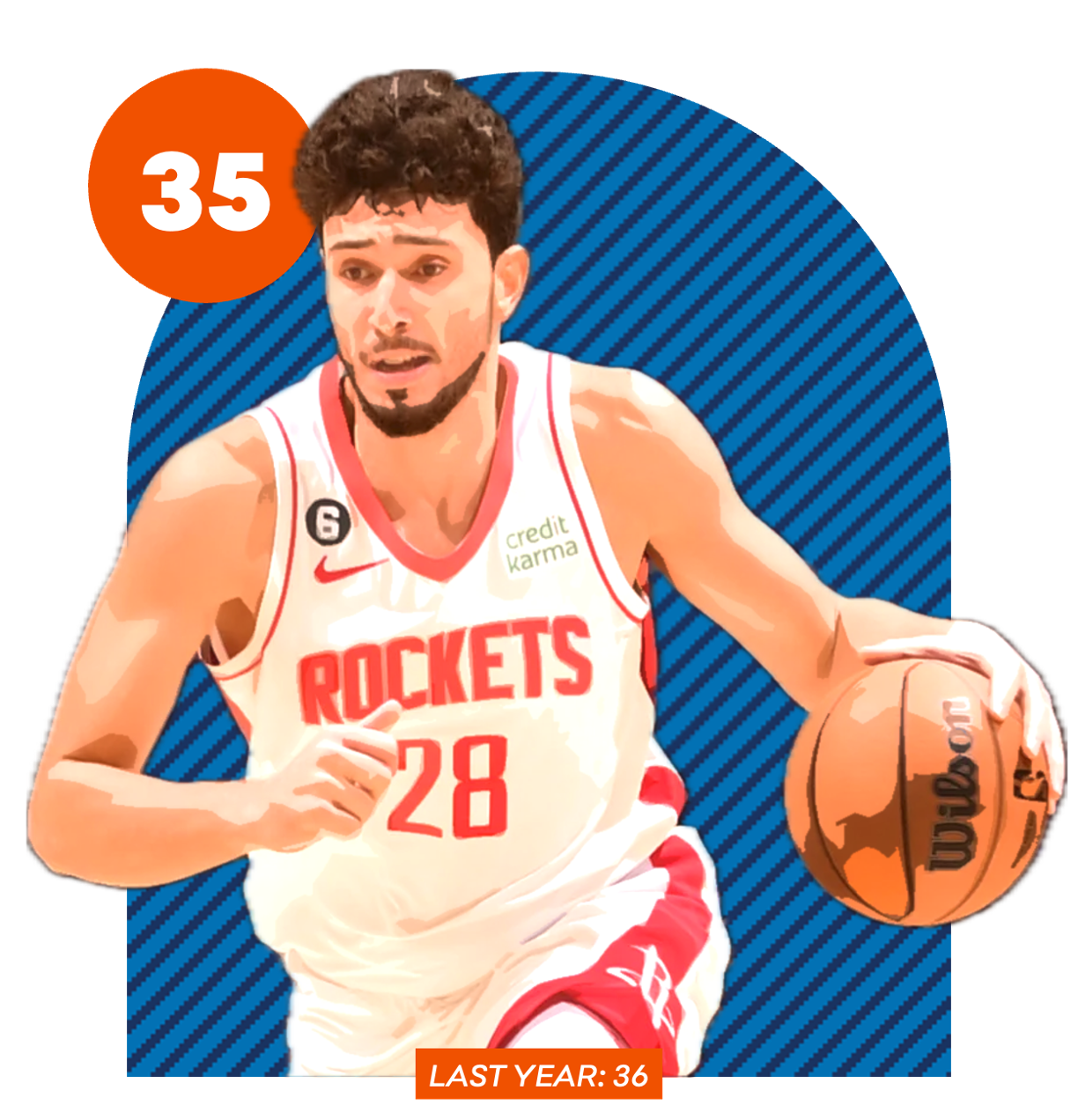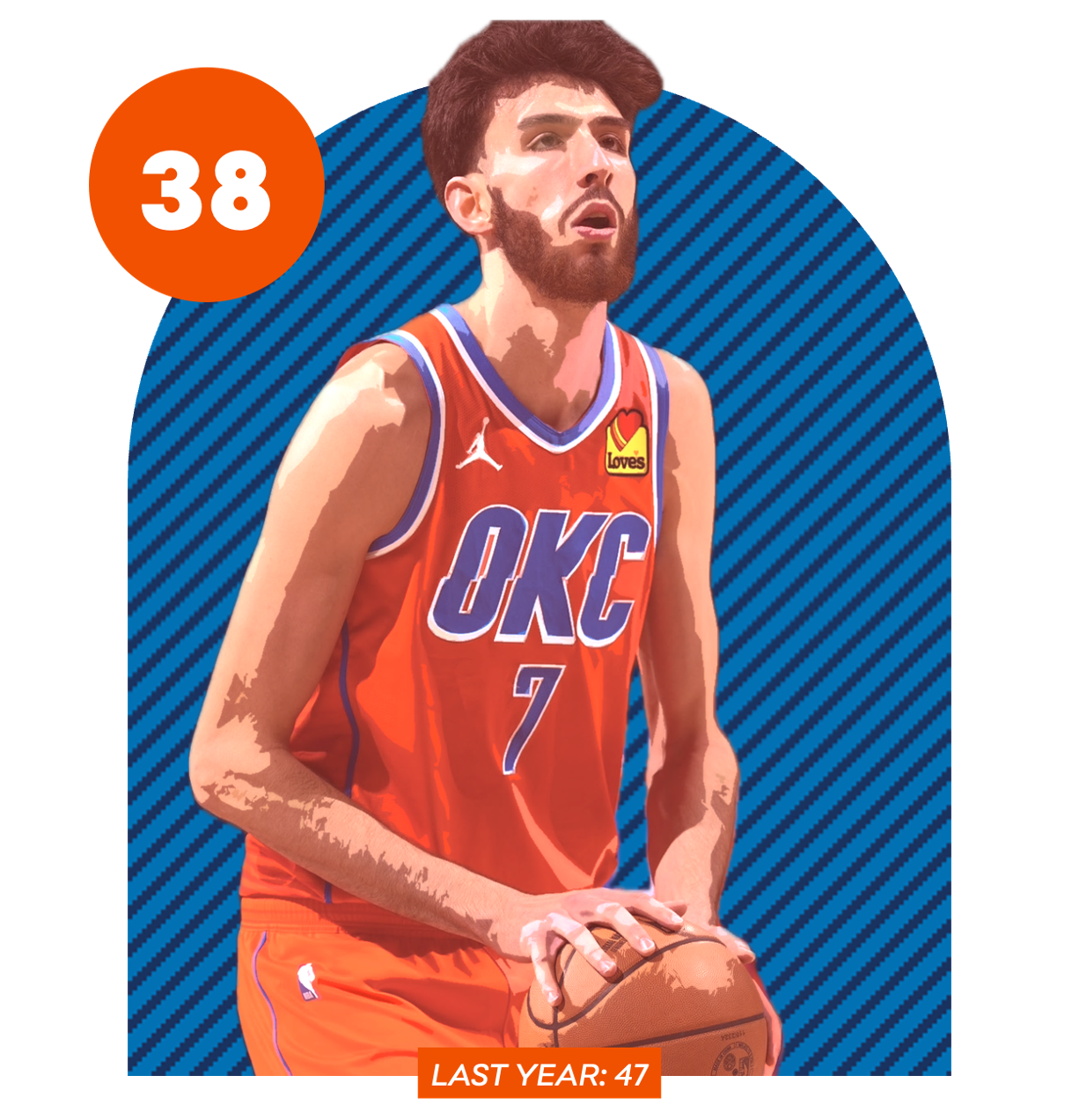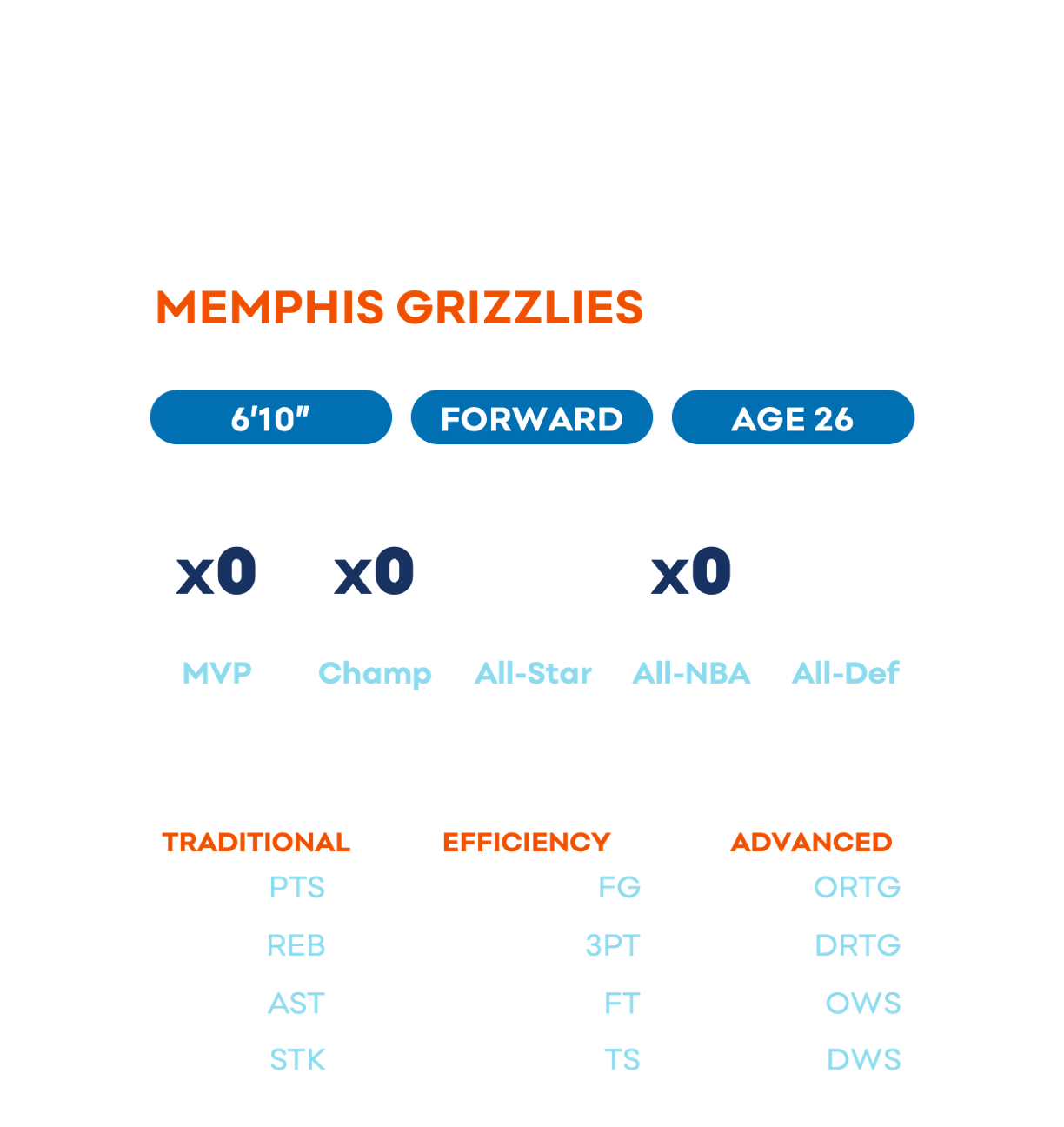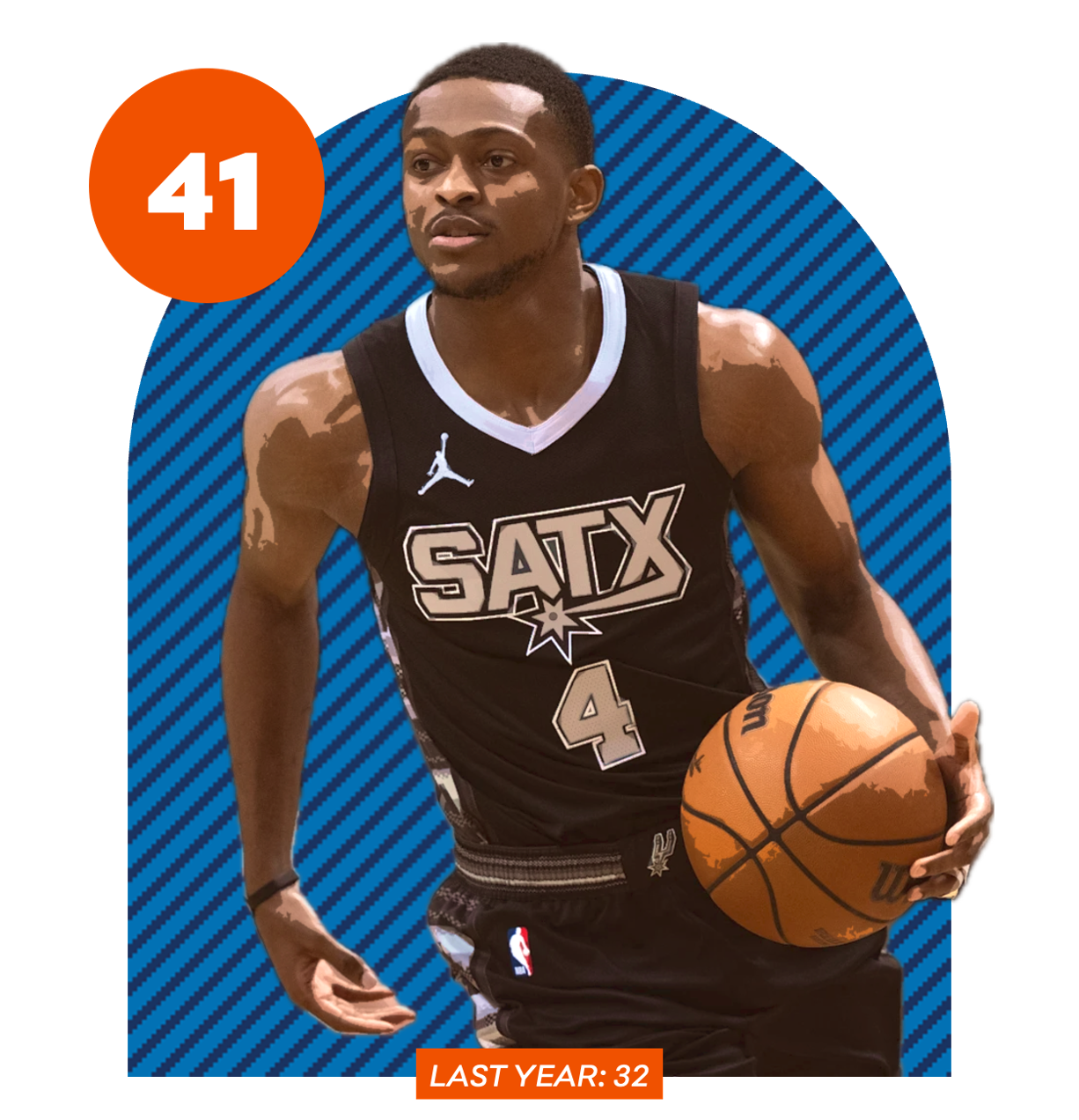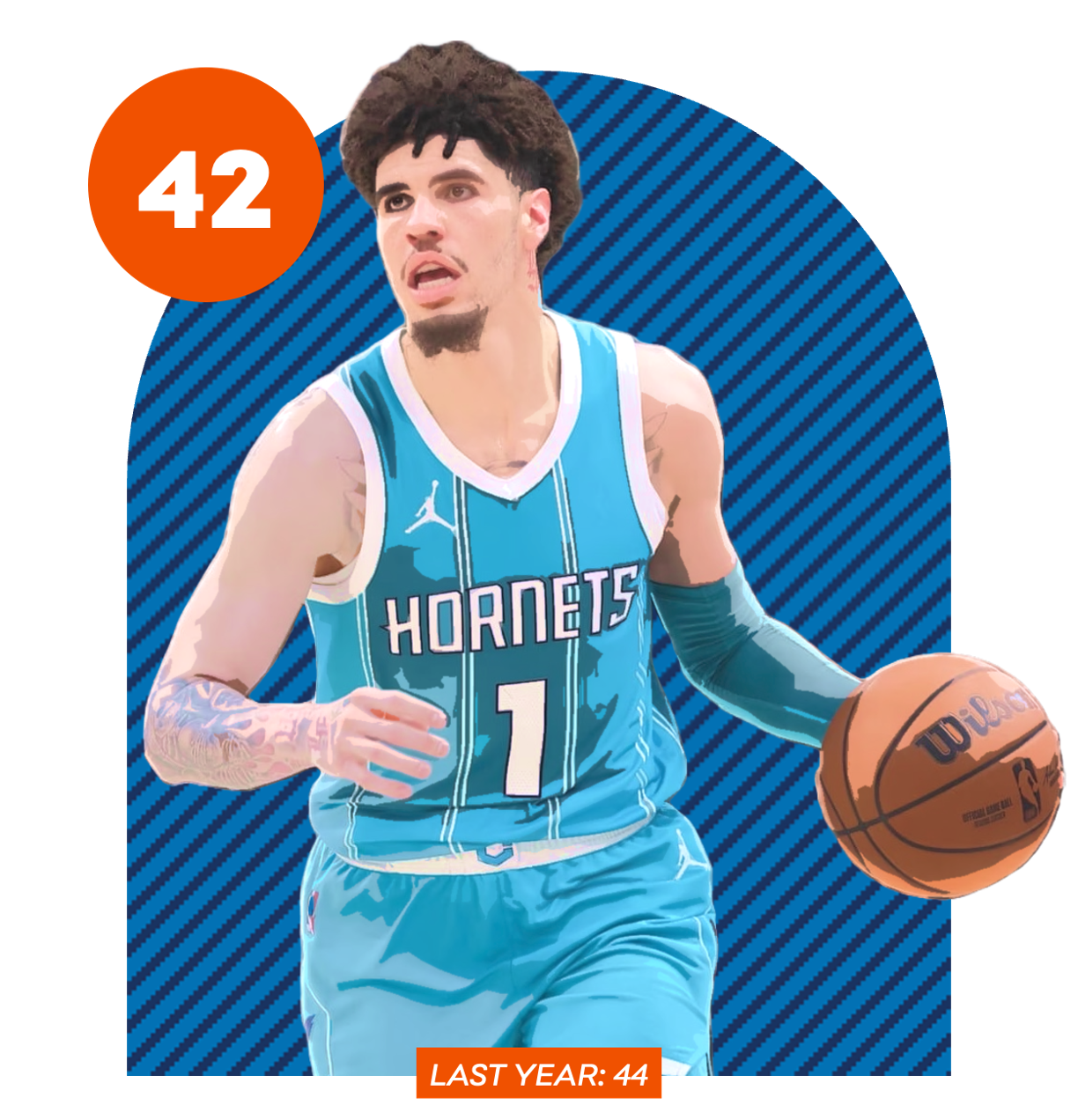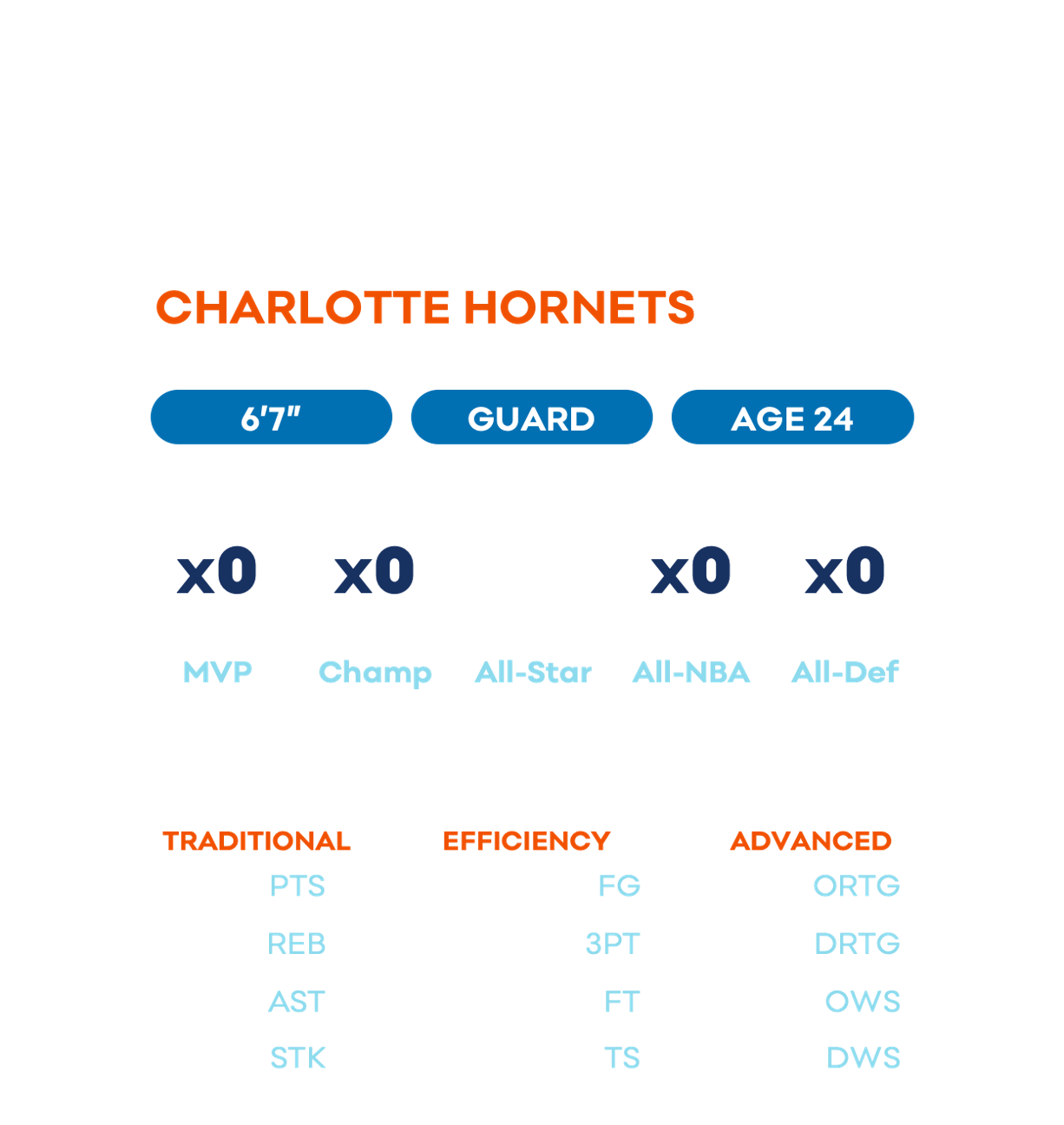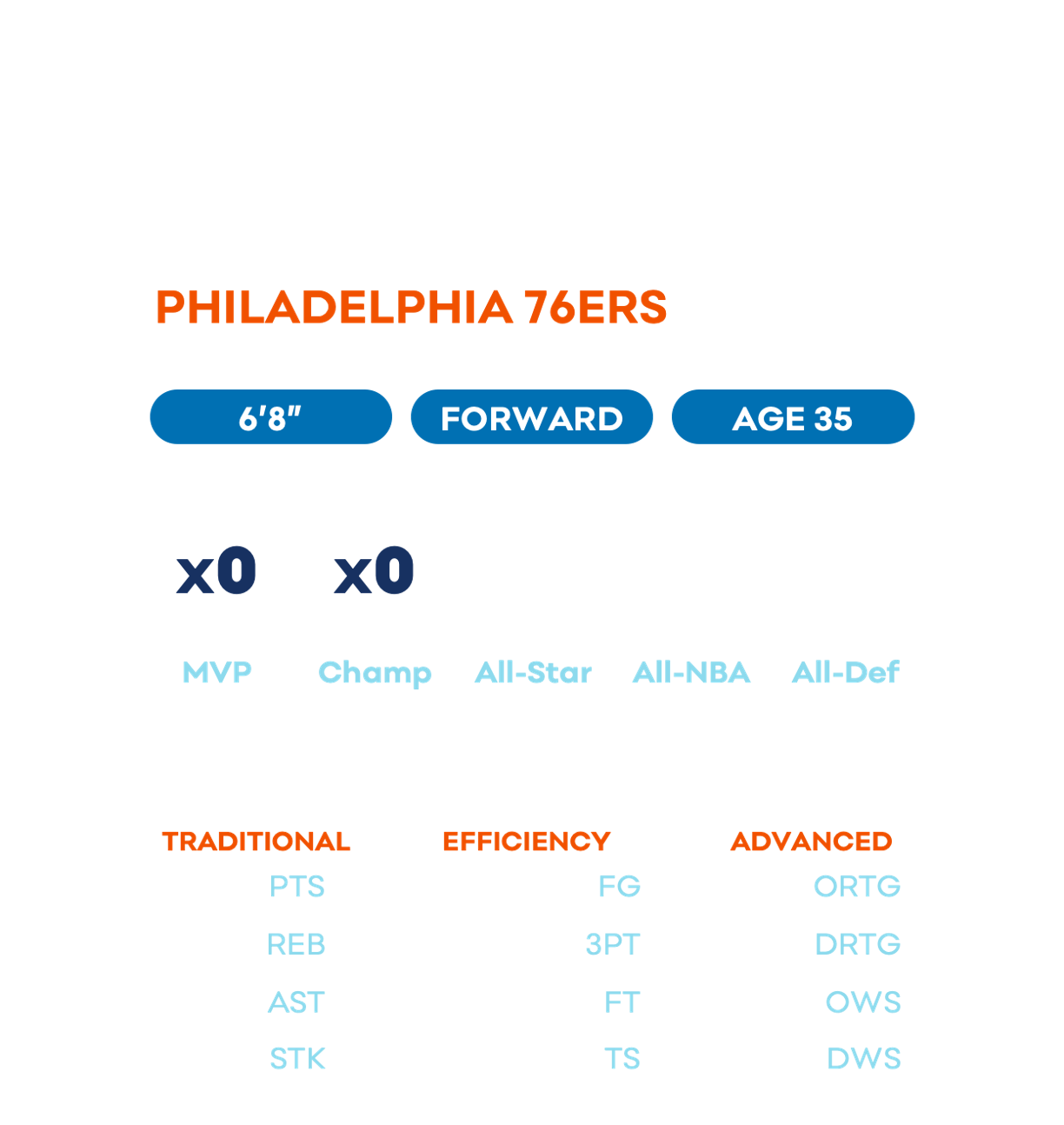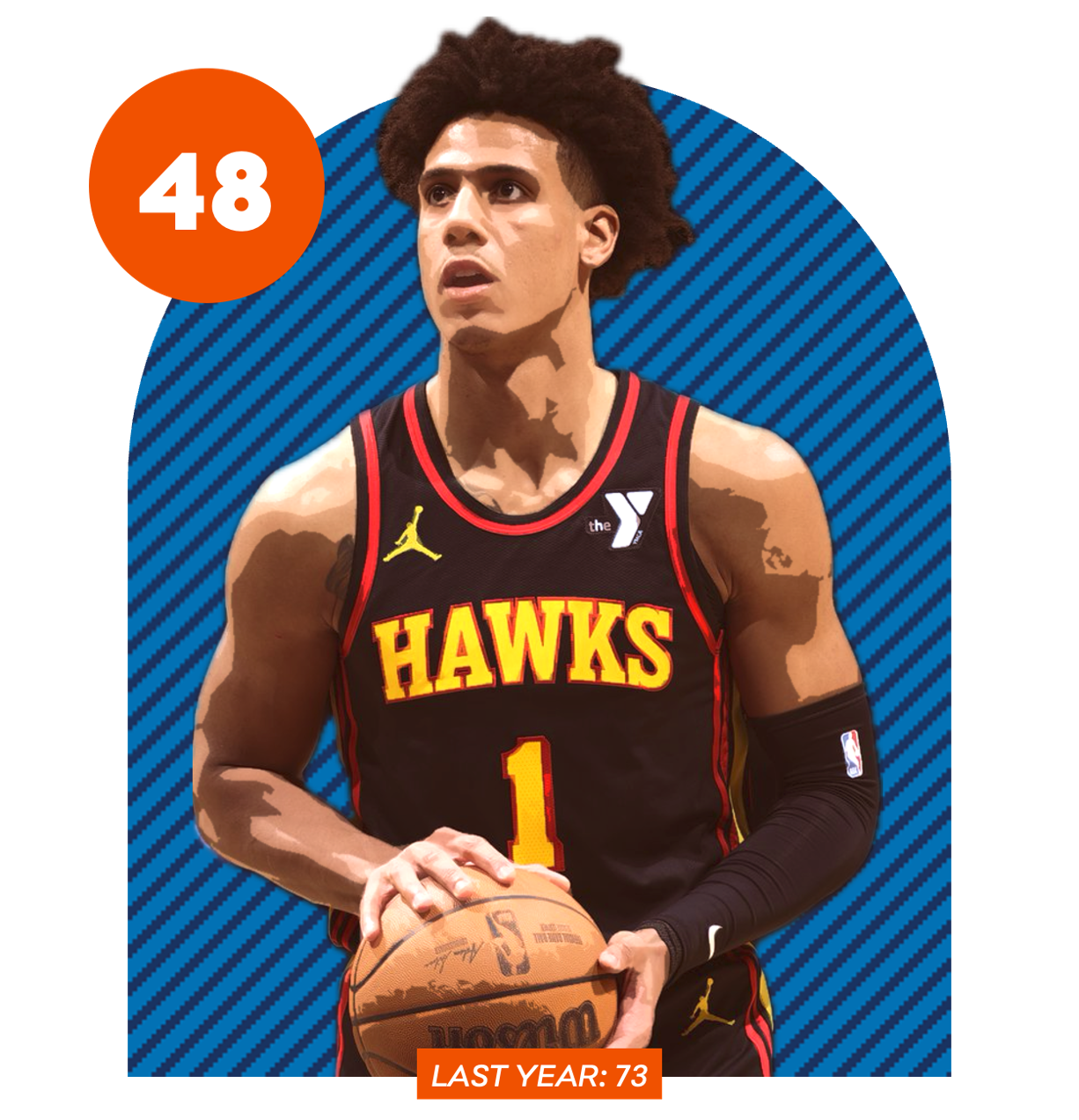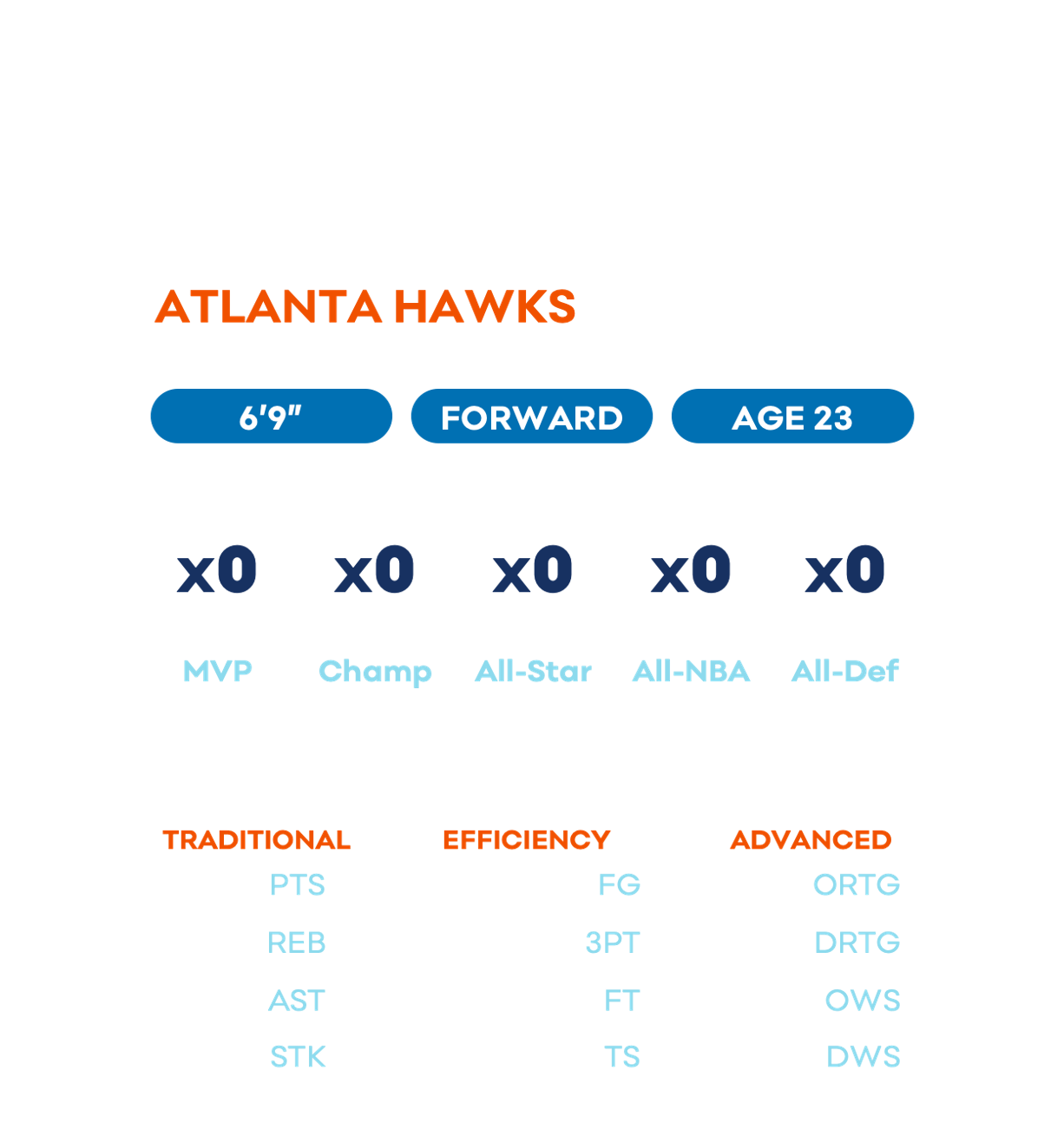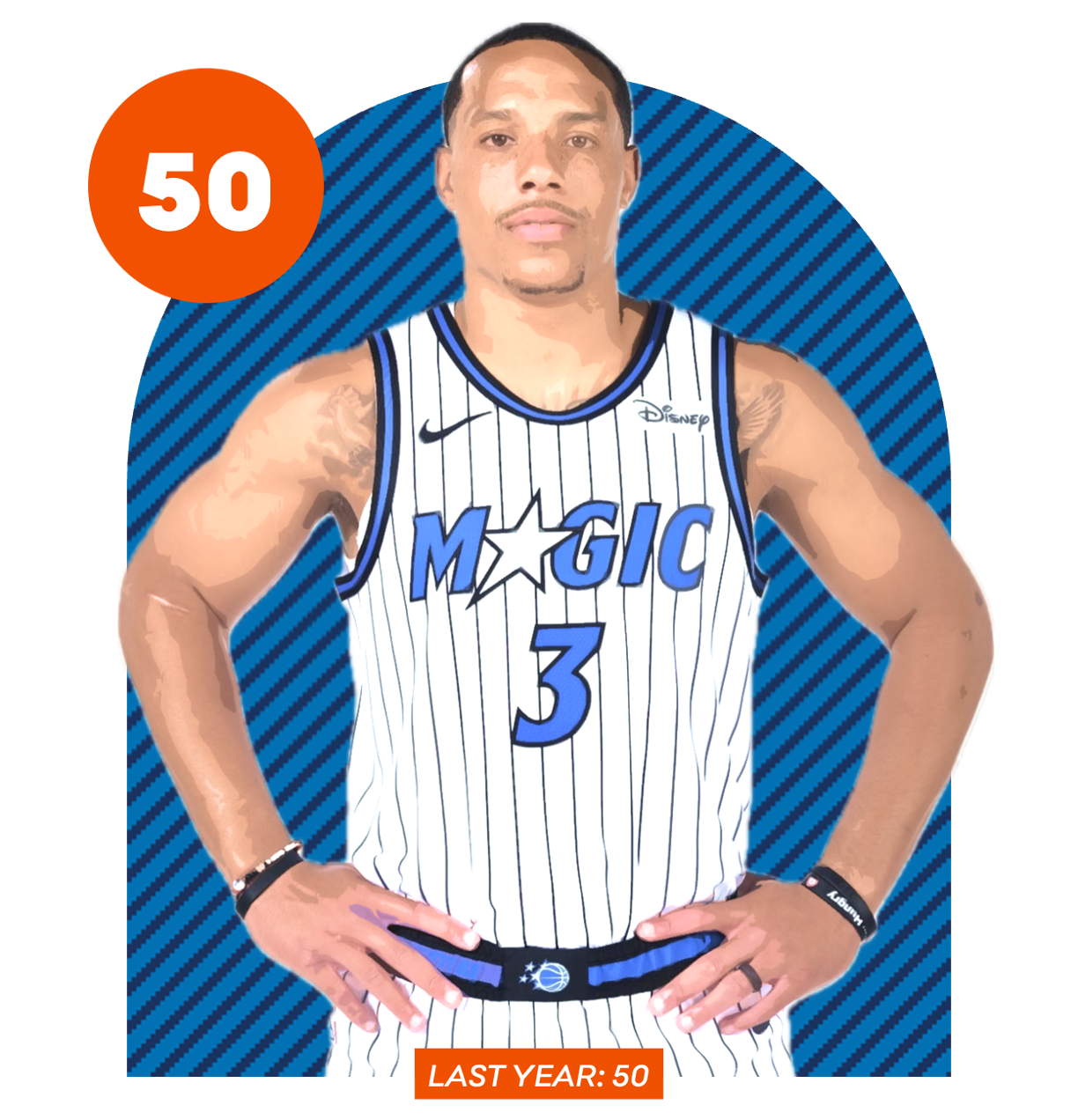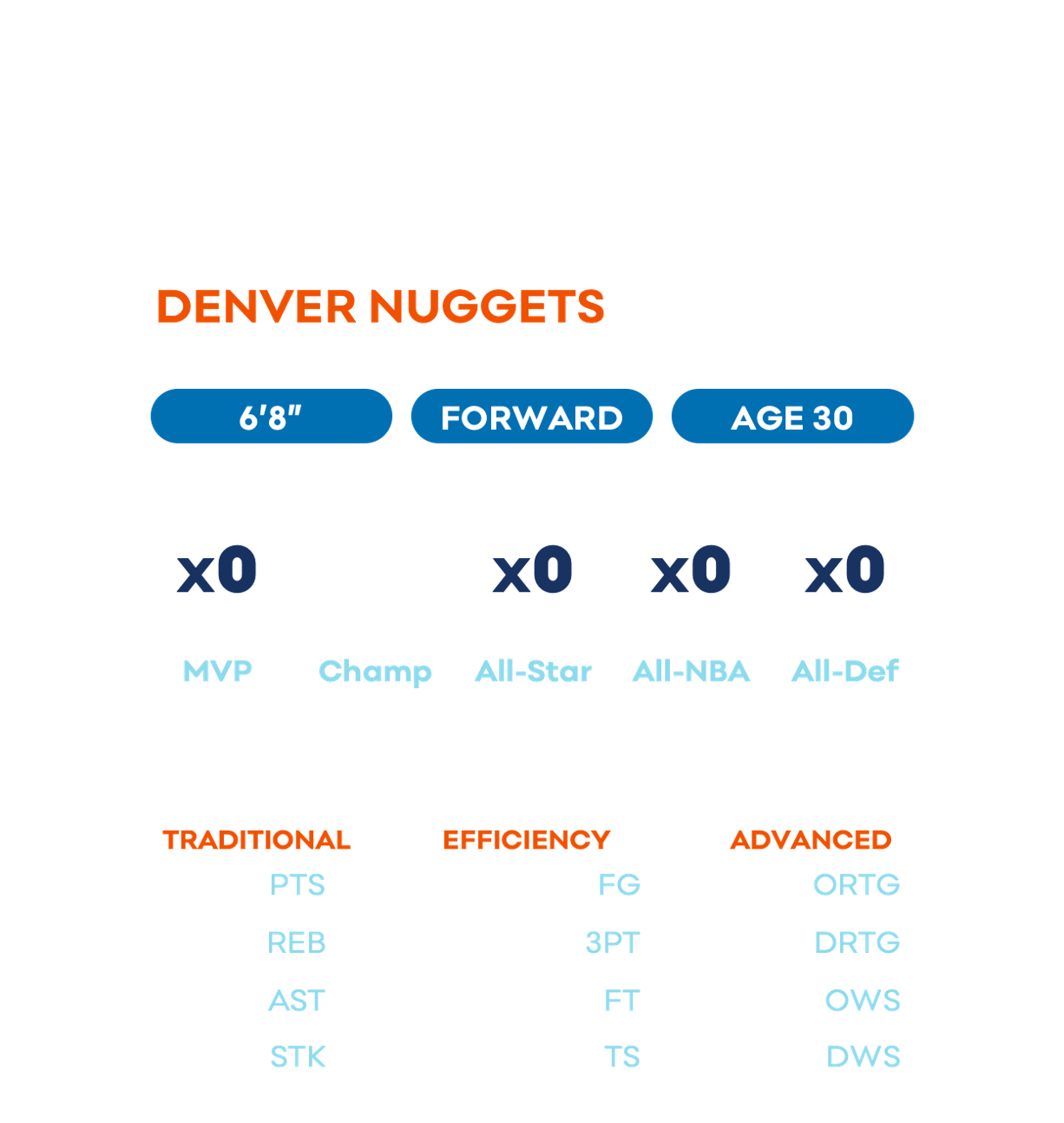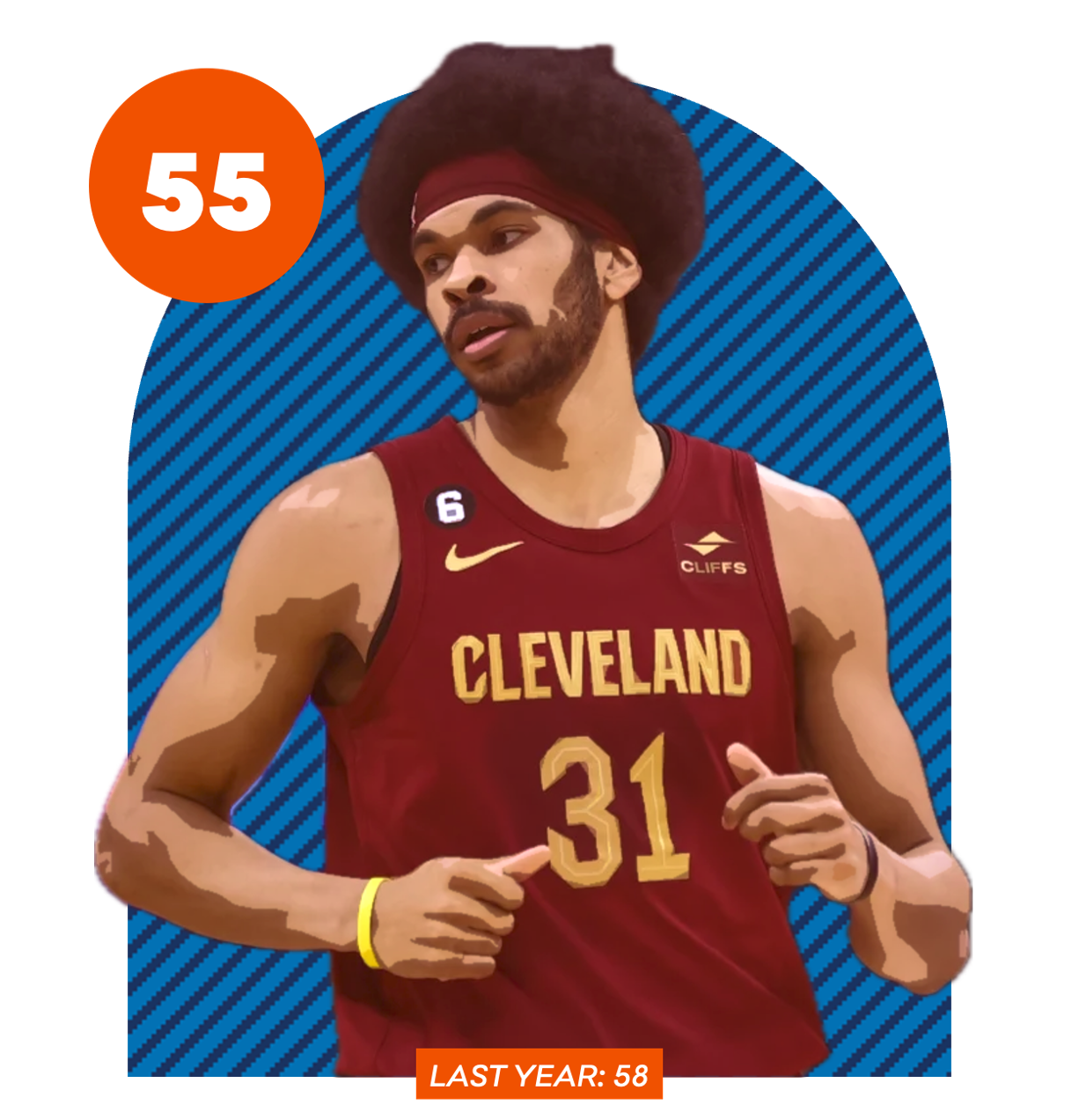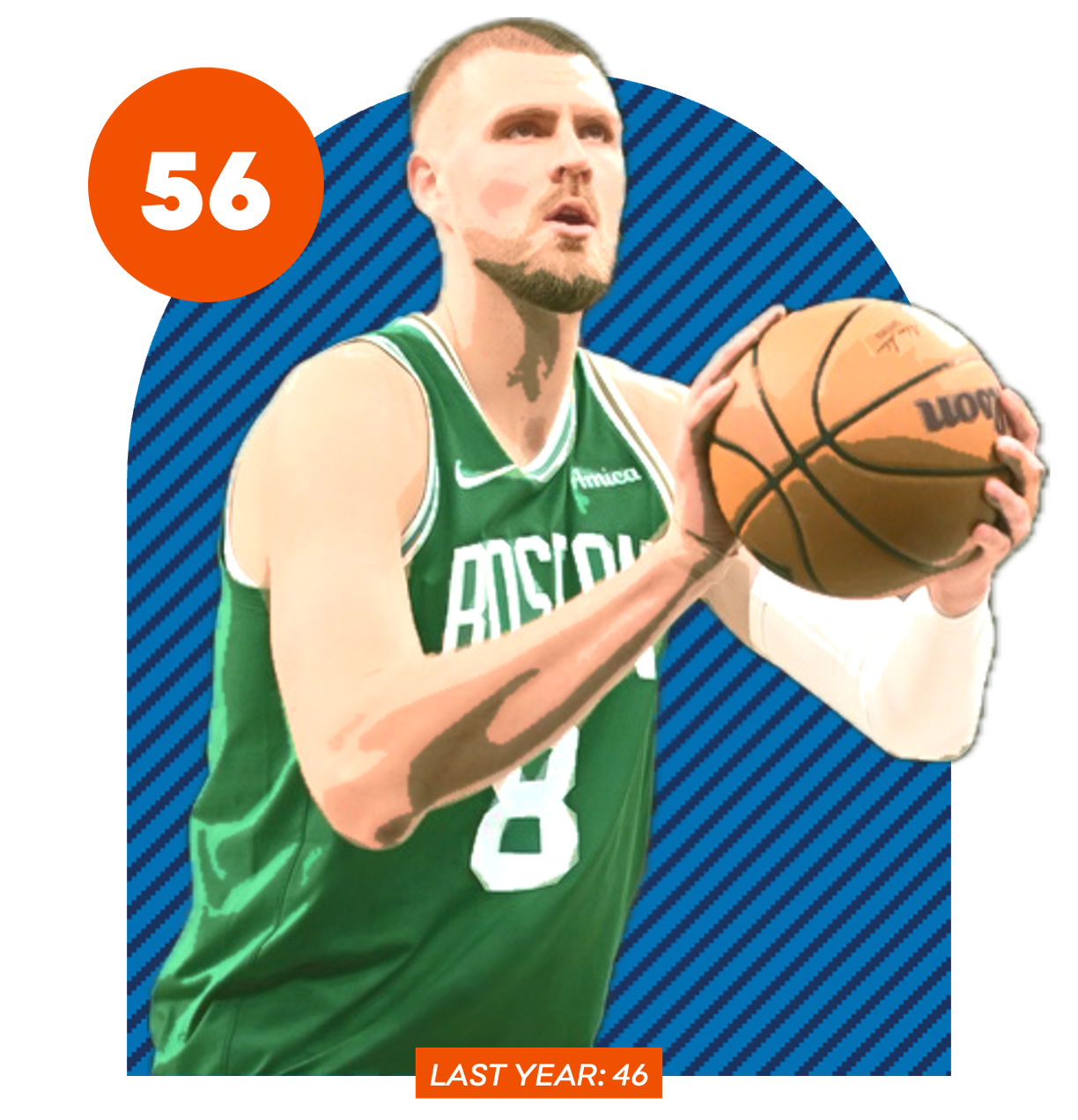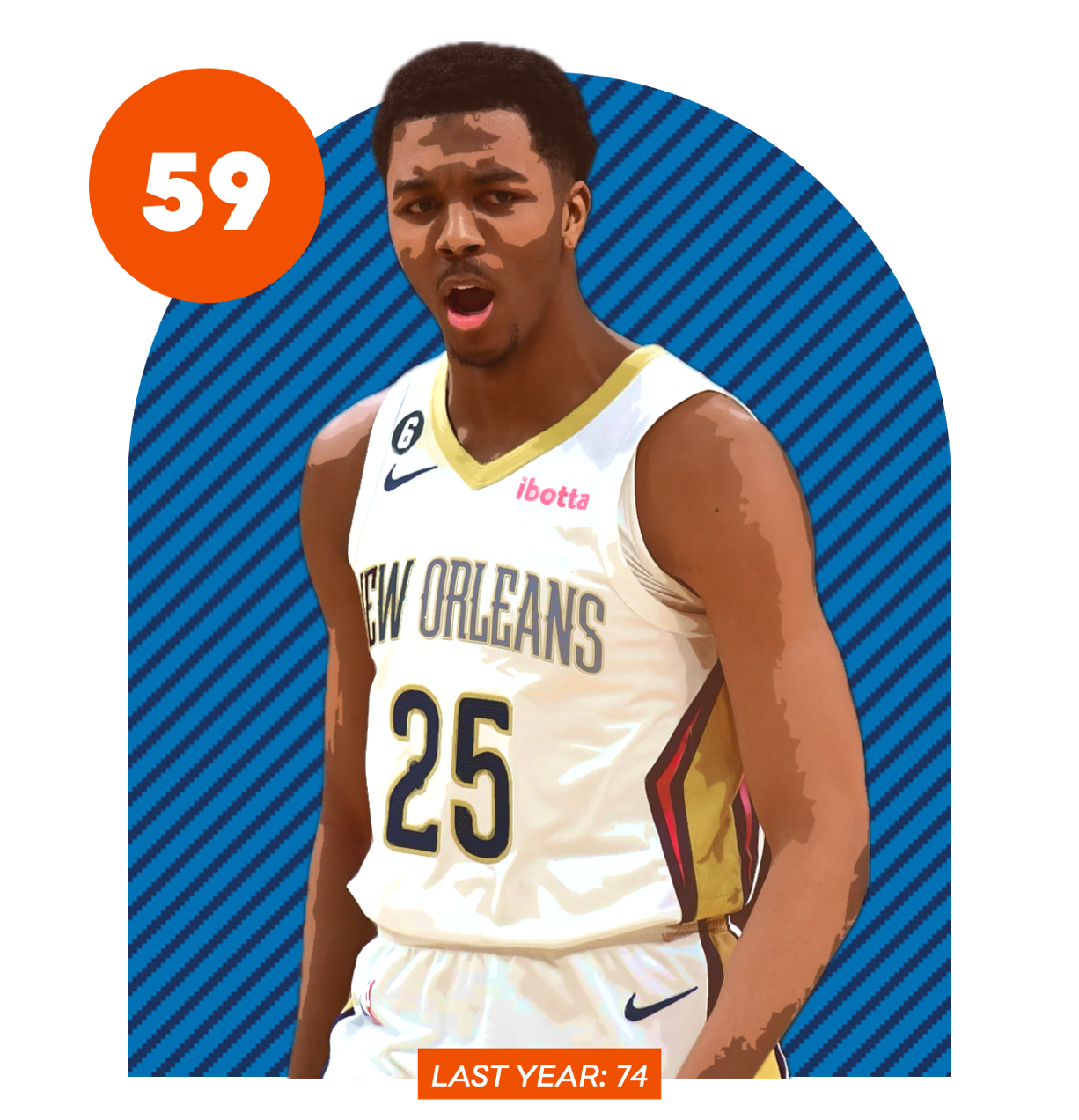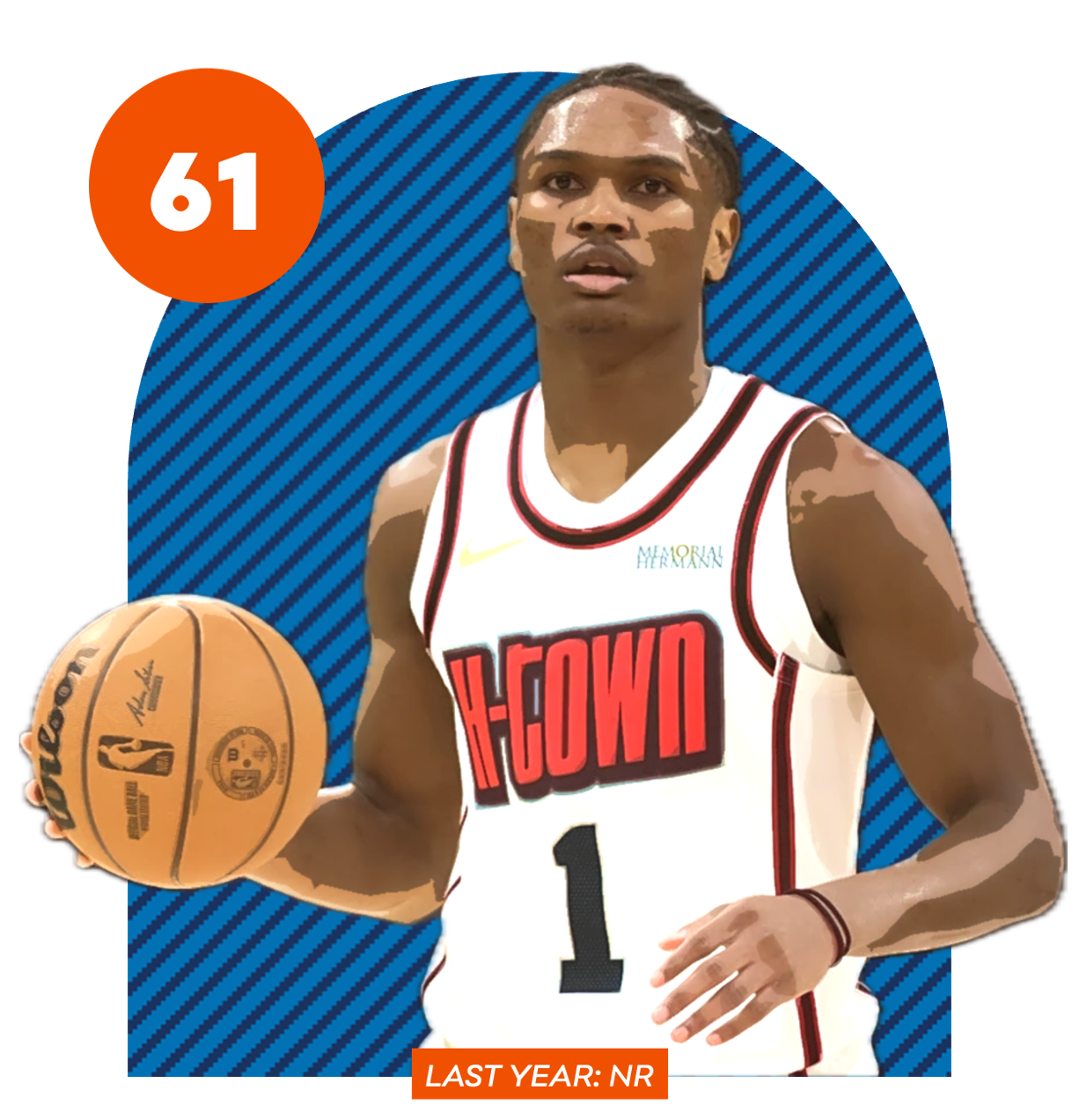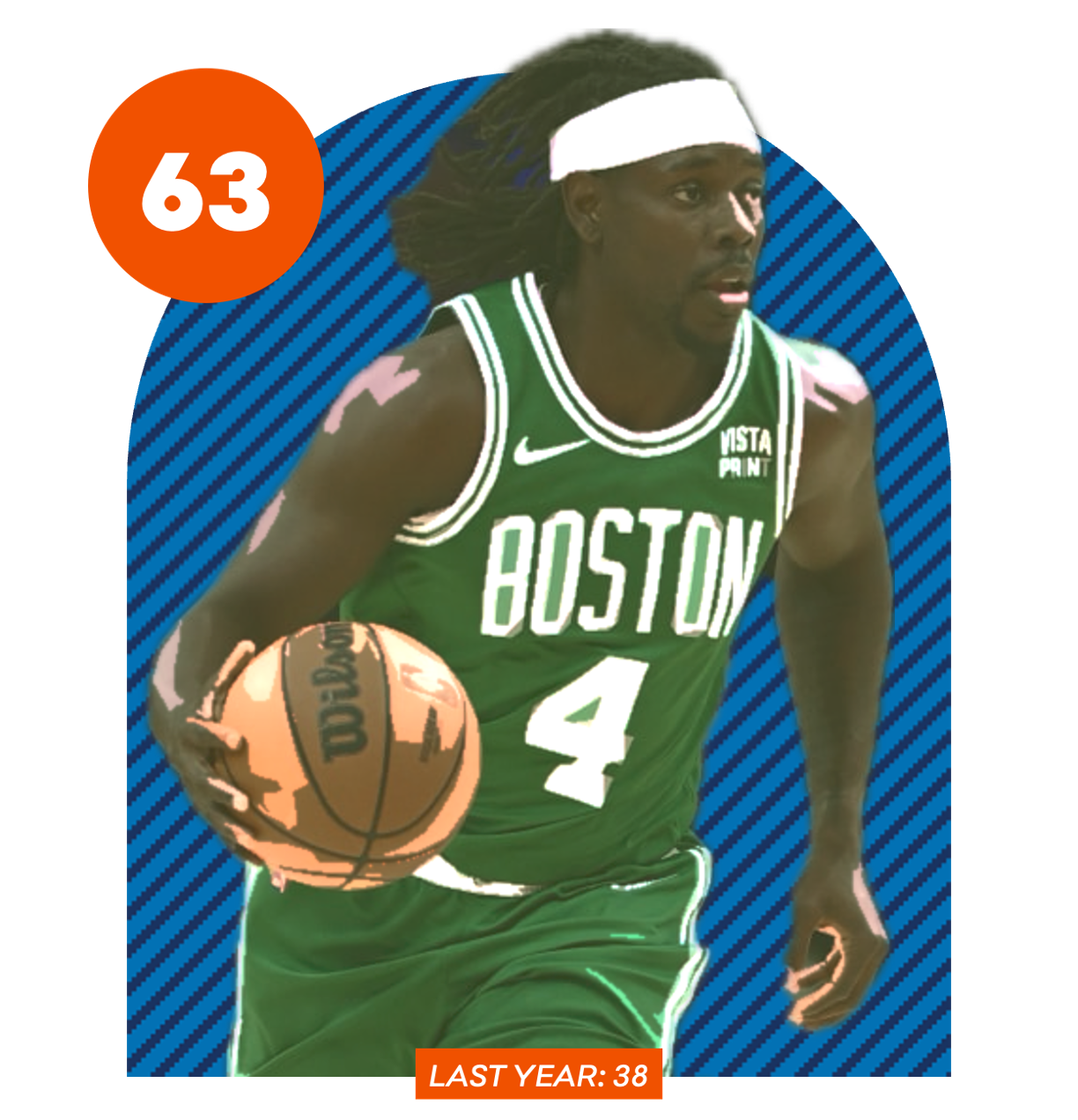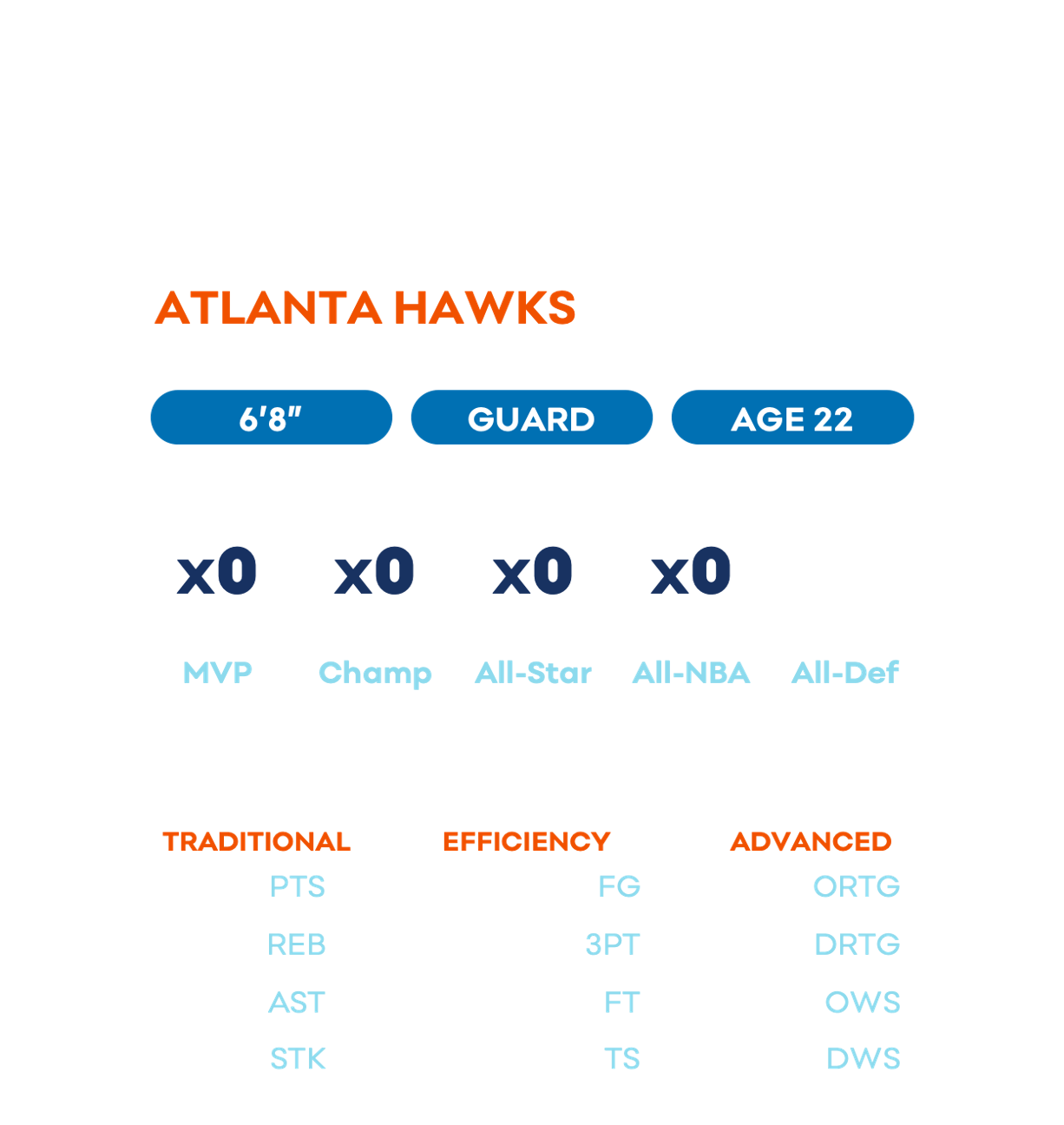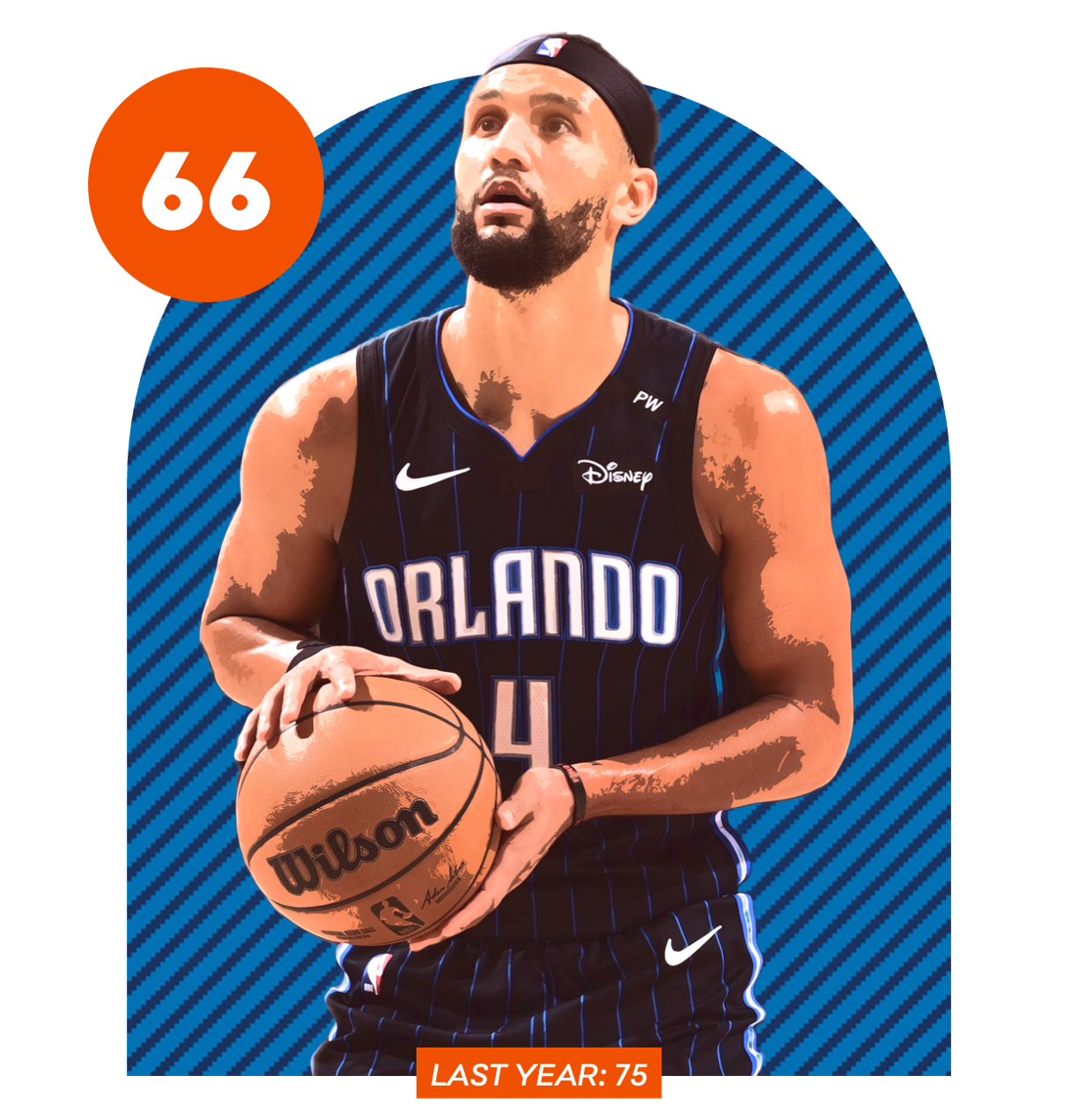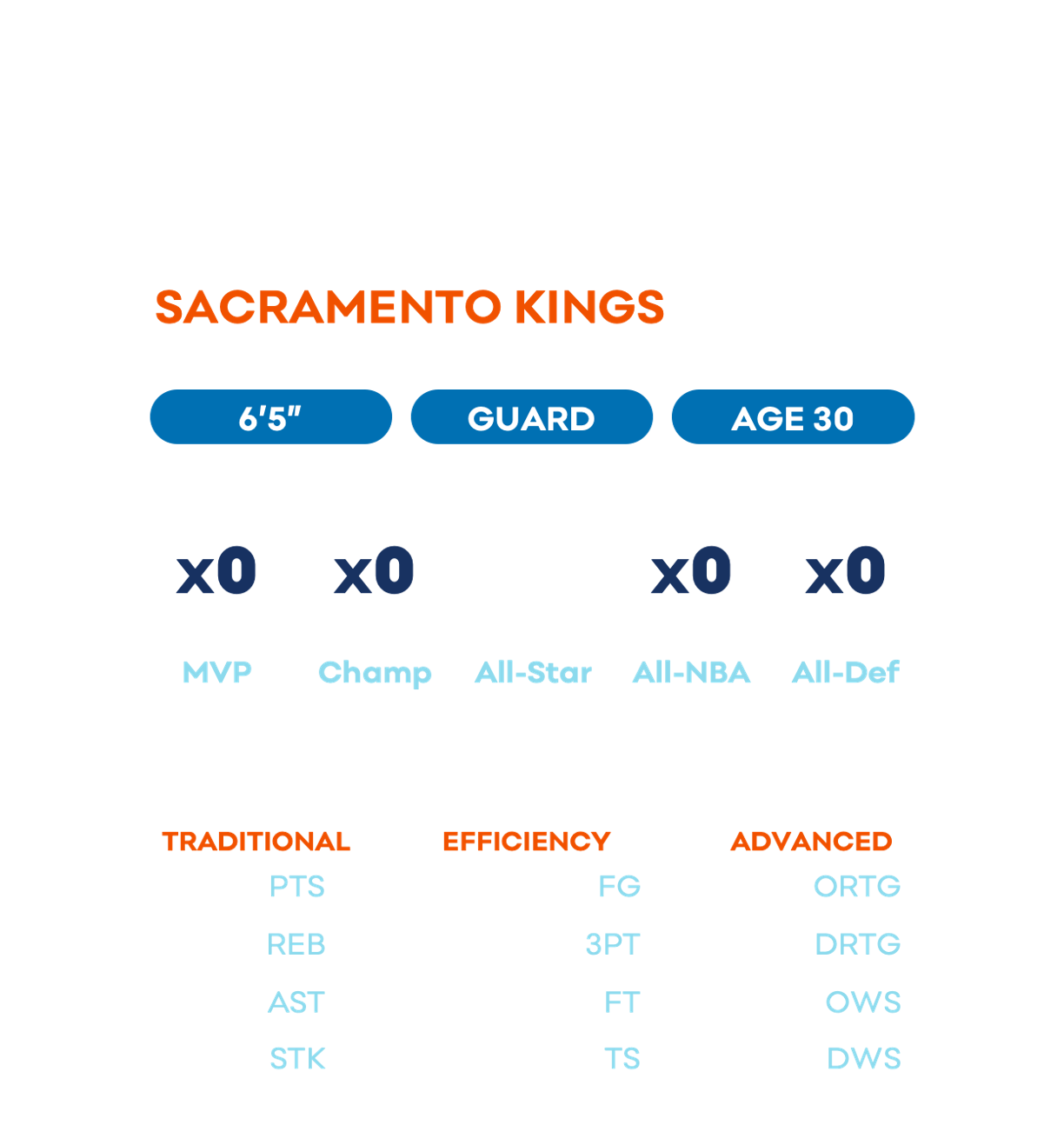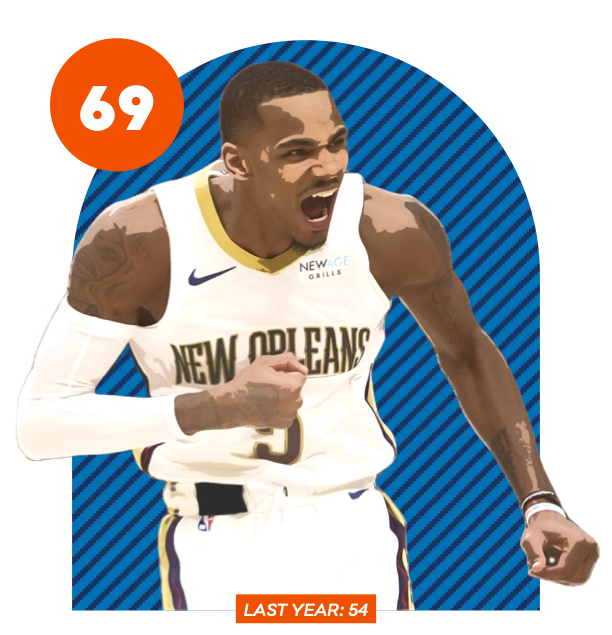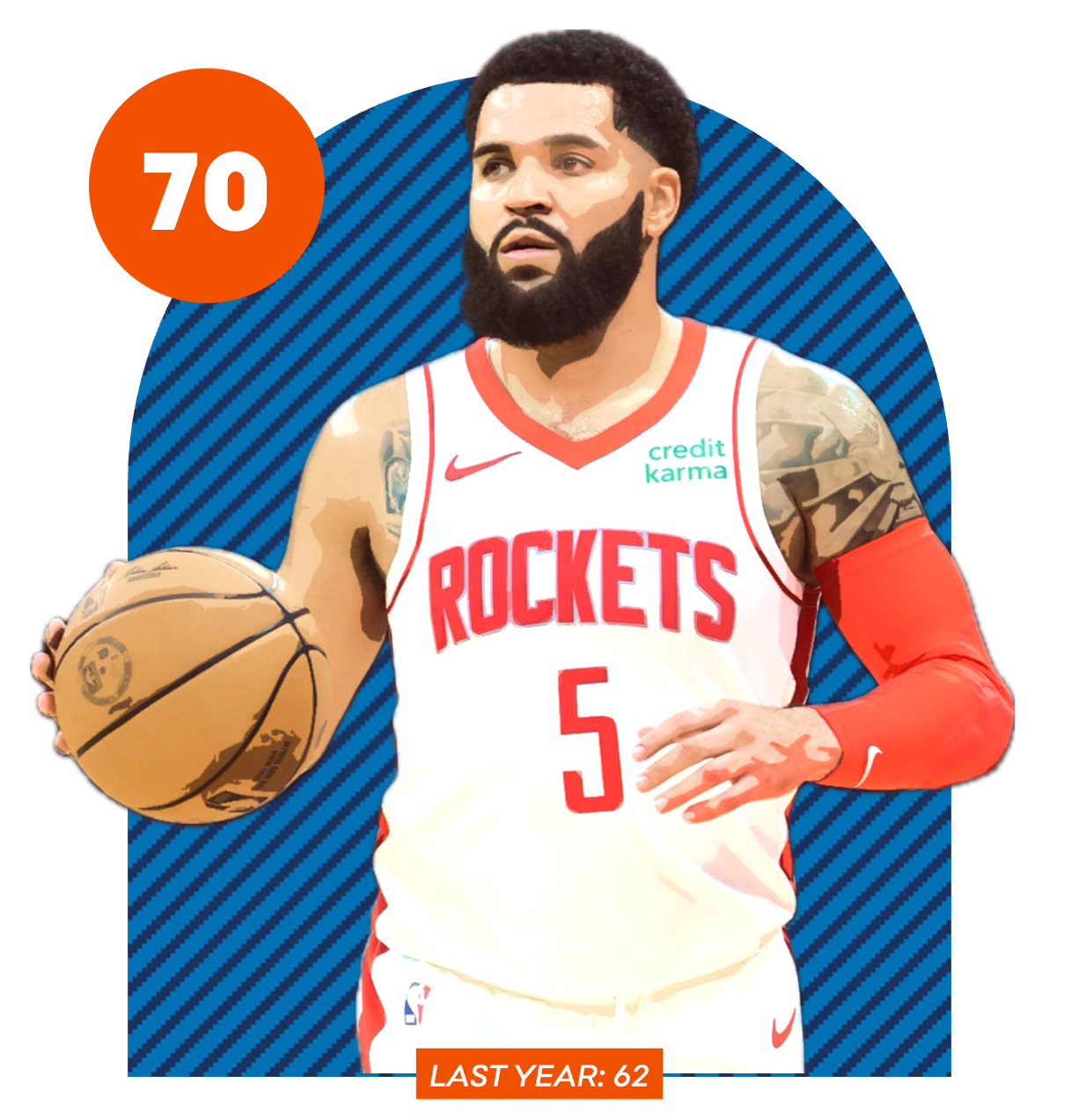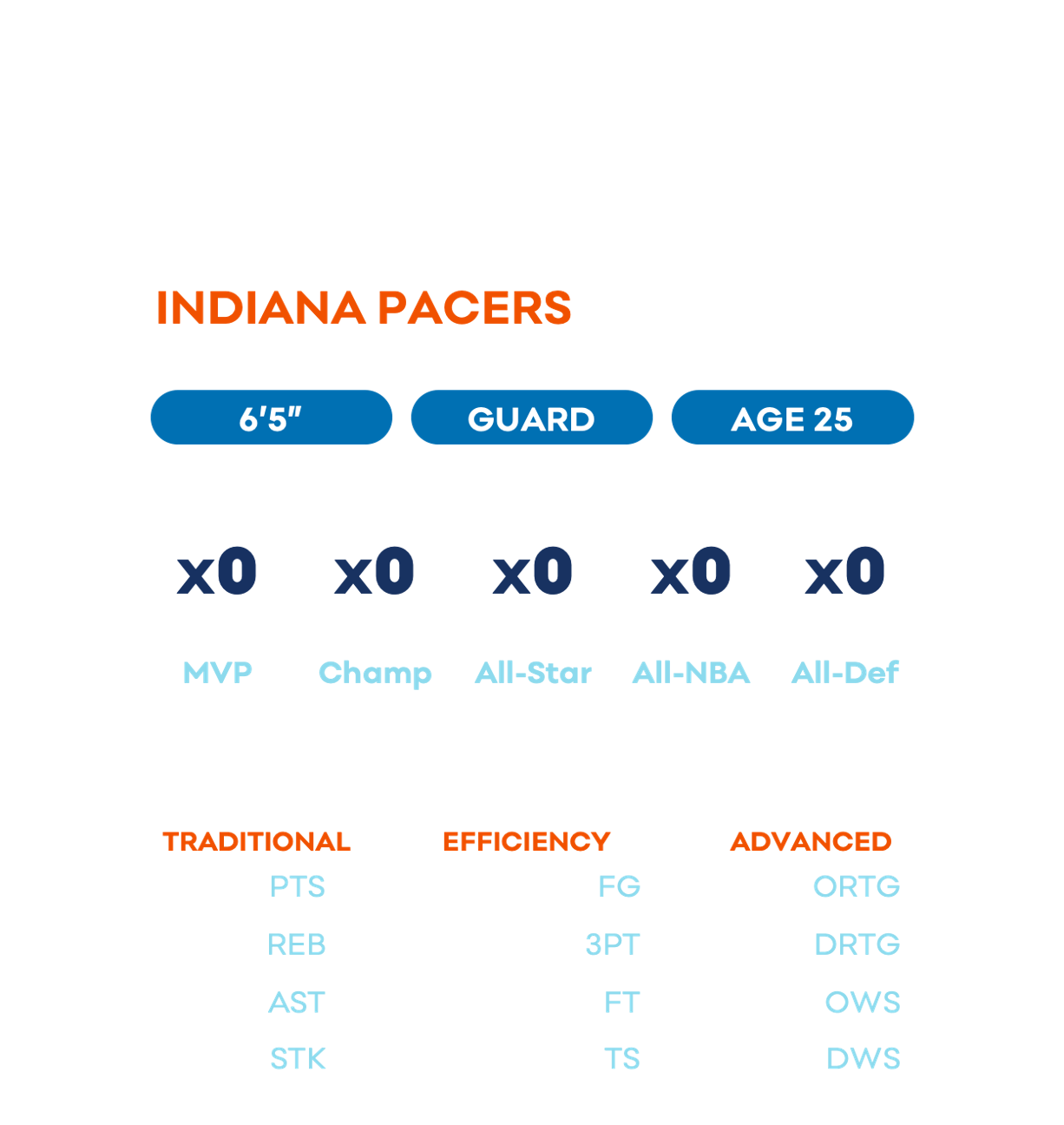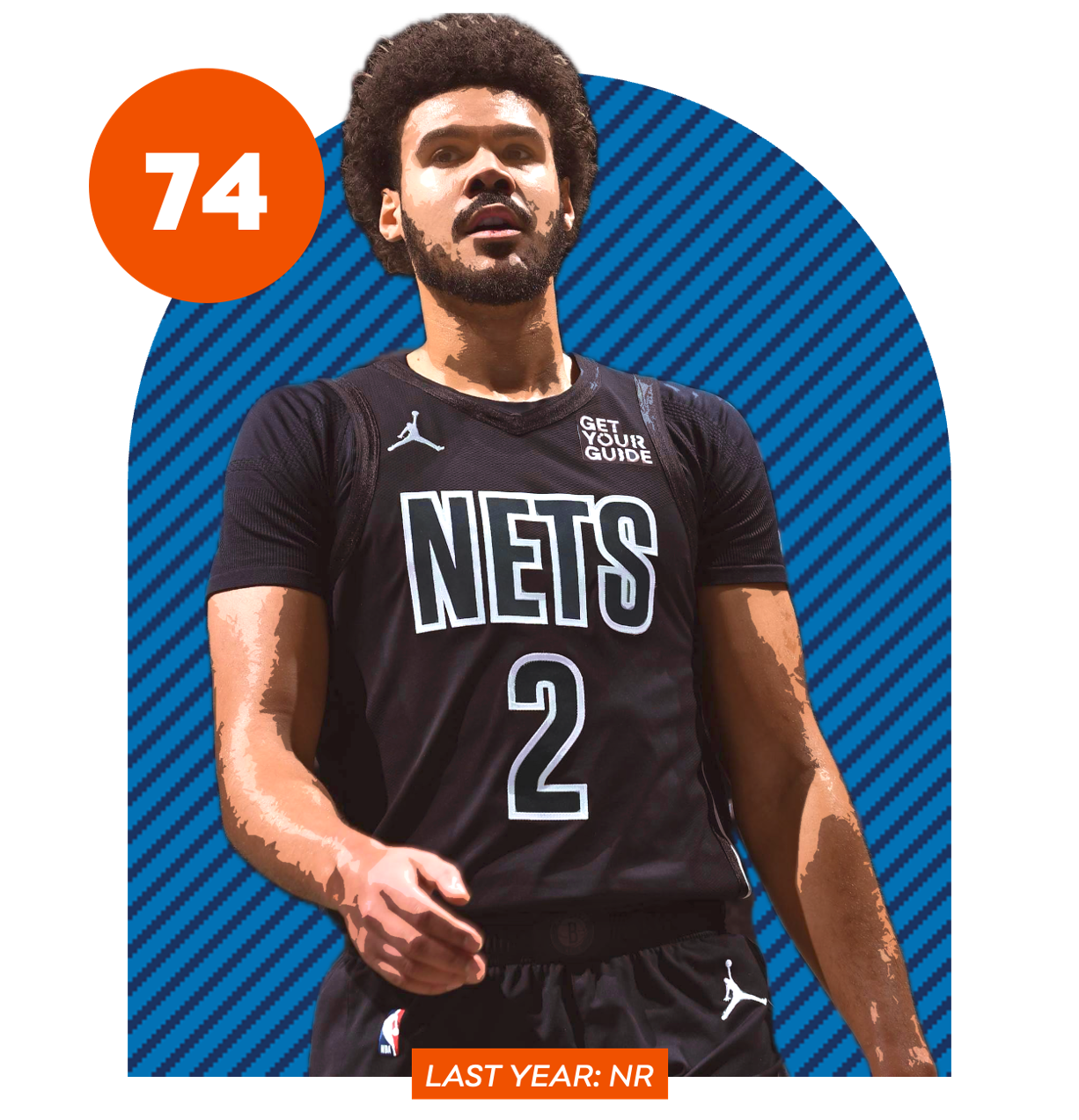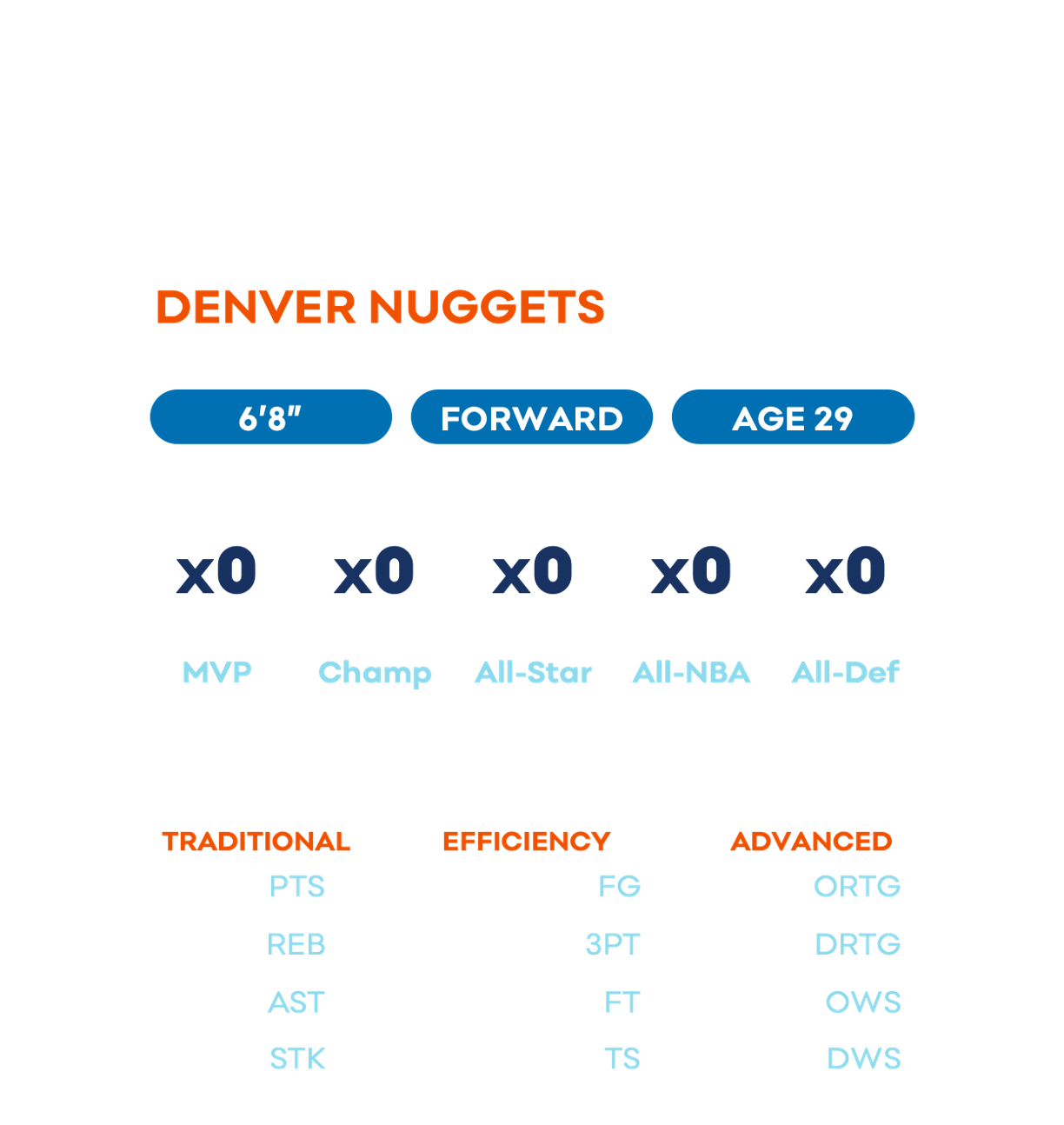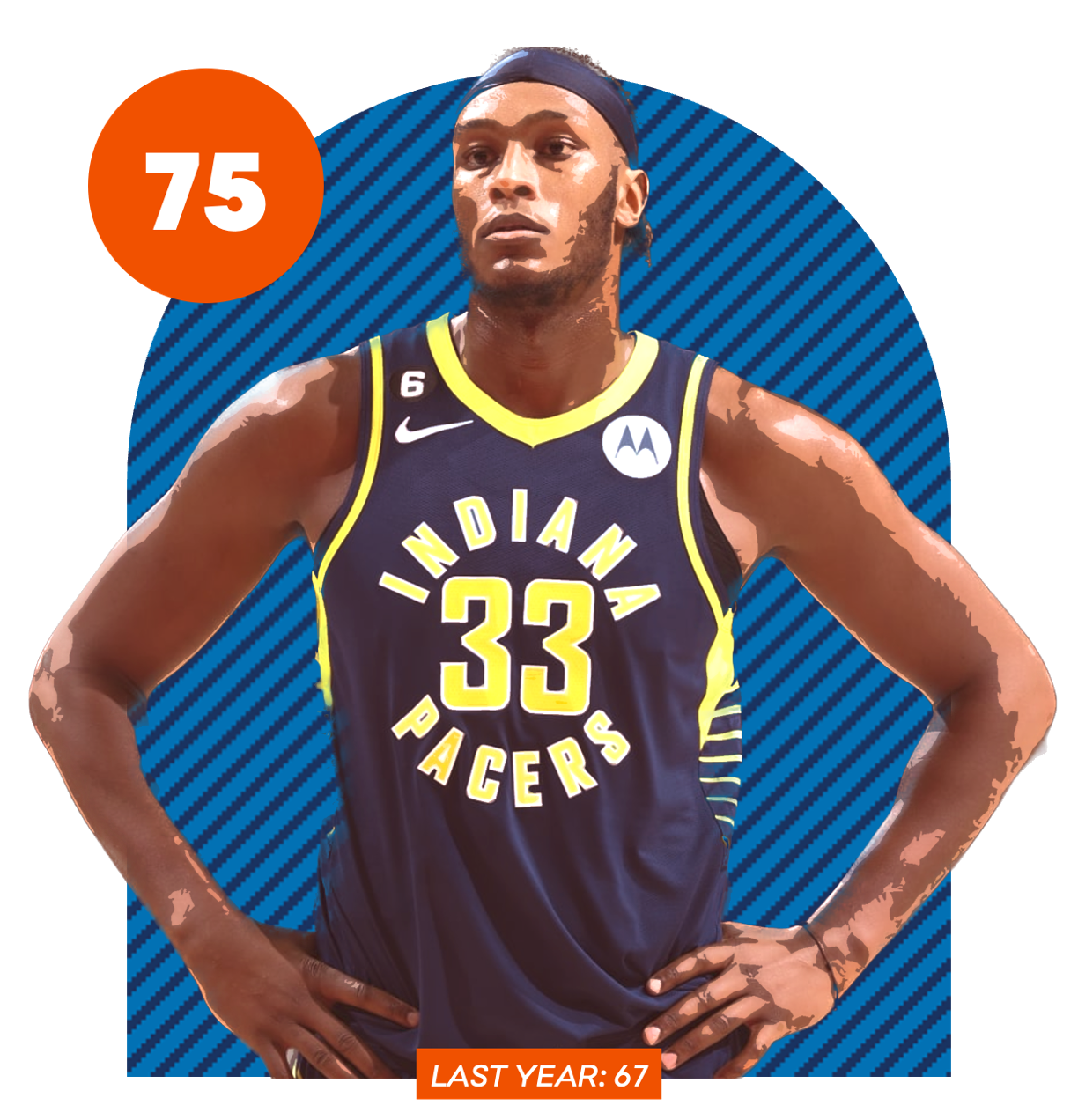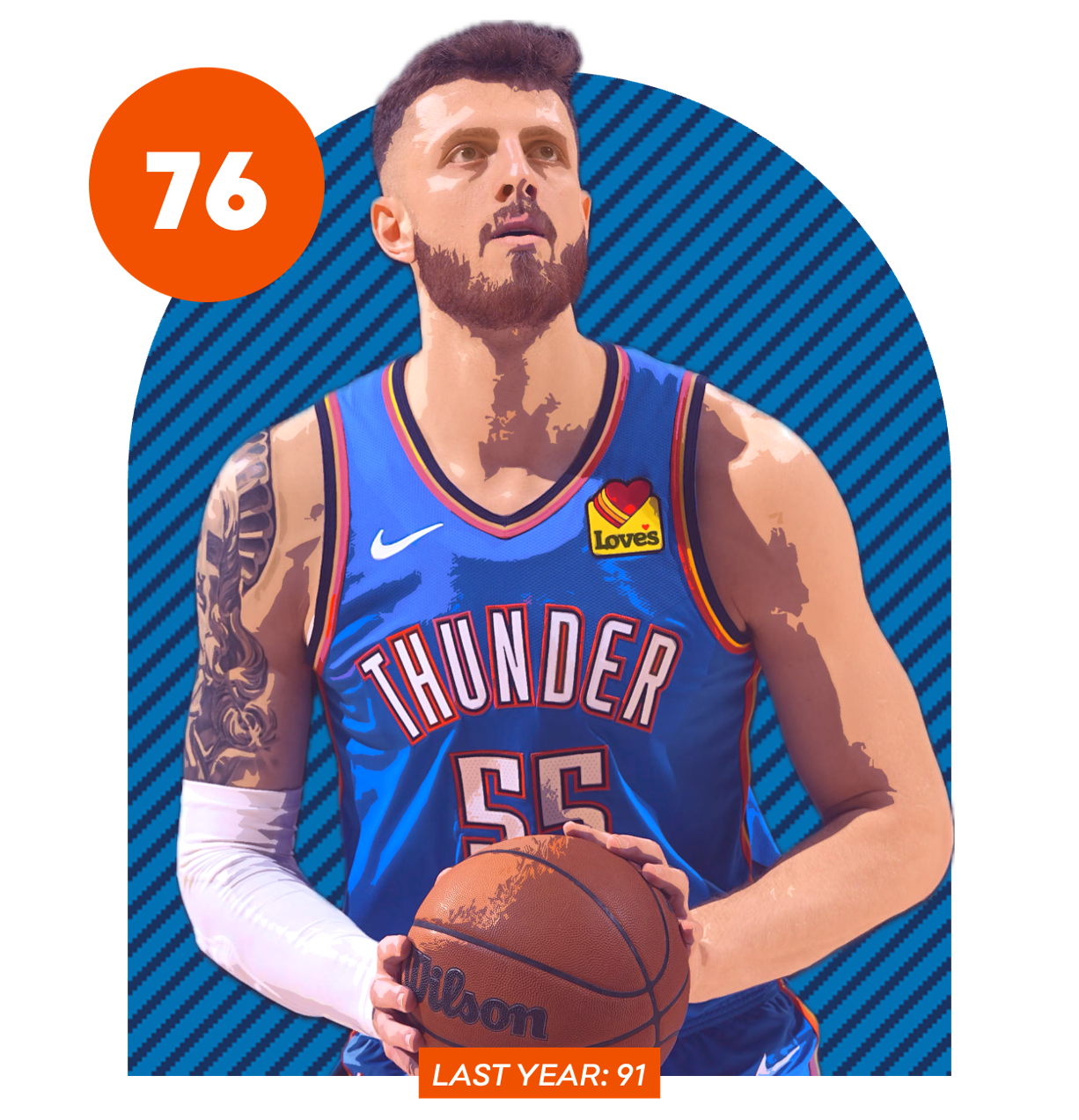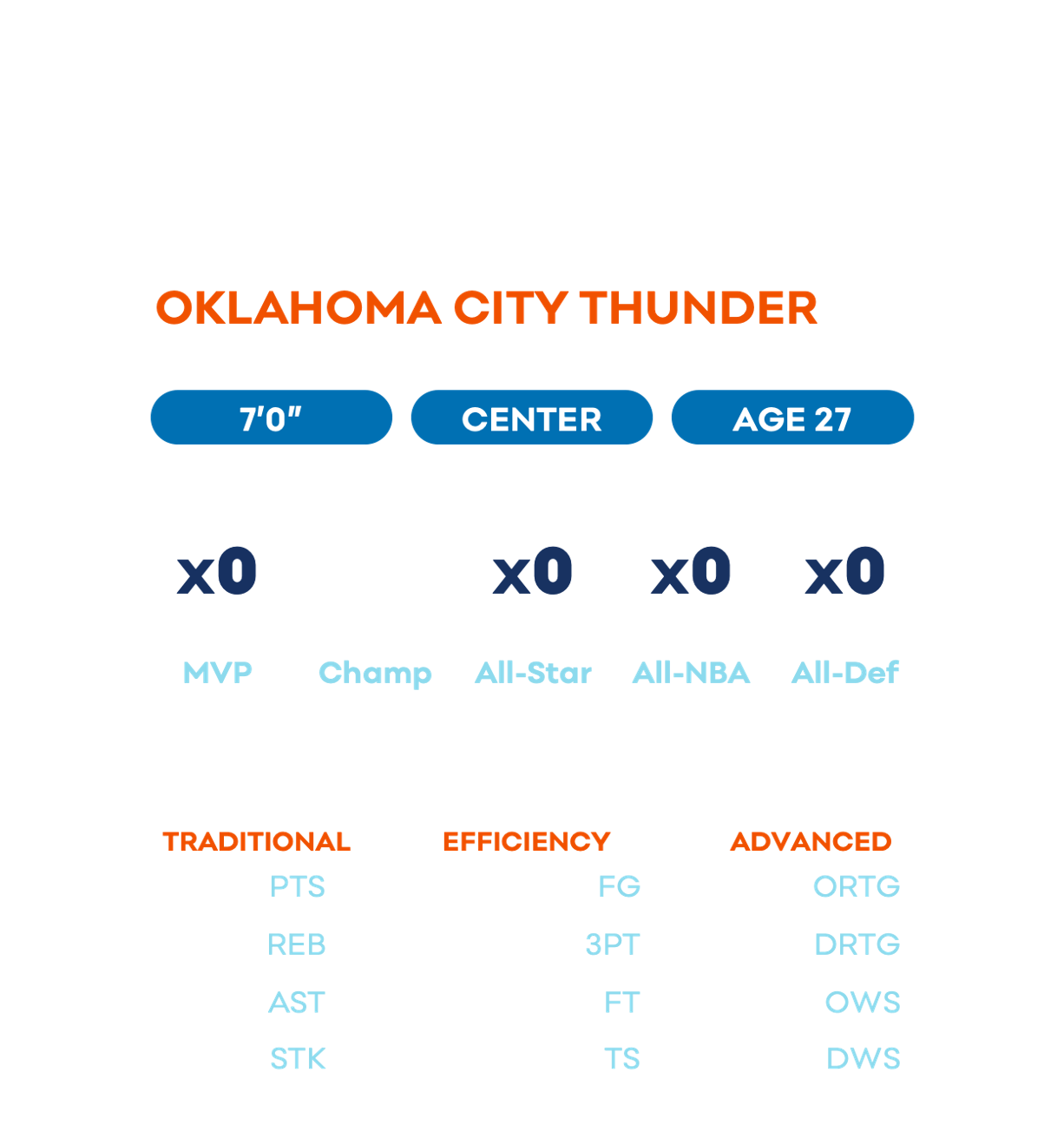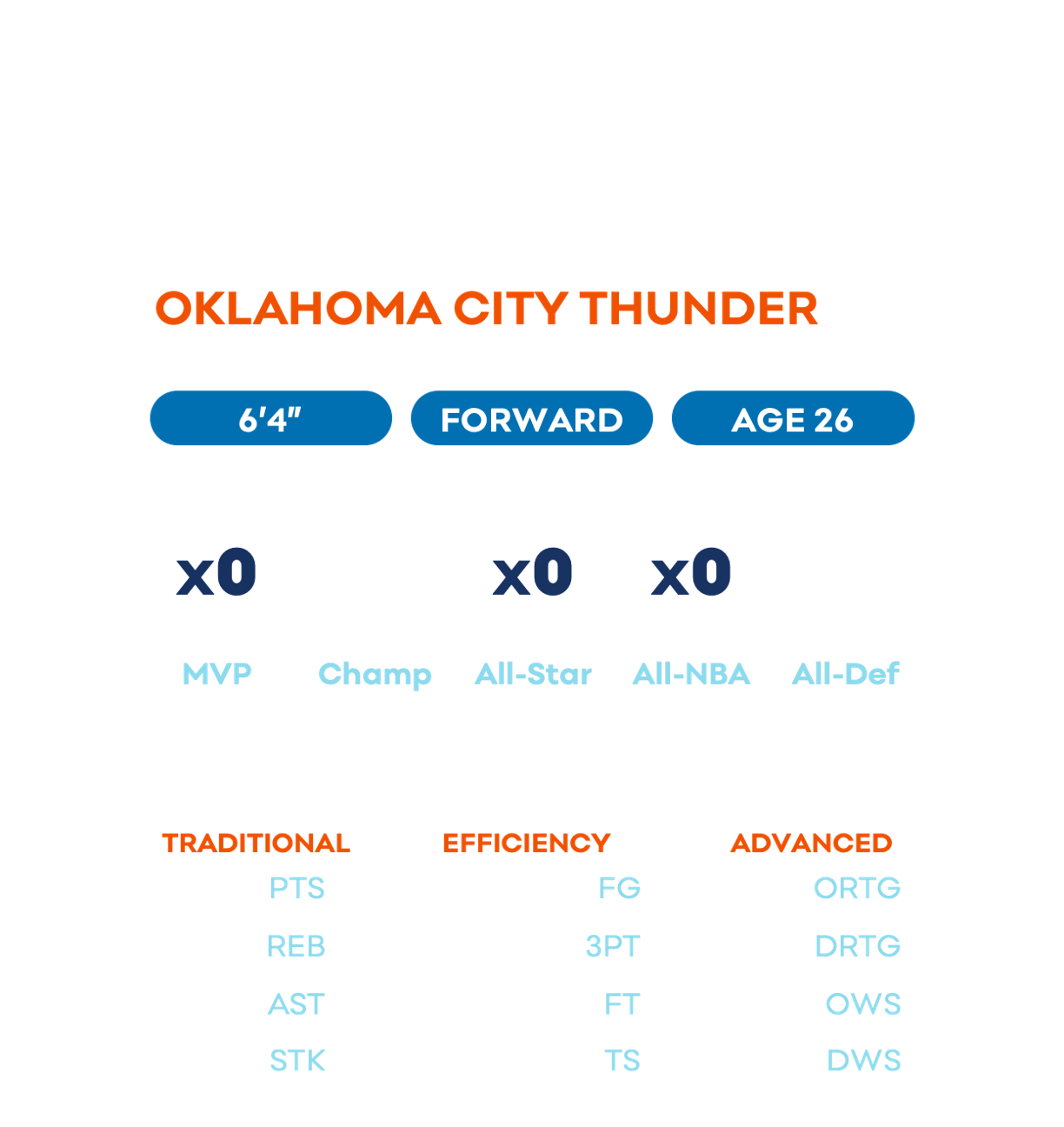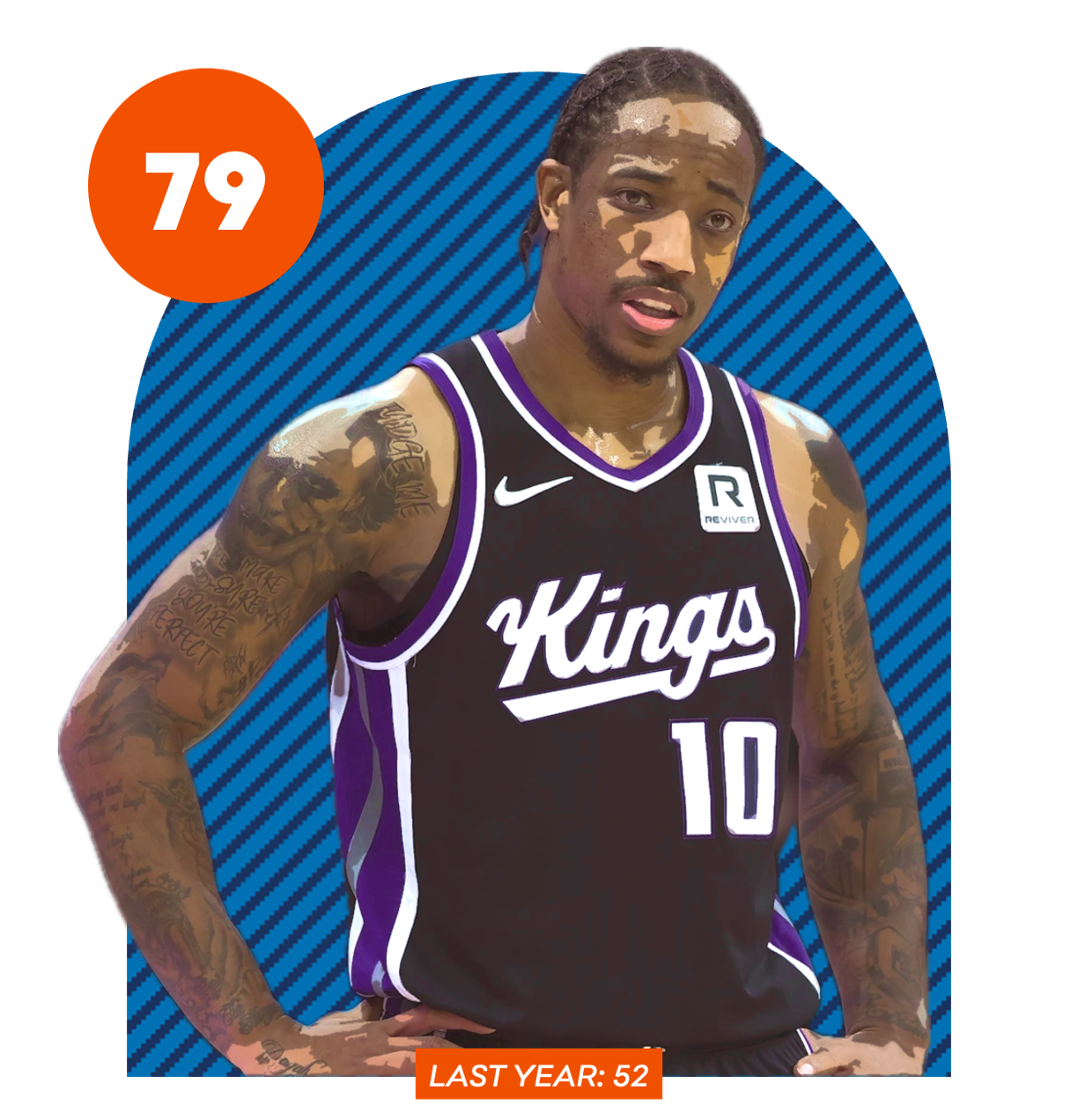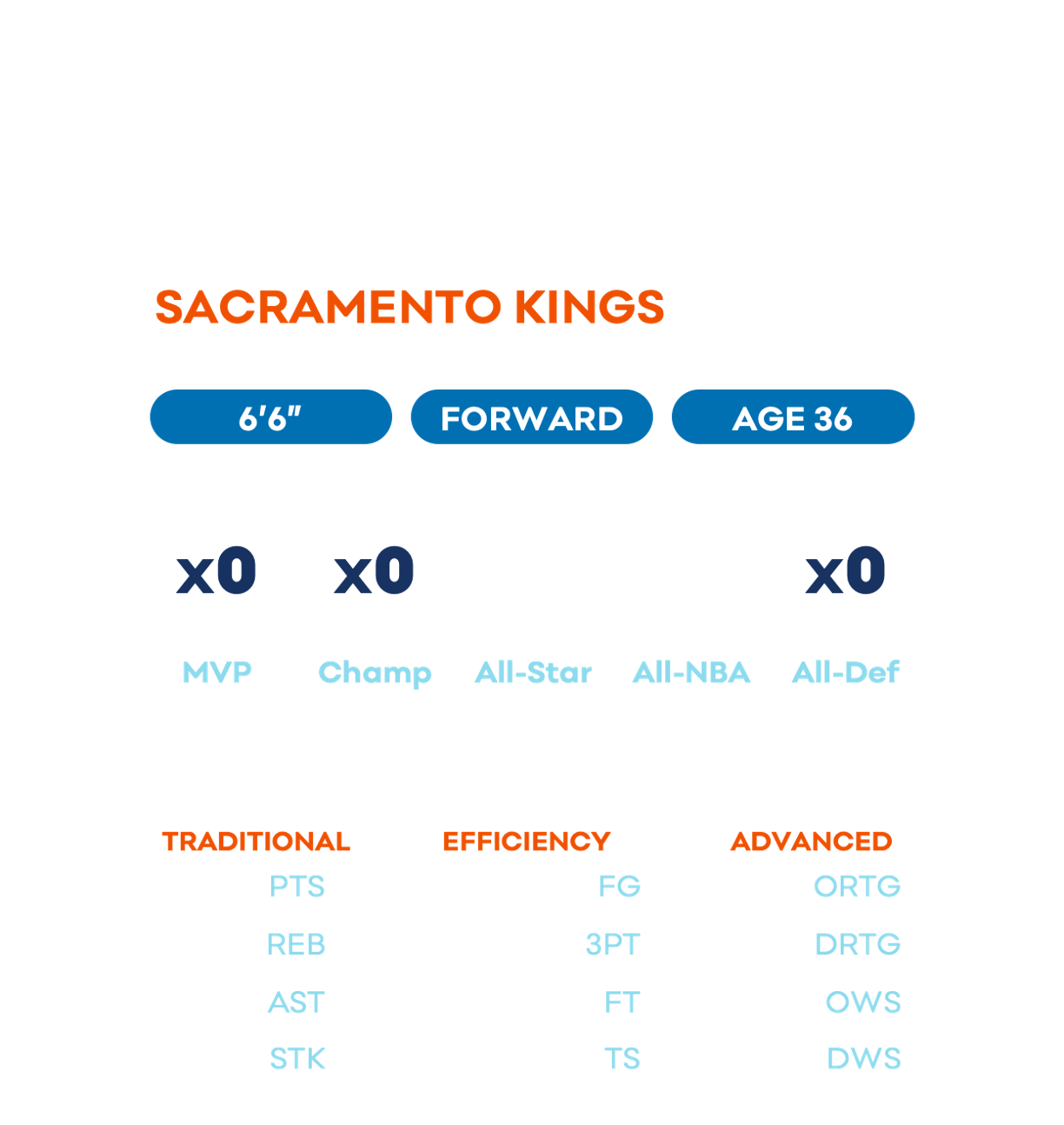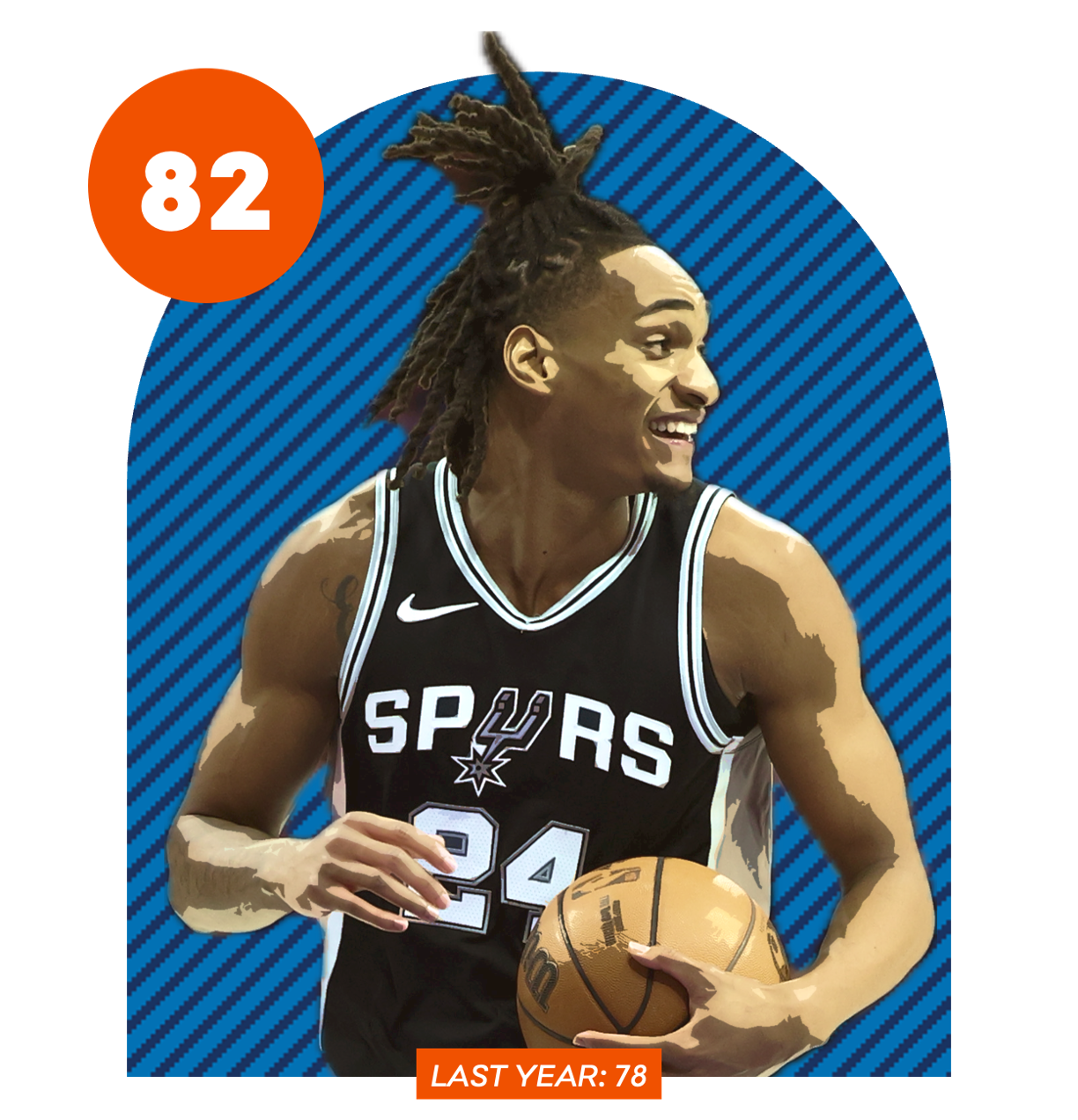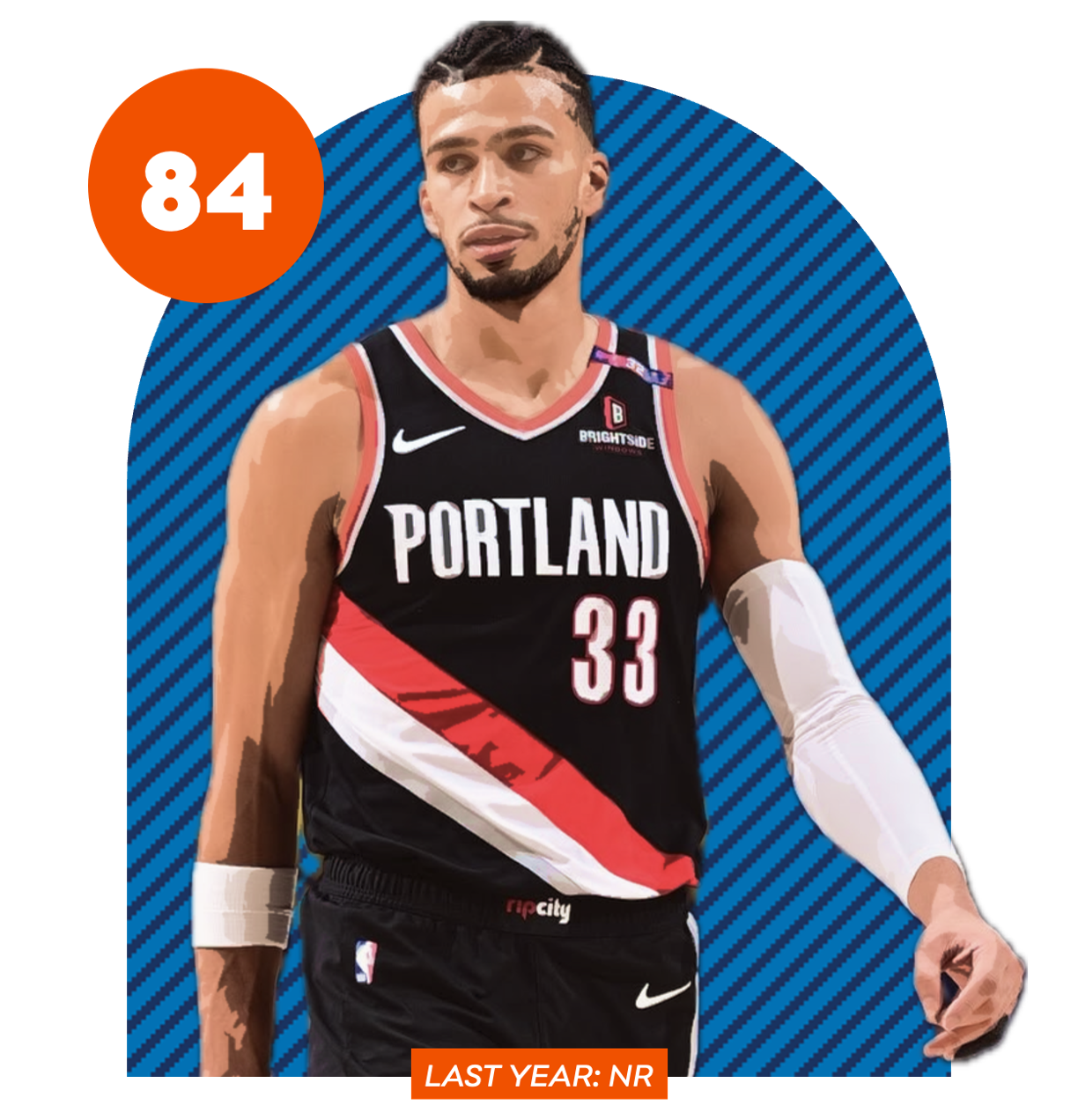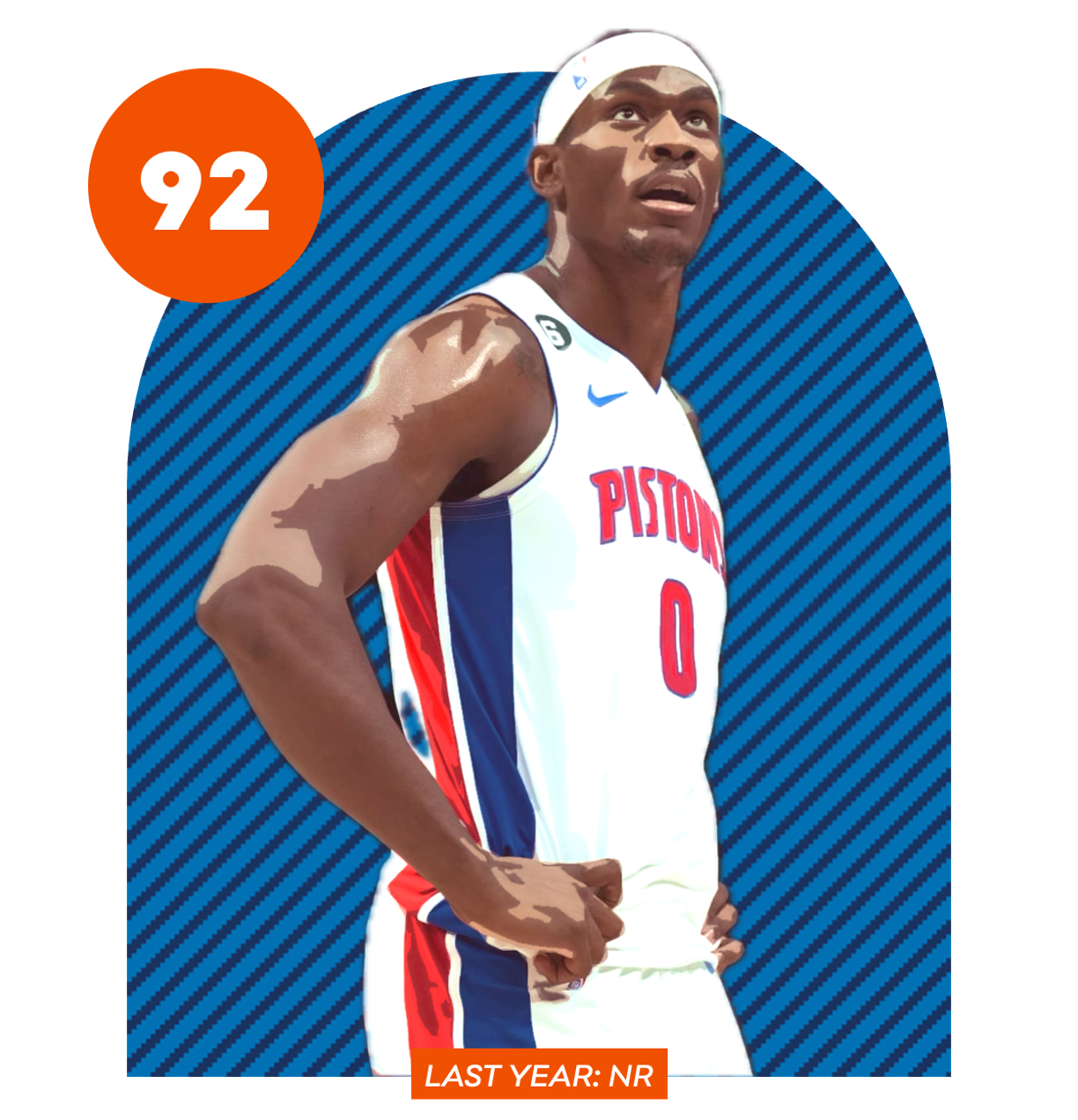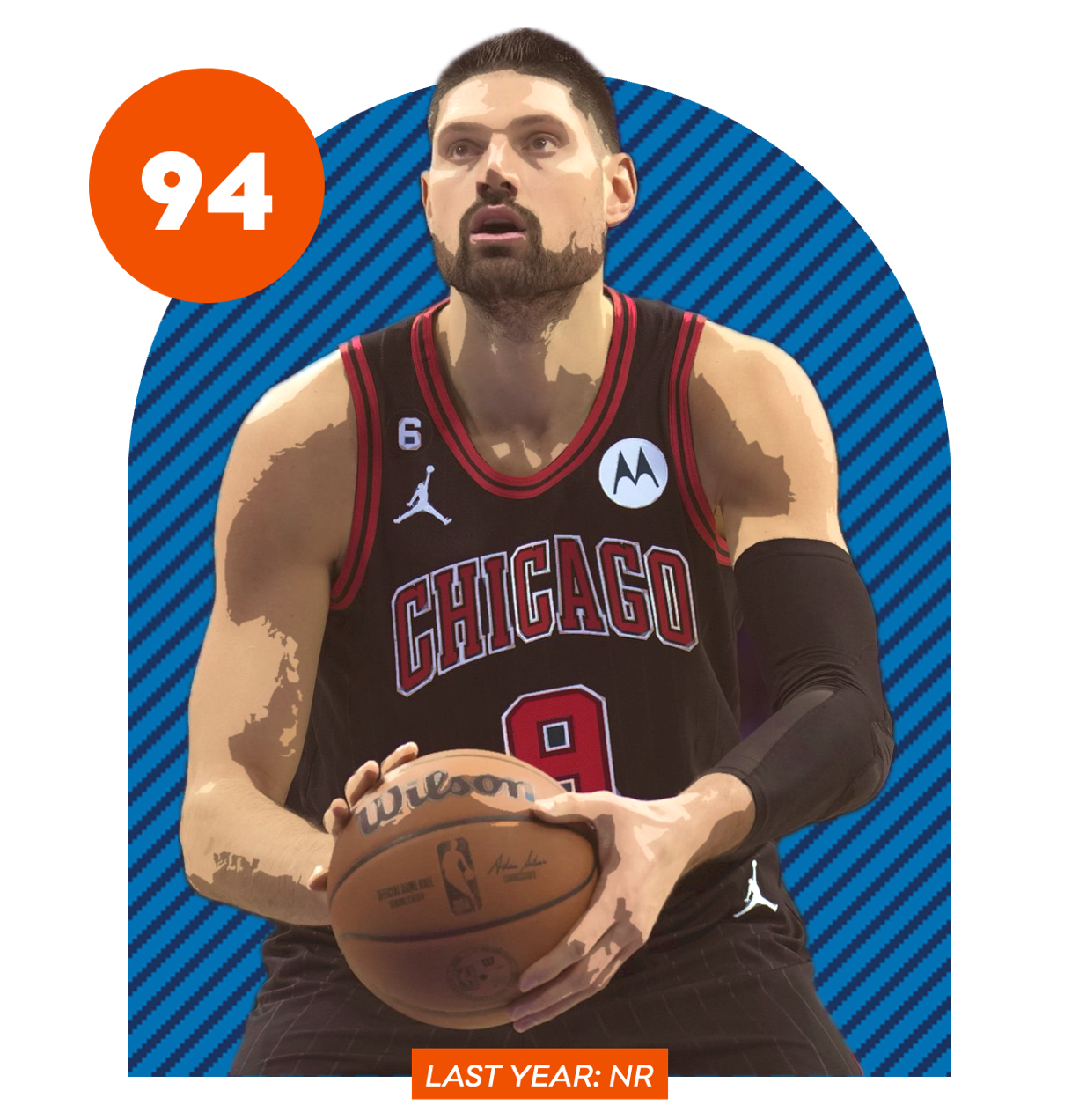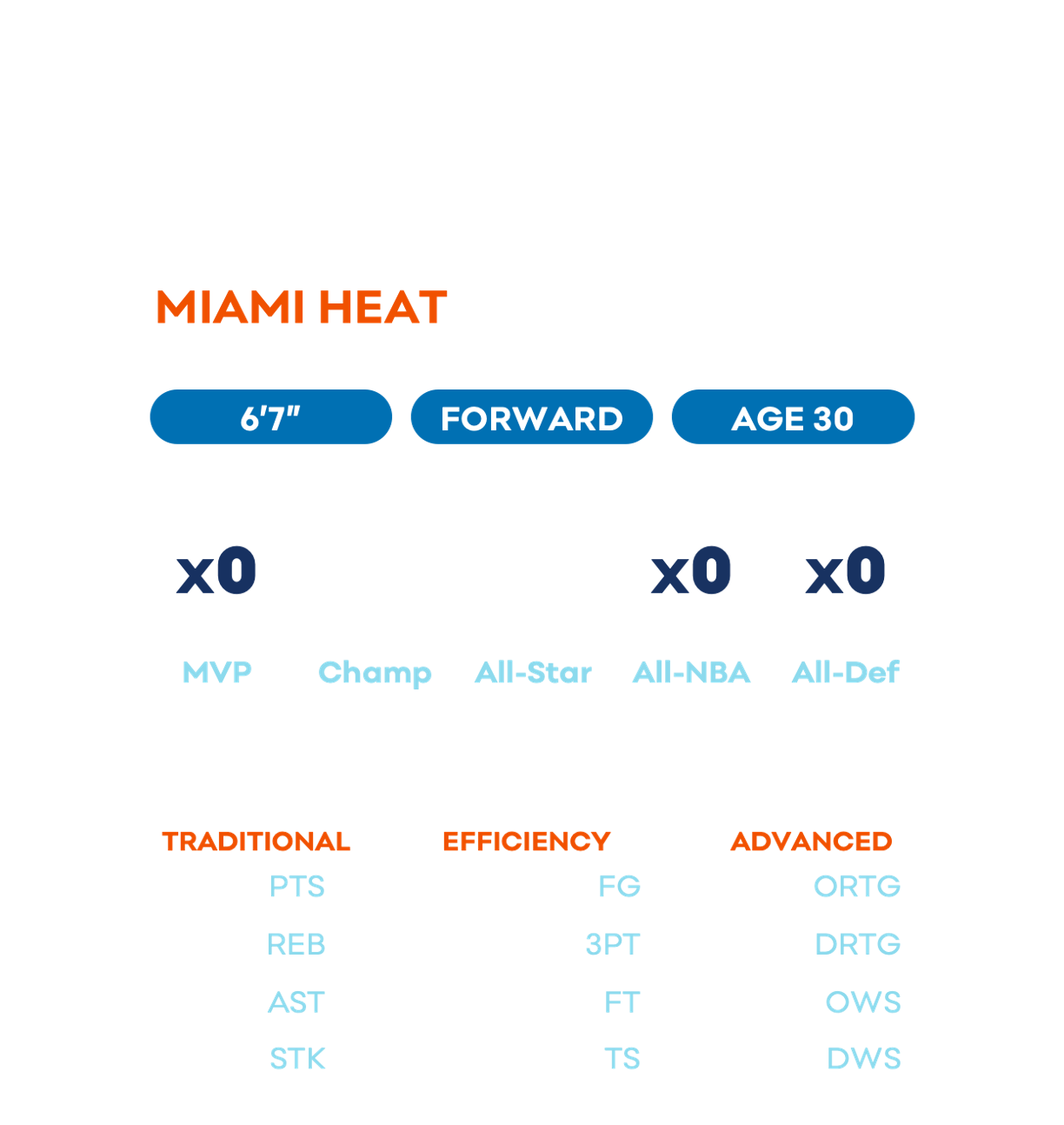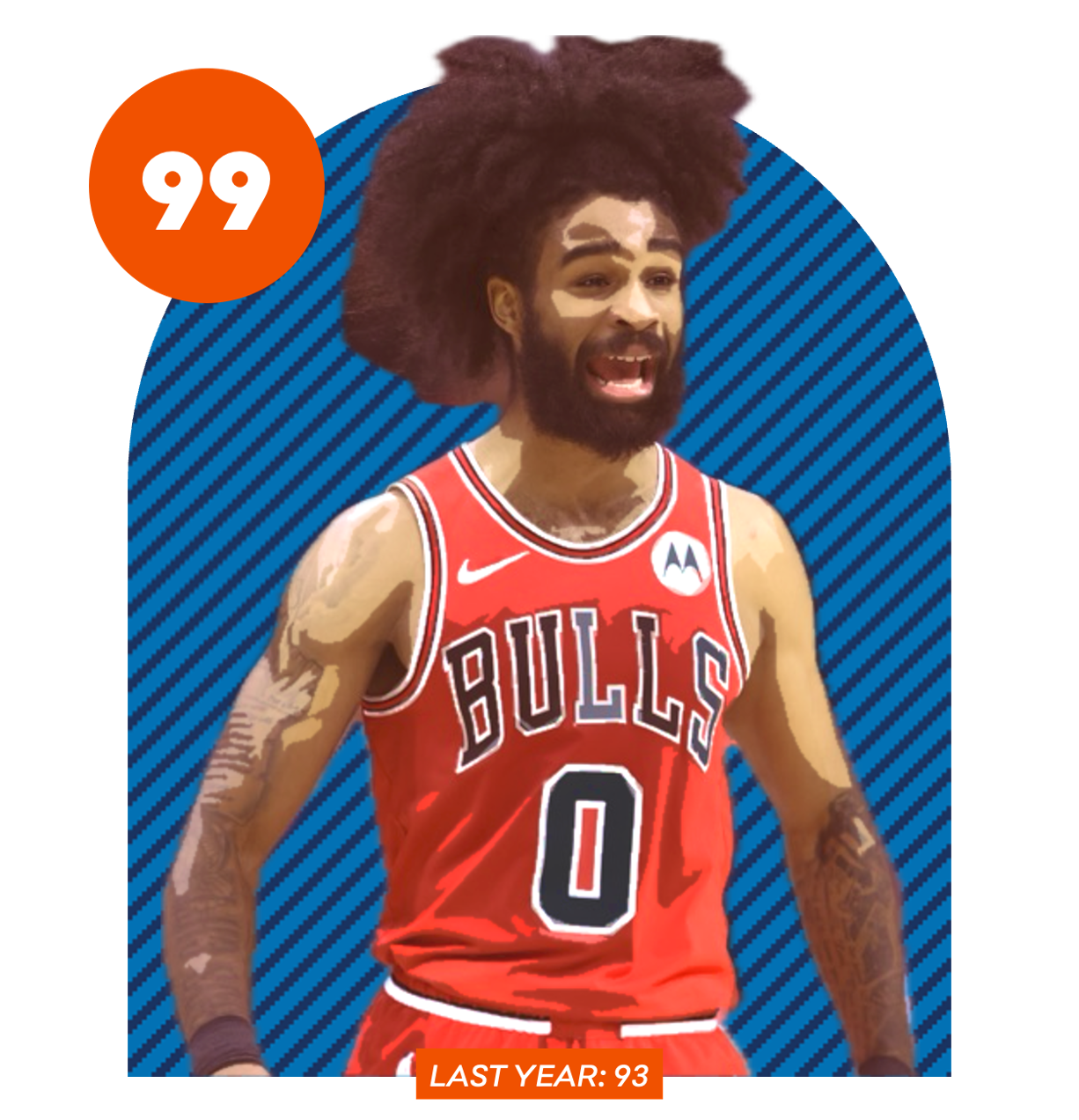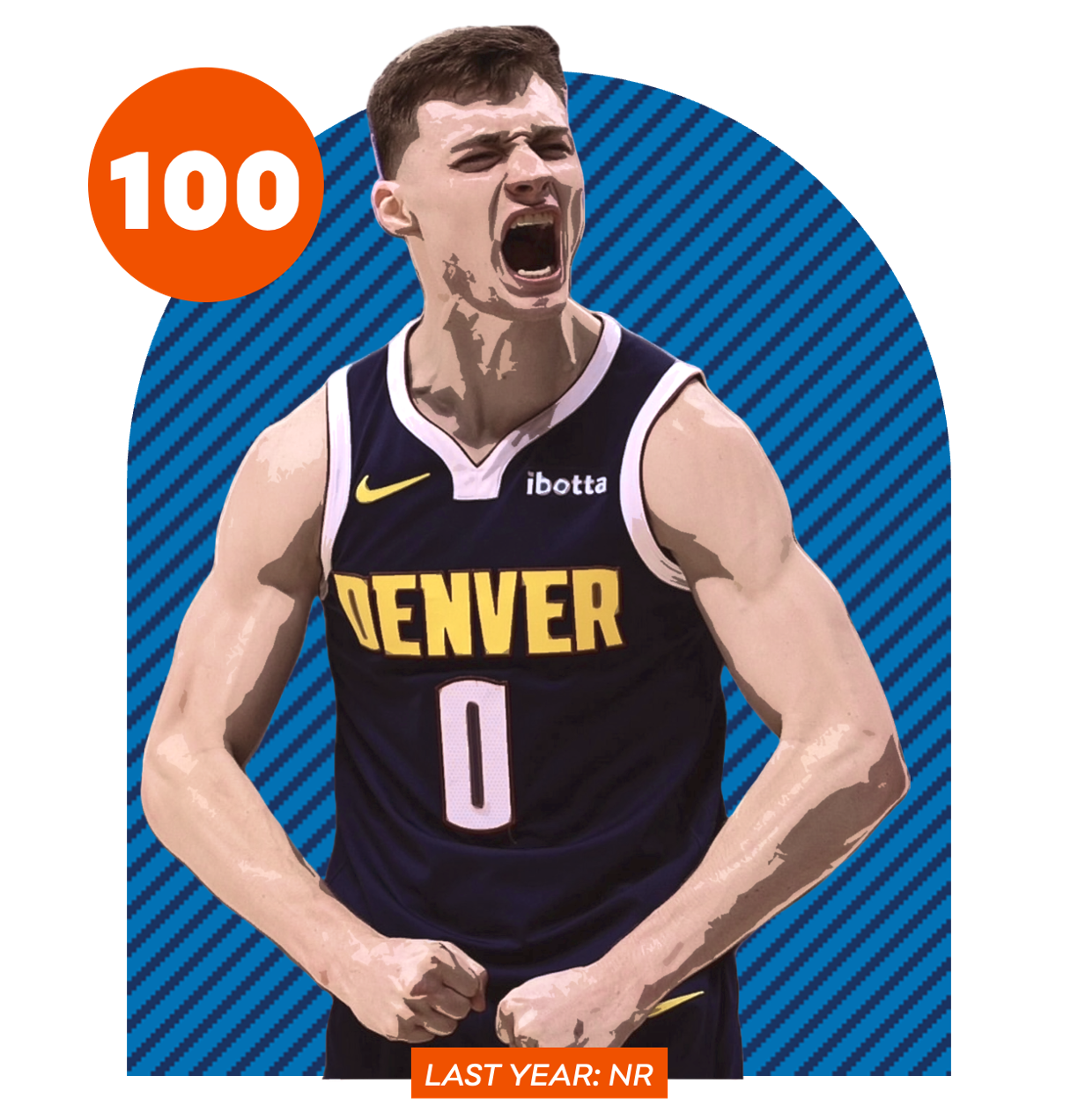NBA Top 100 Players
The top 100 NBA players in 2025—examined, evaluated, and ranked.
A ranking of the top 100 NBA players following the 2024-25 season. These are not “projections” for where each player will be at the end of the upcoming 2025-26 season, but simply an evaluation of each player—right now—based on their current resume and what we’ve seen from them to this point of their career. All factors are taken into account—individual accolades, stats, advanced metrics, team success, durability, and overall perceived impact on winning. Incoming rookies are excluded for this exercise.
Interested in seeing how everyone stacked up last year? Check out previous year’s rankings:
2024 2023
-
Jokic continues to ascend the all-time ranks as he remains in the midst of one of the greatest individual primes the NBA has seen. Already a three-time MVP—a feat that only nine players in NBA history have achieved—he’s coming off a year in which he averaged a near 30-point triple-double, posting career highs in points, assists, and 3-point efficiency, while continuing to break the brains of basketball nerds with his cheat-code-level advanced stats. Offensively, the Joker has no weakness. He is probably the best passer in the game, has genius-level basketball IQ, is automatic as a finisher anywhere remotely near the paint, an elite rebounder on both ends, and a true “pick your poison” player. Play him straight up? He’ll have no problem scoring at will every time down the court. Send a double his way? He’s finding the open man every time. He remains one of basketball history’s best individual offensive hubs. But with a depleted supporting cast, Jokic has failed to make it out of the second round in back-to-back years, so with Denver reloaded this coming season, the pressure will be on to bring the Nuggets back atop the mountaintop.
-
Although Nikola Jokic remains atop these rankings for the third consecutive season, Shai gave him some extremely stiff competition for the number-one spot this time around. SGA put together a truly historically great season for a guard this past year—joining Magic Johnson and Michael Jordan as only the third guard in NBA history to win both the regular season and Finals MVP in the same year. On top of that, he was the scoring champion and led the Thunder to 68 wins and one of the best start-to-finish dominant seasons we have seen this century. He’s now averaged an unbelievably impressive 31.4 points on 52.2% from the field over the past three seasons combined and has established himself as perhaps the best pure scorer in the league despite being someone who gets his points within the flow of the game. Shai lives and dominates in the midrange, is an elite finisher, a solid playmaker, plays on both ends of the court, and is perhaps the best foul-drawer in the league. Still firmly in the middle of his prime, the sky is the limit for what Shai can accomplish on a team hopeful for a dynasty.
-
The sports world’s overwhelming response of shock and disbelief to Luka being traded tells you all you need to know about how good he is as a player. Only seven seasons into his career, Luka’s résumé from a statistical and accolade perspective is comparable to just about any all-time great in the history of the league: five First Team All-NBAs, a scoring title, a trip to the Finals, and ridiculous career averages of 28.6 points, 8.6 assists, and 8.2 rebounds—career numbers that have not been replicated in NBA history. When Luka is on your team, he is the system in itself. He is the best isolation scorer in the league—elite at all three levels—and he pairs that scoring prowess with comparably special passing and playmaking ability. Despite his résumé, Luka is far from a perfect player. His defensive deficiencies were put under a microscope in the 2024 Finals, he can be overly heliocentric at times, and the conditioning issues are well documented. But Luka remains an MVP-level talent and, coming into this season, looks to be in the best shape of his career and hungry to prove that Dallas made a franchise-altering mistake.
-
It’s been six years since his last MVP and five since his championship run, but Giannis, underratedly, has not skipped a beat from an individual-dominance standpoint. He’s now averaged an absurd 29.6 points, 12.0 rebounds, and 6.0 assists on 57.5% from the field over a ridiculous seven-year sample, including those two MVPs, a DPOY, and the Finals MVP in 2021. He plays with a unique level of force, skill, and athleticism that has made him one of the truly elite two-way players. Offensively, he is lethal in transition as a ball-handler getting downhill and an unstoppable force in the paint. Defensively, his versatility lets him legitimately guard all five positions. But without a doubt, Giannis’ greatest deficiency is his shooting—a career 28.4% shooter from deep and 69.3% from the line—and at 30 years old, it’s unlikely he ever develops a reliable jumper. With four straight early playoff flameouts, it’s now or never for Giannis to prove that 2021’s dominant postseason run wasn’t a fluke and that the Bucks can overcome the offensive issues his shooting woes can create. If not, the clock might be ticking on his time in Milwaukee.
-
Tatum is one of the more underappreciated superstars in the league today. His game isn’t the most flashy and, yes, he’s been the beneficiary of playing with some great supporting casts, but don’t let that take away from what he’s accomplished in his impressive career to this point. He is now coming off a five-year run that includes four consecutive First Team All-NBA honors, two trips to the NBA Finals, an NBA championship, and cumulative averages of 27.5 points, 8.2 rebounds, and 4.9 assists, on 59.0% true shooting. Aside from being among the most prolific scorers in the NBA, Tatum continues to refine his game and grow it in every other aspect. He’s significantly improved as a playmaker—posting a career-high 6.0 assists per game last season—is a great positional rebounder, an incredibly versatile defensive player, and has been one of the most durable players in basketball throughout his career. But unfortunately, that durability will be put to the test this coming season, as Tatum devastatingly suffered an Achilles injury during the playoffs that is likely to sideline him for the entire upcoming season.
-
It’s crazy to think that Edwards is just barely scratching the surface of his prime given all that he’s accomplished in his short NBA career. In just his first five seasons, Ant has earned back-to-back Second Team All-NBA honors and has taken a longtime bottom-feeder franchise to back-to-back conference finals—knocking off players like Luka, LeBron, Jokic, and KD in the process. He is a human highlight reel waiting to happen due to his freakish athleticism, but he’s become much more than just that as he continues to polish his offensive game. He’s developed into one of the NBA’s best scorers and, last season, even turned himself into an elite high-volume shooter—shooting a career-best 39.5% from deep and leading the league in 3-pointers made. While Ant has massively improved as a playmaker, he still has plenty of refinement needed in that part of his game. He still struggles at times making the right reads out of pressure and can become a bit disengaged offensively when forced off-ball. But he’s still only 24, and there’s no reason to believe he won’t continue to improve on those flaws as he ages into his prime years.
-
The greatest shooter to ever touch a basketball—with no room for debate—Steph miraculously continues to produce at an All-NBA level into his twilight years. And while his video-game-esque shot is obviously the deadliest part of his game, the threat of that shot is almost equally as dangerous on its own. The gravity he creates on the court is truly like no other player. But you don’t win a unanimous MVP off just shooting alone, as Steph has proven to be one of the greatest connective pieces in the league, has elite handles, a sky-high basketball IQ, and is an underrated finisher at the basket for his size. He still certainly has his limitations as a small guard who is prone to targeting on the defensive end. Also, now at 37 years old, Father Time might be knocking on the door soon, as he posted his lowest point totals in a decade, the second-lowest percentages of his career from the field and from three, and the advanced stats have slipped a bit. But he’s a four-time NBA champion still producing at unheard-of levels for a small guard of his age, so why not just enjoy the ride?
-
Haliburton put on an all-time clutch playoff performance unlike any we’ve seen before, in what resulted in one of the more improbable NBA Finals runs in recent memory. He hit four game-winning shots that capped off four of the most inconceivable comebacks in postseason history, and had he not gotten injured in Game 7, it might’ve resulted in an NBA championship. Haliburton is a truly unique offensive engine and a system in himself, but not in the typical fashion of a modern, high-usage guard. His mastery of pushing the pace and keeping the ball moving is contagious for his teammates, and he has a rare ability to control the game without having to dominate the ball. And while his aggressiveness as a scorer can be a bit inconsistent at times, the Pacers are nearly impossible to beat when he’s assertive with his shot. Unfortunately, Haliburton will miss all of this upcoming season due to the devastating Achilles injury he suffered in the Finals, and we can only hope that he returns to full form in 2026–27.
-
Every time you think Brunson has maxed out what he’s capable of being as a player, he somehow bursts through the proverbial ceiling once again and finds yet another level to elevate his game to. After a huge leap in his first season with the Knicks, he followed it up with another massive jump, en route to back-to-back Second Team All-NBA appearances and the Knicks’ first conference finals appearance since 2000. He’s become one of the game’s premier playoff performers—averaging 29.9 points per game in his postseason tenure with the Knicks, including seven 40-point games in the past two playoff runs alone. Brunson has a throwback, old man’s game—dominating with his elite footwork, head fakes, crafty moves, and a deceptively burly build—all of which allow him to dominate offensively despite his limitations as a small guard. But Brunson’s defensive shortcomings were exceedingly apparent in the playoffs last season, as he was constantly targeted and struggled with foul trouble. Not to mention that the sustainability of his heliocentric, ball-dominant play remains a significant question mark and potential hurdle to the Knicks reaching their ceiling.
-
Easy Money Sniper could not be a more fitting nickname for Kevin Durant, because everything this guy does somehow looks easy. KD has cemented himself as one of the greatest scorers of all time, and he just continues to score and produce with a combination of volume and efficiency that’s unprecedented in NBA history. Since his Achilles injury back in 2019, he somehow has developed into an even more efficient player, putting up .531/.415/.880 shooting splits over the past five seasons combined. KD is a true unicorn and is legit unguardable—at nearly seven feet tall, he can get a shot off over any defender from any spot on the court whenever he wants. But durability has been a concern for KD since the major injury, managing only 55 games played per season over the past five years. Additionally, his advanced stats were the worst they’ve been since his rookie season, and the eye test suggests that his numbers aren’t having the same impact on winning they once did. After a disaster finish in Phoenix, a KD-led team has yet to make it out of the second round since he left Golden State. Now in Houston, can he lead his newest team over the hump? Only time will tell.
-
Labeled by some as the greatest prospect in NBA history, Wembanyama is truly a freak of nature. At 7’4”, with an 8-foot wingspan and extremely fluid mobility—there may not be another player with his combination of size and skill in the history of the NBA. Even at that size, he handles the ball like a guard and can shoot it off the dribble like a perimeter player. He’s a high-IQ guy who’s further along as a playmaker and passer than you would expect for his age. He might already be the best defensive player in the world and was a shoo-in for DPOY before his season-ending blood clots. On that end, he has spectacular instincts and anticipation, and that—paired with his ridiculous wingspan and length—makes him a truly devastating shot-blocker and rim deterrent. But Wemby has a way to go before he fully actualizes his potential as a player. He’s still a turnover machine, gets way too jump-shot happy given his size, and the offensive advanced metrics still paint him as an inefficient player overall. But given his age and weak supporting cast to this point, we are nitpicking. He’s a generational talent who could be in the MVP conversation as soon as this season.
-
The NBA’s all-time leading scorer. A four-time champion. A four-time MVP. A three-time Olympic gold medalist. Twenty-one All-Star appearances. Twenty-one All-NBA appearances. At worst, the second-best basketball player to ever live—and, at best—the G.O.A.T. The résumé is undeniable for LeBron—but somehow, some way—he continues to do the unthinkable. At the ripe age of 40, LeBron finished sixth in MVP voting this past year and continues to put up numbers that the average player could only dream of producing—even in their prime years. Entering a record-tying 23rd season, LeBron is still an elite scorer with a god-level basketball IQ who continues to display ridiculous evolution and adaptability to his game. But even with his sustained statistical excellence, an ever-so-slight decline has been apparent. Over the past few seasons, he has displayed a slippage in his consistent defensive effort, some durability issues, and has been unable to push the Lakers close to true contention despite strong co-stars. It’s unclear how many seasons LeBron has left in him, so just appreciate his greatness while you can.
-
Overshadowed by the public outrage of Luka Doncic being traded, it’s easy to forget how good of a player Davis is as well. AD is a monster two-way player, and it’s what he can do on the defensive end of the court that sets him apart as a generational talent. If you were creating the ideal modern defensive big in a lab, AD is likely what you’d end up with due to his combination of versatility and rim protection. He can switch onto smaller perimeter players, guards bigs straight up about as well as anyone, and is a terrifying shot-blocker. On top of all that, he’s averaged 24.0+ points per game in 9 of his last 11 seasons and has been one of the most dominant interior scorers of his generation. But there’s a reason AD was viewed as such a downgrade to Luka in Dallas. He has flat-out been a bad jump shooter for half a decade now and has proven to be more of a secondary creator than a primary—at his best as a play finisher rather than the one initiating the offense or running isolations. Not to mention that he’s managed only 52 games played per season over the past five years and remains one of the most made-of-glass players in the NBA.
-
The face of the Suns’ franchise for over a decade now, Booker has seen it all in Phoenix, and his professional bucket-getting has been the one constant for the franchise over his tenure. He’s averaged 25.0 or more points in seven straight seasons now—a number matched by only Giannis and KD. He can operate and score at all three levels but does most of his damage as a midrange assassin, and in recent years, has taken significant strides as a lead playmaker. But despite what should be his prime years, it feels like Booker stagnated a bit as a player last season. His efficiency took a hit, his defensive effort fell off a cliff, and despite his reputation as a shooter, the 3-point percentage strangely remains below league average. Compound that with his team’s underperformance in recent years, and it’s hard to absolve him of some blame. But even so, Booker has been a First Team All-NBA player and the leading scorer on an NBA finalist—something a lot of his peers cannot similarly claim.
-
Explosiveness and athleticism meet finesse and skill—Mitchell is a unique combination of these highly valuable skill sets on the offensive end. Despite being a bit undersized at only 6’3”, he has found great success as the rare combo guard turned superstar, with the ability to thrive as either the primary or secondary ball-handler in a modern NBA offense. However, the final results of the one-man-Mitchell show have proven to have a real ceiling come playoff time. After another postseason flameout as a top seed, Mitchell now enters his age-29 season having never made it out of the second round in eight postseason tries. So, even though he did earn First Team All-NBA this past year, questions will remain about his occasional tunnel vision and hero-ball tendencies until his team finally gets over the hump.
-
When he’s on the court and at his best, there’s a legitimate argument to be made for Kawhi as one of the seven-to-ten best players in the NBA. He’s a lethal scorer who never gets sped up and can get to his sweet spot as well as anyone. He mostly lives in the midrange but has continued to, underratedly, develop into one of the best 3-point shooters in the league, and his efficiency as a scorer and shooter has somehow gotten even better into his mid-30s—averaging 23.2 points on .514/.415/.866 splits since his ACL tear back in 2021. He’s a former DPOY who—while not at his peak of powers defensively—still remains a major plus on that end of the court. But sadly, we know the story with Kawhi—the guy just cannot stay on the court. He’s managed only 42 games played per season since his final year in San Antonio, and though he made it through this past postseason unscathed, it was his first healthy playoff run in half a decade. Not only are his injuries frequent, but they’re often ambiguous and they linger. So, while Kawhi is spectacular when he plays, the greatest ability is availability, and that’s something that he just has not had.
-
Embiid is probably the most difficult player to evaluate in the league. On one hand, he’s only one season removed from a four-year run in which he averaged 31.5 points on 52.2% from the field, including an MVP award alongside two other top-2 finishes. On the other hand, he’s managed only 58 games combined over the past two seasons, looked like a severely compromised version of himself in 2025, and has routinely broken down come playoff time. Embiid is legitimately a top-5 talent in the league when upright and healthy, but it’s fair to ask: what if he’s never healthy again? The upside is too high and he was too good too recently to drop him any lower than this, but without proof that he can make it through even 60 games, his reputational slide will continue.
-
Wherever you stand on Jimmy, there’s no denying the big-time performances we’ve seen out of him when the lights are brightest. The highs that Butler reached in his time in Miami are unrivaled by most other superstars across the league—taking a talent-deprived group of role players to the Finals not once, but twice. He’s a uniquely low-maintenance offensive player who is willing to defer most of the time but has a knack for reading the room when his team needs him to be aggressive. He’s among the best passers and playmakers at the forward position in the league, remains a great defensive player, gets to the line at an elite level, and takes remarkably good care of the ball. But Jimmy is maybe the biggest drama queen in the NBA and has had ugly exits from every stop along the way. Pair that with inconsistent effort in the regular season, major durability issues, and the fact that he’s an aging 36-year-old who relies on physicality to be effective, and you can see why many are convinced that his best days are behind him.
-
The self-proclaimed “greatest shooting big man of all time” might actually have a decent argument backing up that assertion. Having shot 40.0% from deep in his career, Towns is the NBA’s all-time leader in 3-point percentage among players 6’11” or taller (min. 250 career attempts)—higher than legends like Kevin Durant and Dirk Nowitzki. He has a generational offensive repertoire that goes well beyond just his shooting touch, and in his first season in New York, pushed the Knicks as close as two games away from the NBA Finals. But in typical KAT fashion, he also struggled defensively in the biggest moments, displayed his low-IQ decision-making, and continued his candidacy for best dumb-fouler in the league. A flawed but uniquely talented player, Towns can be wildly frustrating, but his production and mismatch-inducing skill set more than make up for it.
-
Just one season ago, the most talked-about question mark for the Thunder’s championship aspirations all came back to Jalen Williams—could he really be the number-two option on a Finals winner? Well, what a difference a year can make, because after the Thunder cruised to a dominant 68-win season and an NBA Finals victory, J-Dub proved the answer to that question was a resounding yes. A big-bodied bulldozer, J-Dub thrives getting downhill to the basket and is a very strong finisher once he gets there. He pairs that with a reliable jump shot and an already effective yet still improving feel as a playmaker and creator. Defensively, he uses his giant frame and ridiculous 7’2” wingspan to be highly impactful on that end of the court as well. He’s established himself as a two-way star after being named an All-Star, an All-NBA player, an All-Defensive player, and winning a championship all in the same season—becoming just the fourth player in league history to do so in their first three years as a pro.
-
Paolo has had the look and feel of a future superstar in the league since what feels like his very first game as a pro. At 6’10” and 250 pounds with guard-like ball skills and a great feel for the game, his unique combination of size and skill is highly commoditized in today’s NBA. The shooting inefficiencies and concerning on-off numbers are well documented with Banchero, but he’s only 22 and the Magic have done him no favors in terms of providing the requisite spacing or playmaking around him. Because of this, he’s been asked to take on a disproportionate load of the offensive initiation very early in his career, which can likely excuse those numbers a bit. We have already seen Paolo elevate his game in the biggest moments in the postseason, and with anticipated improvement at the guard position for Orlando this season, we could be in for an efficiency leap from Paolo.
-
A Swiss-Army-knife, do-it-all forward—Siakam isn’t flashy, but he does a little bit of everything. He’s never going to be your number-one, go-to guy offensively, but he is a great secondary scoring option, a tremendous connective piece, and has developed into one of the most reliable initiators for his position. He also has the size, length, and versatility to be a nightly mismatch—with a solid isolation game, a silky midrange stroke, and of course, mastery of his patented spin move getting to the basket. When Siakam arrived in Indiana, he completely altered the ceiling of what the Pacers could be as a team, and he very nearly became the only player in the modern NBA to win a championship as the clear-cut number-two option on two different teams next to unique co-stars. Being a jack of all trades, he also is a master of none—lacking one true elite skill to fall back on—which does set a clear ceiling on him as a player. But Siakam knows where he stands in the pecking order and will continue to be solid as a rock.
-
The reigning Defensive Player of the Year shines as a mastermind of versatility. Mobley is a major disruptor on the defensive end who can guard multiple positions and is a dominant force protecting the rim. In his fourth season, he took another significant leap toward being the star that Cleveland badly needs him to be if they want to contend at the highest level—earning his first All-Star and All-NBA honors this past season. We know how dominant Mobley is defensively, but the ceiling he can ascend to will ultimately be dictated by the heights he can reach as an offensive player. He continued his development as a shooter—nearly tripling his 3-point volume and converting at a respectable 37.0%—but is still very limited as a shot-creator in the half-court and remains more of a superstar role player than a reliable go-to option. Until he can graduate to the next spot in the offensive pecking order, the Kevin Garnett and Anthony Davis comps will need to wait.
-
Brown previously had taken a large portion of the criticism for past Celtics postseason flameouts, but after winning both the Conference Finals MVP and Finals MVP en route to a Larry O’Brien trophy in 2024, he’s done what he can to silence the doubters. In the process, he’s established himself as one of the premier number-two options in the NBA—so much so that he can look like the number one on any given night. But aside from his obvious ability as a scorer, it’s the improvements he’s made as a decision-maker and playmaker that have allowed Brown to make his biggest strides as a player. For all those improvements, his flaws remain apparent. He’s still very sloppy with his handle, has a tendency for tunnel vision, and has posted below-average offensive advanced stats throughout his career. He’s also coming off a season in which he posted his lowest field-goal percentage and 3-point percentage since his rookie season. But with Tatum out the entire upcoming season, it will be very interesting to see what Brown looks like as the clear-cut top dog on offense for the first time in his career.
-
It’s been a wild ride for Morant over the past few seasons. His highs have been incredibly high—a second team All-NBA player, 27+ point-per-game scorer, and the best guy on a 56-win two seed. At his best, Ja has legitimately been a human highlight reel. Putting bigs on a poster, pinning shots on the backboard, making miraculous trick shots—we’ve seen a career’s worth of exciting plays out of Ja in his six seasons. He is an absolute freak athlete that lives above the rim, gets downhill as well as any guard in the league, and is an underrated distributor. But the lows for Ja have been arguably just as low—multiple off-the-court incidents, significant suspensions, and season-ending injuries. Even in a year this past season where Ja avoided a long-term, serious injury, he still couldn’t manage more than six consecutive games played once on the whole year and sustained an injury in the playoffs as well. He is a prolific talent, but his reckless abandon attacking the rim might be taking a toll on his health and it remains to be seen if the jumper can be good enough—only a career 31.6% from deep—to shift to a more perimeter-oriented game.
-
Say what you want about Trae, but the guy is a stat-stuffing machine with a generationally great combination of volume scoring and playmaking. He is the reigning assist champ and one of only two players in NBA history to average 25.0+ points and 9.5+ assists for his career. A master manipulator in the pick-and-roll, Trae knows how to toy with defenses. He throws the best alley-oop in the NBA, has one of the deadliest floater games in the entire league, and is an elite foul-baiter, especially with his deceleration move. As a shooter, he has Steph-level range from deep and has made logo threes a regular part of his repertoire. But even with the gaudy numbers, Trae remains highly polarizing across the league. He’s been one of the more inefficient high-volume scorers in the league, turns the ball over at a high rate, doesn’t have the most malleable playing style, and is among the worst defensive players in the NBA. The Hawks have also been a paradigm of mediocrity over the past few seasons, but with a reloaded roster in a weaker Eastern Conference, Trae will look to replicate his impressive conference finals run from 2021.
-
After three years of inconsistent individual play and bottom-feeder-level team performance, Cade finally put together the type of All-NBA-level season we knew he was capable of. He upped his efficiency in a major way while maintaining his gaudy counting stats, and even pushed the conference-finalist Knicks to a hard-fought six-game series that arguably could have gone longer. Cade was the engine that made the Pistons go, and his do-it-all skill set makes him a nightly triple-double threat. Still only 24, there’s no reason to believe he won’t continue to improve—but the sample size of him displaying even league-average efficiency on a remotely competitive team is still just one season. Rising star and superstar are not the same thing, and to reach the latter status, you need multi-year samples of sustained success. If the Pistons can avoid regression in the standings and Cade replicates his individual performance, he certainly can get there—but let’s not forget he’s only one year removed from a 14-win season.
-
Zion is as physically imposing a player as there is in the league. His unique combination of strength, mobility, girth, and sheer athleticism is unlike maybe anything the NBA has seen. He pairs that physical dominance with elite finesse and touch around the basket that has allowed him to be—no exaggeration—arguably the most efficient high-volume player of all time. Among all players in league history to average 20.0 or more points for their career, Zion owns the best field-goal percentage ever and ranks second in true shooting. Along with his scoring, he also possesses guard-like ball skills and a great feel for the game, and the Pelicans have even dabbled with the idea of “point Zion” running the offense. However, public opinion on Zion has fluctuated drastically since he entered the league, and the same concerns that have plagued his career will remain until we see a multi-year sample of good health and conditioning. He’s failed to play more than 30 games in four of his six seasons as a pro and has looked out of shape for large portions of his career. So, we’ll see if “skinny Zion” is for real this year or not.
-
Last season, Harden had an unexpected mini-resurgence while reclaiming an elevated role due to the departure of Paul George and an injury-plagued season from Kawhi. Many thought that the Clippers were destined for a step back, but Harden kept the team afloat while Kawhi was out and in striking distance until they got healthy. The three-time scoring champ and former MVP is certainly not the player he once was, but he is still tremendously impactful and might be the biggest floor-raiser in the league. Playmaking and offensive initiation will always be at a premium in the NBA, and Harden is still one of the absolute best in that category. He is a master offensive manipulator and facilitator, and there may not be a better player at force-feeding bigs in the pick-and-roll. But come postseason time, we know the story with Harden—the bigger the moment gets, the smaller he seems to shrink. He’s now 2–11 in his last 13 elimination games and has a shocking 48 career playoff games shooting below 30% from the field. Until we see it, the jury will remain out on whether any Harden-led team can win big when it matters most.
-
While “Playoff Jimmy” has gotten most of the love over this era of Heat basketball, there’s no doubt that Miami doesn’t sniff the level of success they’ve had in recent years without the defensive brilliance of Bam. He’s been this team’s rock and boasts one of the most versatile defensive repertoires the league has at the center position. Despite being a bit undersized at 6’9”, he has the strength and instinct to guard opposing bigs at an elite level and pairs that with the foot speed to stick with smaller perimeter players as well. Offensively, he’s shown extremely good ball skills for his position and has been a hub for Miami—often bringing the ball up the court and acting as their secondary handler and playmaker. But despite averaging 19.1 points per game over the past five seasons, he’s proven to be just a bit too one-dimensional as a scorer to be a go-to option. He doesn’t have the best touch around the rim, often settles for inefficient midrange jumpers, and despite the uptick in volume, has yet to hit the 3-point shot at a reliable enough clip to be viewed as a real threat.
-
Since arriving in Sacramento, Sabonis has completely transformed the Kings’ franchise out of the depths of the league’s bottom feeders and at least into the realm of respectability. Sabonis is the offensive hub that makes the Kings go, and what he’s done as a passer and playmaker at the center position is unrivaled by anyone across the NBA not named Nikola Jokic. He’s averaged 7.1 assists per game since arriving in Sac-Town and has essentially been a point center for the team as the primary orchestrator on offense. But he doesn’t just stuff the stats as a passer; he also has been a consistent 19+ point-per-game scorer on top-of-the-league efficiency and has led the NBA in rebounding for three straight seasons. But despite Sabonis’ extremely unique and valuable skill set offensively, he has glaring shortcomings as a player, particularly on the defensive end. He’s been greatly exposed by opposing offenses as a non-factor protecting the rim and a liability in open space, and so, the question of whether a team anchored by Sabonis can ever be serious enough defensively to win anything of significance will continue to linger.
-
It was a strange two-year stint in Milwaukee for Dame that included a midseason coaching change, back-to-back season-ending injuries, and zero postseason series wins next to Giannis, which ultimately led to the team eating his contract and cutting ties this offseason. Dame had set the bar so high over the years that we look at his averages of 24.6 points and 7.0 assists on back-to-back 48-win teams as a “disappointment” in his two years with the Bucks. The chemistry between him and Giannis never quite clicked, but Lillard was still a tremendously productive player and one of the best shot creators and scorers at the lead guard position in the league. He has Steph-Curry-level limitless range and stretches the defense in ways that not many can. But unfortunately, Dame suffered a devastating Achilles injury during this past year’s postseason, and given that he’s a 35-year-old small guard who already struggled mightily defensively and had shown small signs of decline, it’s fair to question what he might look like once he returns to the court. Can he return to All-Star form in his homecoming to Portland? Only time will tell.
-
Talk about deep bags—this guy certainly has one. Kyrie is the premier finesse player of this generation. He’s thought of by many to have the greatest ball-handling repertoire the sport has ever seen and might also be the best and most creative finisher around the basket of any small guard in NBA history. He pairs those with one of the game’s most elite midrange games and an underratedly great 3-point shot—which, in totality, has made him a member of the 50/40/90 club and one of the most efficient scorers for a small guard in NBA history. But Kyrie has proven that his game isn’t quite scalable into the role of a number one option on a winning team, and instead remains an overqualified second option. And for as talented as Kyrie is, he has been equally as frustrating a personality throughout his career. While it appears to be smooth sailing in Dallas—for now, at least—he has left each team he’s been a part of on bad terms with an ugly breakup. Unfortunately, he suffered a serious ACL injury late last season, and given that he will be 34 by the end of this upcoming season, we can only hope we see the normal Kyrie whenever he does return to action.
-
After an injury-plagued 2024 that featured some shooting regression and role uncertainty next to Mitchell, Garland put together a really nice bounce-back season this past year and was a massive part of Cleveland’s 64-win season. Garland is everything you could want out of a floor general in the modern NBA. A pass-first guy looking to get everyone else involved? Check. A creative ball-handler who can manipulate the defense? Check. A dual threat who can score off the bounce, both from outside and in the floater game? Check. Garland is a pro at getting his team a good look, whether that be via a pick-and-roll with his big or hitting a step-back jumper on a mismatch—a shot he ranks near the top of the NBA in efficiency. But questions remain about Garland as it pertains to his fit in the Cavaliers’ backcourt and as an impact postseason player. In all three of Garland’s playoff appearances, his efficiency has taken a noticeable hit and he’s been badly picked on on the defensive end of the court. If the Cavs flame out again this year, it’s very possible that Garland is viewed as one of the scapegoats.
-
Sengun brings a rare, throwback post game and bully ball to the modern NBA that—perhaps against conventional wisdom—just works. But it’s his gift as a connective playmaker that makes him such a unique talent and stat-stuffer so early in his career. He is wise well beyond his years, and his feel for the game, high basketball IQ, and elite-level passing for a big allow him to be the offensive hub and orchestrator for Houston. Over the past two seasons, he’s one of only four players to reach averages of 20 points, 10 rebounds, and 5 assists—along with Jokic, Giannis, and Embiid. The difference is that those three are all in their 30s and have won MVPs; meanwhile, Sengun is only 23 years old and has yet to even scratch the surface of his prime. There is still ample room for Sengun to grow, as his jump shot has regressed each of the past two seasons, and despite Houston being a great defensive team, it feels like more of a reflection of Ime Udoka’s system rather than the work Sengun did anchoring the paint. But he’s a highly productive and dynamic offensive player with years of runway to continue improving.
-
In year four for Wagner, he took a significant leap forward as a scorer and creator for a Magic team desperate for offense. He posted career highs in points, rebounds, and assists, and would have been a shoo-in for the All-Star team had he not suffered a midseason injury. At 6’10”, Wagner has tremendous size for a player with his extremely well-rounded skill set and can do a little bit of everything. He’s at his absolute best getting downhill and attacking the basket, and has continued to grow into a reliable on-ball player and initiator, along with his rock-solid defense at the wing spot. To put into perspective Wagner’s impact: just last year, the Magic had a .550 winning percentage when he played compared to only .364 in the games he missed. But he has experienced some bizarre shooting regression from deep over the past few years, making only 28.9% of his threes the past two seasons compared to a much more respectable 35.8% in his first two years in the league. So, while Wagner’s all-around game will continue to give him an incredibly high floor as a player, his ceiling will remain slightly limited until he can find the jump shot again.
-
It was the year from hell for Philadelphia last season, and perhaps one of the only bright spots for the team was the continued emergence of Tyrese Maxey as a star player in the league. He has established himself as one of the most dynamic scoring guards in the league after posting back-to-back seasons of 25+ points per game and 6+ assists per game—joining only Luka, Booker, Shai, and Brunson among guards to do so. He has the handle to play either guard position, is lightning quick with the ball, and thrives blowing past defenders and getting to the basket. He pairs that downhill attack with an incredibly reliable off-the-bounce pull-up jumper and has now shot 38.9% from three over the past four years. But with injuries galore in Philadelphia last year, Maxey was forced to take on an even larger offensive load, and as a result, his efficiency suffered. He shot a career-worst 43.7% from the field, an uncharacteristically low 33.7% from three, posted a career-high in turnovers, and his advanced numbers were some of the worst of his career. A healthy Embiid and Paul George should help reverse that regression.
-
The story of Chet Holmgren’s impact starts on the defensive end of the court, where he’s been the anchor for one of the best defenses in recent memory. That impact is best highlighted by his gift as an elite shot-blocker—having averaged 2.3 per game in his short career—but it’s his versatility guarding the perimeter that makes him a special player on that end. Offensively, he has a great feel for the game, is a legit floor spacer, and can be a problem in transition. But he does still have some physical limitations given that he is very frail for his size, and as a result, he can get bullied down low by some of the bigger, bulkier centers in the league and isn’t the best rebounder for a 7’1” player. His offensive bag is also still very much a work in progress. He isn’t much of a creator at this point, and his jump shot has not translated to the postseason yet—shooting 28.4% from deep in his playoff career. The floor remains tremendously high for Chet as a defensive mastermind and superstar role player, but whether he can ascend to anything beyond that will be determined by his growth and increased consistency on the offensive end.
-
Jaren Jackson is a problem defensively. He is highly versatile on that end and has a special talent for erasing shots around the rim. Unlike a prototypical shot-blocker, Jackson doesn’t only get his rejections by planting himself in the paint, but thrives as a weak-side help defender and with chase-downs in transition. And while the defensive numbers have yet to match his DPOY season, that can likely be explained by the increased offensive load Jackson has been asked to take. On that end, he’s a prototypical floor-spacing big who has proven he can do a little more as a scorer as well—averaging 22.3 points per game over the past two years. But Jackson still has holes in his game. He is an abysmal rebounder for his size and position and—despite the increased scoring volume—still has offensive limitations. Despite the reputation, he shoots it below league average from deep for his career, is a bit clunky as a shot creator at times, and is a non-factor as a playmaker and passer. But his combination of long-range shooting, elite rim protection, and defensive versatility for a big man make his skill set highly desirable for NBA teams.
-
We talk a lot about “82-game players”—guys who perform strongly in the regular season but struggle to replicate their production come playoff time. But throughout Murray’s career, he has been the exact opposite of that. His points, assists, efficiency, and overall impact on the game take a significant spike in the postseason to an All-NBA level, and it’s part of the reason that Denver has been such a force in the playoffs over the past half-decade. But for all his postseason success, Murray has been a bit inconsistent over his past two appearances and has yet to display a sustained level of that play in the regular season. He’s a zero-time All-Star, and rightfully so with his modest numbers and iffy track record health-wise. But regardless of regular season or postseason, he poses maybe the deadliest two-man game in the NBA next to Jokic, and he’s proven worthy of being a number two on a champion.
-
Maybe the quickest player with the ball in his hands in the league, Fox has made a name for himself as an elite transition scorer and downhill attacker of the basket. Over time, he’s improved the jumper well enough to force teams to guard him and has developed a very nice in-between game in the midrange and floater area. Defensively, he’s not a consistent stopper but gets in passing lanes and forces turnovers well. But Fox is not a perfect offensive player—particularly at a shooter. While he did shoot 36.9% from deep in 2024, that is looking more and more like an outlier after a combined 31.2% the four years prior and just 31.0% last season. His inability as a shooter can hurt the spacing for his team and ultimately makes him much more effective in transition than in the half court. Now, at 27 years old and heading into his ninth season, Fox has only one All-Star appearance and one postseason appearance to his name—and the excuses are running out. After years of instability in Sacramento, he finds himself a part of a competent organization in San Antonio with Wembanyama as his co-star, so the proverbial clock is ticking to prove he’s more than just a stat-stuffer.
-
A 6’7” true point guard—LaMelo has among the most unique combinations of skill set and size in the league. With averages of 24.3 points, 7.9 assists, and 5.5 rebounds over the past three seasons, he is a stat-stuffing nightly triple-double threat with a flashy, highlight-filled playing style to complement his production. He scores from deep at ridiculous volume and is a special passer who leans pass-first despite the big scoring numbers. And while the Hornets have been a regular bottom feeder, Charlotte has posted a .424 winning percentage in games that LaMelo plays compared to only .266 without him, showing that his gaudy stats cannot be viewed as exclusively empty calories. But the LaMelo non-believers do have some compelling arguments. He’s managed only 35 games played per season over the past three years, his sporadic shot selection has led to well-below-average efficiency, and he has yet to show a semblance of effort defensively. But mainly, he’s yet to prove himself as a winning player—so, while supremely talented, LaMelo will continue to have doubters until his stats translate to more action in the win column.
-
Paul George is officially on washed watch after a disastrous first season in Philadelphia. He had his lowest scoring output since his second season in the league, posted the worst advanced stats of his career, and eye-test-wise, looked a step slower. At age 35, is this just who George is now? It’s certainly possible, but it’s also possible that he just endured an injury-plagued season on a brand-new team in a new role, which could have contributed to his down season. Even if George doesn’t fully revert back to his All-Star self this coming year, he still has the kind of skill set that should age well and allow him to remain—at worst—an elite-level role player. Even in a diminished state, he is still a crafty ball-handler for his size, shoots it well from deep, can dabble as a secondary initiator, and competes defensively on the perimeter. After his surgery this offseason to clean up his knee, a bounce back year cannot be ruled out
-
Barnes is a Swiss-Army-knife, do-it-all forward who can impact the game in so many ways. Offensively, he’s at his best with the ball in his hands because he’s one of the best playmakers in the league for his position and is an ideal modern-day point-forward—ranking 98th percentile in assist percentage at the forward spot. He can handle the ball like a guard, is dangerous in transition, and has the size, length, and athleticism to be a dominant force on the defensive end for years to come. There’s no question that Barnes can and will be a high-impact player on a winner at some point, but the question remains in what capacity. He’s coming off a season where he shot a career-worst 27.1% from deep and has made only 30.0% of his threes in his career. His self-creation skills are also a bit clunky at times, so he likely does not project as a go-to scorer at any point. His skill set is highly translatable, but the few holes he does have in his game make it hard to ever see him being the top guy in the pecking order—which is okay, but surrounding Barnes with complementary skill sets and allowing him to lean into his strengths will be vital for his success.
-
Perhaps the least talked-about development in Boston’s ascension to the top of the league was the transformation of Derrick White. In San Antonio, he was a strong defensive player who could handle some of the load as a ball-handler and initiator in small doses, but he had a spotty jump shot and was very clearly nothing more than a complementary piece. But in Boston, he refined his jumper—so much so that he’s turned himself into one of the best and most efficient high-volume jump shooters in the NBA—shooting 38.9% from deep on 8.0 attempts per game over the past two years. On top of that, he’s continued to improve as a self-creator and scorer, and while he’ll still never be a top scoring option, he can pick up the slack as a scorer and drop 25 points on any given night. He still remains an elite defensive playmaker and has established himself as the best shot-blocking guard in the league, and he lives in the trenches doing all the dirty work for Boston. So, while the All-Star buzz in 2024 was maybe a leg too far, it can’t be understated how essential White has been to Boston’s success, and it’s clear that his impact on winning goes beyond the stat sheet.
-
After being traded three separate times over his first five years in the NBA, Markkanen’s career has really taken off since landing in Utah. In his first two years with the Jazz, he posted averages of 24.5 points and 8.4 rebounds on .490/.395/.885 shooting splits, including a deserved All-Star appearance in 2023. Markkanen has established himself as one of the premier high-volume shooting frontcourt players in the league and has even expanded his repertoire beyond just a pick-and-pop guy and into a real threat as a shot creator and isolation scorer. But with Utah’s lack of interest in competing, his numbers took a noticeable dip last season across the board, including his worst shooting splits as a pro. He also doesn’t compete much defensively and has managed only a pedestrian 1.5 assists per game for his career. But despite the down season and his accompanying flaws, his skill set sure would look good as a secondary scoring piece and floor spacer for a contending team.
-
After a rollercoaster but ultimately wildly successful five-year run with the Knicks, Randle was a trade casualty in the deal that landed Karl-Anthony Towns in New York last offseason. Despite questions about his fit in Minnesota, Randle acclimated nicely, and the Wolves did not skip a beat with him as their number-two option. Randle is a high-level shot creator, a tough shot-maker, can dabble as a secondary playmaker, and plays bully ball with the best of them. After two disastrous postseason runs with the Knicks, he finally was able to replicate his regular-season success and contribute at a high level in the playoffs. But the deep-rooted flaws in Randle’s game are well documented. At his worst, he can be among the league’s stickiest ball-stoppers, is a suboptimal floor spacer, and, when uninvolved offensively, has a tendency to disengage. Randle is what he is at this point—an All-Star-caliber player with imperfections you will just have to live with.
-
Jalen Johnson might be the least talked-about young star in the league today. He is a monster athlete with size who has the ball skills and feel for the game to be the next player to join the group of versatile, do-it-all forwards that every team is desperate to get their hands on. Johnson does his best work in transition as a threat to take it coast to coast, but has continued to refine his game in the half-court offensively, having already developed into one of the better passers and playmakers for his position. Last season, he was one of only four players to average 15+ points, 10+ rebounds, and 5+ assists—joining a list of other stat-stuffing frontcourt players that includes Jokic, Giannis, and Sabonis. Johnson’s jump shot is still a bit of a work in progress, but he’s shown progress in the right direction and did shoot a respectable 35.5% back in 2024. The sample is still small on his body of work—having played only 46 games per season since becoming a full-time starter—but he’s still only 23, and if he can figure out the 3-point shot, then the sky is the limit for Johnson.
-
Draymond might be the greatest defensive player of his generation, and his defensive versatility has single-handedly changed the way the game is played and how we view positions in the modern NBA. At only 6’6”, his ability to play the center position has rendered many prototypical big men useless liabilities in today’s game. And while he certainly is no longer in his prime, he still remains one of the best and most unique defensive weapons there is in the league. Offensively, he’s obviously not much of a scoring threat, but he’s been able to not only survive on that end, but thrive, due to his special ability as a playmaker. Despite Steph Curry being the “point guard” on the Warriors, it’s Draymond who has taken on the bulk of the playmaking for their offense over the years. He’s a true point-forward who gets his team into their sets, can manipulate the defense, and is a methodical passer. Yes, Draymond is incredibly limited as a shooter and scorer, but that’s not what he’s paid to do, and his impact elsewhere is so great that you’re happy to live with his shortcomings.
-
Desmond Bane can shoot the hell out of the ball. For his career, he’s shot a wildly impressive 41.0% from deep on 6.3 attempts per game. The only two other players in NBA history to shoot 41.0% or better on 6.0 or more attempts for their career? Just the greatest shooting backcourt in NBA history—Steph Curry and Klay Thompson. To put it in plain terms—Bane is on his way to being a generationally great shooter. But over the years, Bane has proven to be so much more than just a shooter and has developed into an extremely well-rounded player. With a revolving door of injuries in Memphis the past few seasons, Bane has taken on a significant amount of additional responsibility as a ball-handler and offensive initiator and has turned himself into a well-above-average secondary initiator and creator. And despite his negative wingspan and a lack of jump-off-the-screen athleticism, he’s been surprisingly solid defensively, using his thick frame to compete hard on that end. His complementary offensive skill set and elite-level shooting should do wonders for an Orlando team that’s been desperate for spacing next to Paolo and Franz.
-
Reaves continues to be one of the best stories in the league—an undrafted player turned fringe All-Star. Each season he has gotten better and better, posting career highs this past year in points, rebounds, assists, and steals, all while maintaining a very healthy level of efficiency for a guard of his usage. Reaves is an effective scorer at all three levels, gets to the line at an elite rate, handles the ball as well as a lead guard, and has surprised everyone with his competency and efficiency as a shot creator. His biggest shortcomings come on the defensive end, where he struggles to stay in front of more athletic ball handlers and has been a frequent target for opposing offenses come playoff time. And with the addition of Luka Dončić, his role on the Lakers has perhaps become a bit redundant—more of a luxury than a necessity. But regardless of Reaves’ spot in the pecking order, his ability as an offensive creator is highly commoditized in today’s NBA, and thus he will continue to bring immense value to his team.
-
It feels as if public perception of Ingram has reached an all-time low. He’s averaged only 46 games played over the past four seasons, struggles to contribute when he doesn’t have the ball in his hands, and has been accused of general apathy toward winning. But despite his durability issues and apparent flaws, that reputation has probably swung a bit too far into the negative. Ingram still has an enviable skill set for his size and has been one of the most productive players in the league since arriving in New Orleans. Over the past six seasons, he’s been one of only nine players to average 23+ points, 5+ rebounds, and 5+ assists per game—joining a group that includes Luka Dončić and eight former MVP winners. He’s still a professional three-level scorer who knows how to put the ball in the basket, has the size and length to make tough shots over defenders, and continues to be an underrated passer and playmaker. With a fresh start in Toronto, Ingram should have ample opportunity to right the ship and remind everyone why he was an All-Star at just age 22.
-
The absolute peak version of a 3-and-D player, Anunoby is among the best perimeter defenders we have in the league. His size, strength, and versatility allow him to guard up a position or two, and his physicality and instinct make him a nightmare to operate against on the perimeter. Offensively, he’s paired the defensive prowess with a 38.1% clip on 3-pointers over the past six seasons and he’s dabbled with expanded scoring responsibilities—particularly back with Toronto. But as the sample grew, he proved to be just a little bit too limited as a shot creator and offensive initiator to stick in that role full-time—though he can handle it in doses on the right night. He’s found himself in the perfect spot with the Knicks as a defensive Swiss Army knife and superstar role player that shines defensively and strikes a perfect balance of involvement on the offensive end.
-
Gordon is a great example of how role and fit can make or break a player’s value and perception across the league. In Orlando, he was miscast as a go-to scorer tasked with elevated creation responsibilities on offense—but in Denver, Gordon has thrived as a superstar two-way role player next to Nikola Jokić. He’s turned into an extremely versatile defensive stopper, a deadly lob threat out of the dunker spot, and still possesses guard-like ball skills at the forward position. By far the biggest question mark throughout his career has been his three-point shooting, but he’s coming off a career-best 43.6% from deep this past year. Could that be an outlier? It’s possible, but even if the shot regresses to the mean, Gordon remains a high-impact, winning player on a legitimate contender.
-
Jarrett Allen has established himself as one of the most solid and consistent centers in the game—everything you could want out of a big man who doesn’t stretch the floor. He rebounds well, is an impact defensive anchor in the paint, a plus finisher near the basket, and has developed into one of the best passing big men out of the short roll in the league. He’s low-maintenance, stars in his role, and has been very durable throughout his career. However, his impact has been disproportionately apparent in the regular season compared to the playoffs. Come postseason time, Allen has looked soft and lacked force time and again, which has led to three straight underwhelming flameouts for Cleveland. The clock is ticking on this iteration of the Cavs, and if Allen and the rest of the core don’t perform in the postseason, his future could be uncertain. But regardless of how this season plays out, Allen will remain a commodity across the league as one of the more reliable regular-season centers.
-
It’s been a while since anyone referred to Porziņģis as “The Unicorn,” but the skill set that helped coin that nickname is still very much alive and well. Standing at a humungous 7'2", Porziņģis has an unbotherable shooting stroke that extends well beyond 25 feet from the basket. Pair that shooting touch with elite shot blocking, the ability to attack closeouts, and an efficient post game, and Porziņģis shines as a prototypical modern big man. He’s a cheat code who gives you the best of both worlds—spacing the floor with five-out lineups while maintaining a high-level defensive anchor. But for all of his talents, durability has been a major issue. Since being dealt from the Knicks in 2019, he’s averaged just 53 games per season over six years, including only 42 last year, capped off by a bizarre illness that severely compromised him in the postseason. Atlanta swooped in for Porziņģis after Boston couldn’t afford to keep him—a move that could have massive impact if he can stay on the court.
-
Bridges’ calling card since entering the league has undoubtedly been his defense. He’s been among the NBA’s best perimeter stoppers, using his quickness and ridiculous 7’1” wingspan to wreak havoc on opposing ball handlers. But in recent years, it’s been Bridges’ offensive game that’s drawn more attention. He’s always been a tremendous cutter, elite finisher in transition, and reliable outside shooter, but his offensive game really blossomed once the leash was loosened. In particular, he’s expanded his game as a pick-and-roll ball handler and off-the-dribble isolation scorer, doing most of his damage in the midrange. After seeing all the hats Bridges has worn in his career—from a “stand-in-the-corner” role player in Phoenix to a number-one option in Brooklyn—it seems like he’s finally in the right role in New York as a tertiary offensive option who can pick and choose his spots while remaining the team’s main point-of-attack defender.
-
A four-time Defensive Player of the Year, Gobert is truly a generational defensive anchor. With him manning the paint, he creates an immensely high floor for any defensive unit and has proven to make any team a virtual lock for a top-ten defense. Not just a shot blocker, his impact goes beyond the stat sheet—his very presence deters ball handlers from driving to the basket. However, it feels like the approval pendulum on Gobert swings aggressively back and forth depending on the season and time of year. While his defensive résumé is unimpeachable, on offense, he is a total zero. He has some of the worst touch in the league for a big and lacks any post-scoring ability. Gobert has also been somewhat neutralized in the playoffs on the defensive end, with teams forcing switches and putting him on an island on the perimeter. But even with those limitations, he’s anchored back-to-back conference finalists, and his regular-season accolades are too overwhelming to ignore. Whether people like it or not, Gobert is a lock for the Hall of Fame.
-
Murphy came into the league labeled predominantly as a spot-up shooter—and while he’s lived up to that part of his game—he’s proven to be much more than that. Last season, he was able to take advantage of a myriad of injuries on the Pelicans to put together a breakout year in which he increased his scoring volume by nearly 50% from the year before. Murphy has always been an underrated athlete with good size and length who can defend and shoot, but he displayed an impressive level of shot creation and offensive connectivity that may not have seemed feasible for him in years past. He still has strides to make as a shot creator, and the final product of what he’ll look like in that department is still to be determined. But ultimately, he’ll need to continue growing in that area to push his ceiling even higher, and his floor is already incredibly high as a tertiary scorer and creator who competes defensively and can knock it down from outside.
-
After a few stagnant seasons, Herro took a big step forward this past year. There were real questions about whether he would ever be more than an inefficient microwave scorer, but after an All-Star season in which he finally grasped the number-one scoring role in Miami, he proved he could handle the increased load efficiently enough to justify it. In his expanded role, he posted career highs in points and assists and showed a noticeable uptick in efficiency across the board—recording a very impressive 60.5% true shooting. Even with that mini-leap, though, Herro remains an imperfect player. His defensive effort remains lower than it needs to be, and when the pressure ramped up in the postseason, he reverted to his inefficient ways, with the Heat getting absolutely pummeled as a result. If Herro wants to garner the respect he believes he deserves, he’ll need to prove the uptick in shooting wasn’t a fluke and show that the Heat can outperform the 24–33 record they had without Jimmy Butler last season with Herro running the show.
-
Perhaps the best athlete in the entire NBA, Thompson made a significant leap from raw offensive project to high-impact player this past season. He’s far from polished and is only scratching the surface of what he might become, but defensively, he may already be in the running for best perimeter stopper in the league. On offense, it’s still a work in progress, but he’s shown flashes of dominance getting downhill attacking the basket and can even run the offense as a secondary playmaker at times. But for all the love for Amen and his potential, he remains a deeply flawed offensive player. His jump shot is untenable at the moment, and his role in the half court is still largely undefined. Can he be a primary initiator? Will the shot improve enough for him to play off-ball? Will he develop a go-to move in the half court? It’s hard to rank Thompson any higher until these questions are answered.
-
A longtime solid starting center in the league, Zubac put together a career year this past season and was a massive part of why the Clippers managed to overperform despite an injury-plagued season for Kawhi. Zubac really was the best version of himself in every facet of the game last year. On defense, he anchored a top-3 defense in the league and earned his first All-Defensive team selection. As a rebounder, he posted a career-best 12.6 per game and ranked second in the league in offensive boards. As a scoring threat, he shattered his previous career highs thanks to James Harden spoon-feeding him in the pick-and-roll. As a passer, he nearly doubled his previous career high in assists as a connective short-roll piece. He will never be a spacing threat, but Zubac remains a rock-solid two-way big who protects the paint, finishes well, rebounds at a high level, and consistently makes the right play. The All-NBA chatter last year was probably a leg too far, but Zubac is undeniably impactful.
-
A champion, a winner, a guy that does all of the dirty work despite being skilled enough to be an All-Star. Some players’ impact just goes far beyond the stats—a sentiment that perfectly exemplifies Jrue Holiday. You can’t tell the story of Holiday’s impact without starting with his defense—he is an absolute dog on that end. He’s been among the league’s top perimeter defenders for about a decade and possesses the versatility to harass guards while also having the strength to guard bigger wings. In his prime, Holiday was a very capable secondary scorer and lead guard, but at 35, he’s shown signs of real decline. Last season, he posted his lowest point and assist outputs since his rookie year, and his shooting numbers took a significant hit. So, while he’ll continue to be impactful, he may have reached the point in his career where he’s phased out as an offensive focal point.
-
Wing stoppers are are a very hot commodity in today’s NBA, and McDaniels is among the league’s best in that category. He’s a nightmare on the perimeter, standing 6’9” with a 7’0” wingspan and the foot speed to hound opposing ball handlers. Offensively, he’s shown flashes as a straight-line driver who can attack closeouts, but he’s still very limited overall, and the creativity as a scorer hasn’t materialized. And while he does get clumped into the 3-and-D archetype, the 3-point consistency just hasn’t been there—shooting only 33.3% from deep over the past two seasons combined. With Minnesota’s cap sheet tightening, they could really use an offensive mini-leap from McDaniels if they want to ever get over the hump with this core. But even if that doesn’t happen, he will continue to be a highly valuable, plug-and-play defensive menace.
-
Initially thought of as a non-headlining piece in the Dejounte Murray trade last offseason, Daniels proved to be much more than that—he was a true upgrade for Atlanta as Trae Young’s backcourt mate. In his first season with the Hawks, he took home the Most Improved Player award and finished second in Defensive Player of the Year voting, which is where the story of Dyson Daniels starts—his defense. At 6’8” with guard-like mobility, he’s an absolute nightmare for opposing ball handlers on the perimeter—a true ballhawk and defensive playmaker. Last season, he recorded 98 more steals than the league’s next-highest player and became only the 9th player in NBA history to average 3.0 or more steals in a season. Offensively, he’s dabbled as a secondary ball handler and shown tremendous feel for the game and passing ability for his size. The next step for Daniels is gaining consistency on his jumper, where he’s shot only 32.7% from three and 61.4% from the line in his short career—but still somehow only 22, there’s ample time to improve the shot.
-
Over the past two seasons, Suggs has emerged as maybe the best and most tenacious defensive guard in the league. While he’s still a bit limited offensively, Suggs has continued to make strides with increased responsibilities as a scorer and floor spacer, and the Magic were a completely different team with him on the court last season—posting a .571 win percentage when he played compared to only .447 without him. But durability has been a major issue in Suggs’ short career thus far, as he’s only hit the 55 game mark once in four seasons and managed only 35 games played last season. Additionally, his 39.7% shooting from deep in 2024 is looking more and more like an outlier considering he’s only hit 28.8% of his threes across his other three seasons combined, including only 31.4% a year ago. If the shot doesn’t come back around, then Suggs seems destined for nothing more than a complementary role on offense, but will continue to impact winning with his defense.
-
After flashes of dynamic two-way play in Washington, Avdija figured things out in a major way during his first year in Portland. He’s always been a solid all-around player with the foundational pieces to maintain an incredibly high floor, but over the second half of this past season, he pushed the limits on a ceiling that went beyond even that of even the biggest Avdija believers. Over the final 13 games of his season, Avdija was one of the best wings in the league—averaging 26.8 points, 11.2 rebounds, 5.5 assist on 52.0% from the field and 45.7% from three. He’s now added himself to the list of highly-commoditized, do-it-all forwards that have become one of the core archetypes of today’s game. Of course, his sample of All-Star-level play was only for a small subset of a single season and came during the dog days of the late NBA schedule, so questions will remain on the sustainability of his hot stretch. And with Portland pushing a few chips into the center of the table by adding Jrue Holiday, the pressure will be on Avdija to replicate his performance as a go-to guy for the Blazers.
-
Despite the league-wide reputational slip for LaVine, it's hard to argue with the production. Since his breakout campaign back in 2021 with Chicago, he's averaged 24.4 points per game on a stellar 61.8% true shooting across five seasons—numbers matched by only seven other players in that span, six of whom are former MVPs. He's a flamethrower from deep on high volume, a freak athlete attacking the basket, and at his best, truly one of the most efficient perimeter scorers in the league. But sometimes numbers don't tell the whole story. LaVine remains uninterested defensively, limited when asked to get others involved, and team mediocrity seems to follow him everywhere he goes. He's now entering year 12 and has managed only one playoff appearance and zero series wins in totality. The statistical excellence cannot be denied, and I'm sure there's a role and a team out there that he could thrive with, but he's yet to produce in the one stat his doubters care most about—the win column.
-
With the rash of Achilles injuries across the league, it’s easy to forget that Murray also suffered the same devastating setback this past season. Not long ago, he was viewed as a stat-stuffing, two-way star. Using his unique size and length, he had developed into a solid secondary scorer, plus playmaker, and good positional rebounder, possessing the versatility to play either guard spot. But despite his reputation and physical attributes, his defensive effort has dramatically dipped from his early-career form—he went from one of the league’s top perimeter stoppers to a guy who regularly takes plays off and lazily hunts for steals. On top of that, it's unclear what Murray’s ideal role is. He was a clunky fit next to another ball handler in Atlanta, and early returns in a crowded New Orleans pecking order weren’t great either. The talent remains, but the reputation needs rehabilitation. When Murray returns, he’ll have to prove he can coexist with other high-usage players and consistently impact both ends of the floor.
-
VanVleet has been the much-needed adult in the room for Houston as they’ve ascended into one of the West’s top teams, which makes the news of his torn ACL all the more devastating. He isn’t the biggest, most athletic, or most efficient player, but what he lacks in those areas he makes up for with toughness and steadiness. His playmaking, reliable ball-handling, and volume 3-point shooting will be sorely missed by a Rockets team with legitimate title aspirations after adding Kevin Durant to an already loaded roster. VanVleet’s veteran presence could be the difference between contender and pretender for Houston.
-
After a second-round postseason flameout for the Thunder in 2024, Giddey’s stock had plummeted to an all-time low. He lost his starting gig, his involvement in the offense dissipated, and he became a liability when defenses dared him to shoot—hitting just 18.8% from three in the Thunder’s series loss to Dallas. However, that was while being relegated to a spot up shooter role—a role that Giddey is just not fit to play. With a change of scenery in Chicago, he was empowered to lean more into his strengths and, as a result, he put together the best stretch of basketball of his career. Post All-Star break, Giddey averaged 21.2 points, 10.7 rebounds, and 9.3 assists to go along with 45.7% from three, with the Bulls going 17-10 over their final 27 games. For all the talks of Giddey’s flaws as a shooter and defender—and those flaws are legitimate—he’s still only 23 years old and is a gifted playmaker for a guy standing at 6’8”. But questions will remain about how far a Giddey-led team can go and what his role on a winning team might look like.
-
If you just looked at Nembhard’s regular-season stats, you’d think he had no business being on lists like this. He’s been a steady ball-handler and plus defender, but generally low-usage and an inconsistent shooter at best. But over the past two postseasons, he’s elevated his game in a major way, playing his best basketball on the biggest stage. Come playoff time, he’s shined in an increased role as a reliable secondary option, a methodical half court playmaker, can play a little bully ball in the paint, and has proven to be an incredibly clutch shot maker. While he’s yet to crack 36% from deep in the regular season, he somehow holds the NBA’s all-time postseason record for three-point percentage (min. 100 attempts) at 47.3%. He’s also an absolute bulldog defensively, regularly picking up opposing ball-handlers full court and thriving as the team’s point-of-attack defender. With Haliburton out for the upcoming season, it’ll be Nembhard running the show—so, it’ll be fascinating to see how he fares as a full-time lead guard.
-
It was no easy decision for the Thunder to move on from a 21-year-old, 6’8” playmaking talent like Josh Giddey, but when the opportunity arose to add a defensive difference-maker like Caruso, they couldn’t pass it up. In his first season with the Thunder, Caruso was everything and more for the eventual NBA champions. His stats were modest in the regular season—as they often are—but come postseason time, his impact was unmistakable. Defensively, he was the mastermind we know he is—wreaking havoc on opposing scores, averaging 2+ steals per game, and doing all the dirty work in the trenches. Offensively, he knocked down 41.1% of his threes in the same spot that Giddey could not, he was a reliable ball handler and connective piece, and in the Finals alone, had multiple 20-point performances—two games that the Thunder won. Sometimes fit and role are more important than talent and stats, and Caruso is no better example of exactly that.
-
First off, Johnson can shoot the hell out of the ball. He is a deadeye movement shooter who’s hit below 39.0% from three only one single time in his six-year career. But it’s the other parts of his game that made him such a desirable piece for a contender like Denver to make a medium-sized splash with. In his time in Brooklyn, he significantly increased his offensive responsibilities beyond just spotting up in the corner. He has made huge strides as a ball handler in the pick-and-roll and has developed into a real threat to put the ball on the floor and attack the basket. He also is much more comfortable as an off-the-dribble shooter and can even do a little self-creation in a way that didn’t seem likely early in his career. Defensively, he’s not a phenomenal individual stopper, but at 6’8”, he has good size and is a smart, reliable team defender. Overall, Johnson has a clearly defined ceiling, but he’s a tremendously high-IQ player who thrives in his role—a no-brainer upgrade for Denver’s frontcourt.
-
The two hottest commodities at the center position today are the ability to space the floor and protect the rim—the exact two things that Turner does best. As a shooter, he’s established himself as one of the league’s premier pick-and-pop bigs, hitting 37.7% of his threes over the past three seasons and 39.8% in Indiana’s back-to-back deep playoff runs. On the defensive end, he’s a two-time league leader in blocks per game and has averaged 2.2 rejections over his decade-long career. However, outside of the rim protection, Turner doesn’t provide much versatility on that end. Indiana’s defense was at their worst last postseason when opposing ball-handlers dragged Turner into the action on the perimeter. And offensively, he’s still very limited as a shot-creator and relies heavily on guards to get him the ball in his spots. The longtime Pacer now finds himself in Milwaukee next to Giannis in the role previously held by Brook Lopez—so, only time will tell how that change of scenery impacts his production.
-
It took a few seasons for Hartenstein to stick in the NBA, but when he finally did, he was sticky as hell. After breaking onto the scene as a fan favorite with the Knicks, he eventually became one of the missing pieces for the Thunder in their journey to becoming NBA champions. The numbers are not flashy, but Hartenstein just does so many little things extremely well. A big, physical screen-setter? Check. A dominant offensive rebounder? Check. A smart passer out of the short roll? Check. A nearly unstoppable 7-to-10-foot floater? Check. An effective rim presence on defense with a sprinkle of versatility? Check. He obviously does not space the floor and won’t ever be a real scoring threat, but he plays within his role and leans into his strengths—which is all you can ask for out of your two-way big when you have the talent that Oklahoma City does. Smart players who consistently compete on both ends will always have a place in this league.
-
Dort is so big and physical defensively that sometimes it looks like he’s playing football instead of basketball—and I mean that as a compliment. He hounds opposing ball-handlers—or, as they say, puts them in the “Dorture Chamber”—with a level of relentlessness and physicality that is unmatched across the league. He has a unique combination of girth and foot speed that makes it nearly impossible to break his press. On offense, his shot has gained a level of consistency—40.3% from three over the past two seasons—such that defenses can no longer sag off him comfortably and feel good about the results. But Dort really does epitomize the 3-and-D label because, outside of shooting threes and defending, he really can’t do much else. He’s virtually a zero as a scoring threat outside of spot-up jumpers, and his ability as a ball-handler or creator is essentially nonexistent. Though, on a stacked Thunder team with plenty of creation to go around, he’s the perfect complementary piece for a team looking to not only repeat, but potentially rattle off multiple championships.
-
It wasn’t long ago that Nesmith was viewed as a throw-in from Boston in the Malcolm Brogdon deal—a return that was largely perceived as lackluster at best. Fast-forward three years, and Nesmith was putting on Steph Curry-level shooting performances during a run to the NBA Finals. Aside from just the postseason, he quietly put up a 50/40/90 shooting season this past year and has shot 50+% from the field and 42+% from three over the past two seasons combined. He is also a tough, hard-nosed defender who regularly takes on the toughest perimeter assignment on a nightly basis. Nesmith proved his two-way impact on the biggest stage possible this past season and—in the process—put himself on the map as one of the more underrated 3-and-D players in the league. The next step for Nesmith will be to see if he can expand his role offensively beyond just spot-up shooting, which he should have ample opportunity to do with the large vacancy left by Tyrese Haliburton this upcoming season.
-
A professional scorer and certified bucket-getter, DeRozan remains a midrange assassin, an underrated playmaker, and one of the most clutch players in the NBA. Even though his first season in Sacramento was a bit clunky in terms of fit, his production remained steady as a shot-maker and secondary offensive hub. He now runs an active streak of 12 consecutive seasons averaging 20.0 or more points per game—a list that includes only 18 other players in NBA history. At 36 years old, we have yet to see signs of major decline from DeRozan, but unfortunately, his playing style might be aging him out of the league in real time. The evolution of modern basketball continues to catch up to him in a league where non-shooters who don’t defend are finding it increasingly more difficult to stay relevant. But until his scoring ability diminishes noticeably, there will continue to be a role for him, at least in some capacity.
-
Beal is a tantalizingly talented offensive player struggling to beat the “good-stats-bad-team” allegations as time ticks down on his prime. After 11 seasons in Washington, the experiment in Phoenix was nothing short of a disaster. His fit next to Booker and Durant never quite came to fruition and he was miscast as a glorified role player asked to do things that aren’t his strengths. It also doesn’t help that he hasn’t managed over 60 games played in a season in seven years. But despite the largely negative perception on Beal—mainly driven by his disproportionately high price tag and durability issues—he is still a very good offensive player that posted career best efficiency with the Suns and can get 20+ points a night with ease. Beal can still be a knock-down shooter, a very capable creator, and an aggressive downhill attacker. The hope is that a change of scenery next to an elite-level distributor in Harden can allow Beal to get back to a role that better fits his game.
-
Porter Jr. is, very underratedly, an all-time great jump shooter for his size. He ranks third in NBA history among players 6’10” or taller with a 40.6% 3-point percentage and is one of only two players in league history—regardless of height—to have career percentages of 50% or better from the field and 40% or better from deep. His release point is so high that his shot becomes truly indefensible once he rises and fires. But despite the unique combination of size and shooting, Porter remains a deeply flawed player. Offensively, his handle is really rough, which has limited his growth as a shot-creator. He’s also one of the biggest ball-stoppers in the league, averaging a measly 1.4 assists per game for his career and often acting as a black hole where possessions go to die. And while his defensive effort has greatly improved over time, he just does not possess the foot speed or mobility to stick with quicker players on the perimeter and is often a liability on that end. So, while he has at least one highly redeemable quality, there’s a reason the Nuggets ultimately decided they had better championship odds without him.
-
Vassell came into the league advertised as a 3-and-D wing but, with the luxury of a long leash on some bad Spurs teams, has proven he can be more than that. Now, on a team with real expectations, he is still in search of his ultimate destiny in the pecking order. A lot of what he does on the offensive end is good, but not great. He can handle the ball, self-create, and run pick-and-roll—but isn’t truly special at any of those things. He is still by far the most reliable shooter on the Spurs and the clear-cut third option after Fox and Wemby, but will he be relegated to a spot-up shooter role—even though he’s shown he can do more—or be empowered to continue to grow as a creator and initiator? Defensively, he doesn’t have the luxury of the size and length of some counterparts, but he still has the tools to be effective. However, with increased offensive responsibilities, the defensive effort has proportionally decreased. Vassell is still a very talented offensive player whose game has expanded more than expected, but this year might be the first step in defining his end state.
-
Naz Reid is a ‘tweener big who’s found an extremely niche role that suits him perfectly. He’s a little undersized and lacks the rim protection to be a full-time starting five, and he’s a bit too upright to guard more explosive wings at the four. But Reid has found the perfect home as a super-sub in Minnesota, where he can dabble in both spots in part-time roles. He’s a knockdown shooter from outside who attacks closeouts with reckless abandon thanks to his positional mobility. Defensively, he’s not perfect, but he’s been surprisingly effective guarding bigger bodies down low. The question for Reid is how scalable his game is. Next to a dominant defensive big in Gobert and a big-bodied bulldozer at the four in Randle, the idea of Naz Reid just works; outside of that sheltered context, it’s unclear if he could handle a role where he’s a necessity rather than a luxury. Nonetheless, Reid’s game has proven to translate to the postseason, and he’s been an essential part of back-to-back conference runs—plus, his name is fun to say.
-
The reigning 52nd overall pick at the time, Camara was assumed by most to be nothing more than a throw-in in the trade package that landed Damian Lillard in Milwaukee two offseasons ago. But after cutting Ayton loose and flipping Holiday to Boston—eventually reacquiring him—there’s no question that Camara was far and away the biggest prize of the deal for the Blazers. In his two seasons as a pro, he’s used his 6’8” frame and 7’1” wingspan to develop into one of the rangiest and most annoying-to-face perimeter stoppers in the league. He earned All-Defensive honors this past year and has the physical attributes and defensive IQ to be among the NBA’s best defensive wings for years to come. Offensively, he’s still limited, but his previously uncertain jump shot was more than reliable last season. He shot 37.5% from three overall, including 41.5% over his final 37 games during Portland’s second-half resurgence, firmly pushing himself into the conversation of best 3-and-D wings across the league. It’s unlikely that Camara ever adds too much creativity to his offensive game as a scorer or playmaker, but if he continues to polish his jumper and lean into his strengths as a devastating defender, then his floor will remain tremendously high.
-
Hustle, grit, and grind—just a few things that Josh Hart exudes as a player. He is the heart and soul of the Knicks and a prime example of someone who might actually die out on the court for his team. Hart certainly is not flashy, but he had a wildly productive season for New York last year. On a 51-win Knicks team, he posted one of his most efficient seasons as a pro, led the team in steals, and was second on the team in both assists and rebounds. He’s firmly established himself as the best rebounding 6’4”-or-shorter player in the league, is a connective piece on both ends of the court, and can be highly effective as a secondary ball handler—especially in transition. Even though he has been a clutch shot-maker for the Knicks over the years, his biggest shortcoming is that the jump shot still lacks consistency. He’s shot only 34.2% from three during his career and is often the player opposing defenses hide their weak link on or are willing to cheat off. He can also get a little out of control with the ball when trying to overextend himself as a self-creator. Overall, Hart has proven that he’ll play whatever role is needed and will continue to do all the dirty work for an aspiring contender.
-
If you can defend at a high level, you can get minutes in the NBA. Herb Jones highlighted this beautifully, coming into the league as a raw offensive player who still managed to have an instant impact the second he stepped on an NBA court. Only one year removed from a top-5 DPOY finish, Jones is a defensive nightmare for opposing wings and has a case as the most devastating perimeter stopper in the league. Last year was a bit of a lost season—he played only 20 total games for a Pelicans team ravaged by injuries. And though he has improved offensively since entering the league, things are still a work in progress. He lacks much competency as a creator and, while he shot 41.8% from three in 2024, he followed it up with a career-low 30.6% last year. Now, having shot below 34.0% in three of his four seasons as a pro, it’s fair to wonder if that standout year was an outlier. If he can’t revitalize the 3-point shot, it’s going to make things complicated for Willie Green as he tries to balance offense- and defense-heavy lineups.
-
Despite being 34 years old and exiled to Washington this offseason, McCollum remains a pro’s pro who just keeps producing at a consistent level year after year. He is one of only seven players to average 20.0 or more points in each of their last 10 healthy seasons—joining DeMar DeRozan and five other first-ballot Hall-of-Famers. McCollum is a low-maintenance, smooth operator on the perimeter who exudes reliability as a secondary scorer, shot-creator, and ball-handler. At this point in his career, he’s very much a negative on the defensive end, and his status as a ‘tweener guard might become more of an issue as that defense continues to decline. It wouldn’t be surprising to see him dealt to a contender at some point this season, though in what capacity remains unclear. His days as a full-time starting backcourt player on a contender might be behind him; he could flourish best as a very overqualified combo-guard scorer off the bench. For now, he’ll be the adult in the room for a Washington team that desperately needs veterans to instill good habits in their young core.
-
A flamethrowing, high-volume shooter with limitless range—Simons has made a career out of doing his best Dame Lillard impression. He’s shot an impressive 38.6% from deep on 7.6 attempts per game over the past five seasons combined and, in the process, has established himself as one of the premier volume shooters in the league. Overall, he’s an extremely dynamic scorer who can get points in bunches. He’s got the handle and quick release to self-create and shoot off the dribble, and has even dabbled as a part-time distributor. But on the other side of the ball, things can get ugly. Over the past six seasons, he’s finished in the bottom six among 175+ qualifiers in individual defensive rating, including two dead-last finishes. He’s small, lacks the strength to provide resistance, and has not given consistent effort on that end. He now finds himself auditioning for a long-term role on a Celtics team that should be back in contention as soon as next season, but if he can’t guard consistently, it may just be a one-year stint.
-
Two years ago, Lively burst onto the scene as an instant-impact rookie for a Dallas team in desperate need of an answer at center, and the Mavs rode the pairing of him and Daniel Gafford all the way to the Finals. In his second season, things stagnated a bit. He was injured to start the year and could never really get into a consistent flow—compounded by the Luka trade and Kyrie injury. But both the future and the present still look bright for Lively. He’s already displayed a highly valuable, clearly scalable skill set that lines up perfectly with the ideal modern big. At 7’1”, he boasts impressive size paired with bouncy athleticism, making him a major lob threat as a roller. He has great touch once he gets in close—highlighted by his career 72.9% field-goal percentage—and is a uniquely good passer out of the short roll, making him the ideal rim-runner and pick-and-roll partner. Defensively is where he makes his greatest impact as an elite-level shot-blocker and rim deterrent. The next step for Lively will be scaling his production so the numbers fully match the impact.
-
Over the past two years, it seems like Claxton has drifted a bit into irrelevancy on a forgettable Nets team without any interest in competing. But the lack of mainstream attention is not for lack of ability but rather because his skill set is not suited for a bottom feeder with poor guard play. He still remains among the most defensively versatile bigs in the entire league—acting as both an elite rim protector and a big who possesses the foot speed to competitively dance on the perimeter with smaller players. Offensively, his bag is modest—but that’s okay. He fills the rim-running role naturally and, at his peak, has shot above 70% from the floor in that exact role next to competent creators who get him the ball in his spots. Again, his talents won’t shine through on a tanking team like Brooklyn, but he would be the ideal add for a contender in need of defensive versatility—and he’s still only 26.
-
There was significant buzz about Norman Powell having a legitimate All-Star case this past season. We already knew that he was one of the best 3-point shooters and microwave scorers in the league, but he proved his game was scalable with heightened responsibilities by maintaining his same solid efficiency numbers on a career high scoring volume. Powell helped keep the Clippers afloat prior to Kawhi Leonard returning from injury, and in the 33 games that Powell played in with Kawhi sidelined, he averaged a highly-impressive 24.8 points on 48.3% from the field and a ridiculous 44.1% on over 8 attempts from deep. But despite the career year, Powell is quietly 32 years old now and still provides little else outside of scoring and shooting. He’s undersized for a two-guard, is a so-so defender at best, and strongly lacks in the playmaking department for a player of his usage. Because of that, his best role is still likely to be an off-ball, secondary or tertiary scorer on a contending team rather than a focal point.
-
Duren’s physical tools at the center position are nothing short of salivating for modern NBA teams—he’s built like a brick wall, is extremely mobile and fluid on his feet, and can jump out of the gym with his athleticism. Early on in his career, it didn’t feel like the impact matched the eye test of what he could be, but this past season, he really put it all together to use his powers for good. He is a monster rebounder, a perfect lob partner for Cade, and finally made strides as the rim protector Detroit needs. His defensive instincts are still not quite fully developed, so staying engaged full-time on that end is going to be increasingly important for Duren to reach his ceiling. And aside from the at-the-rim finishing, he’s yet to show any semblance of touch in the floater range or beyond—let alone a full on jump shot. He’s still somehow only 21 going into year four, so continuous improvement should be in Duren’s future, but it will be effort and the mental aspects of the game that most needs to keep sharpening to maximize his impact.
-
The Hornets took a chance on Miller in the 2023 draft despite the popular pick at No. 2 being Scoot Henderson, and after a standout rookie season, it looked like their willingness to go against the grain paid off. But Miller had a strange second season that featured a bit of regression in some aspects. For one, his shot profile changed drastically—to the tune of 10.9 3-point attempts per game—which would have been second in the entire NBA had he played enough games to qualify. This significant shift from a balanced shot selection to a near league-leading 3-point volume resulted in a noticeable dip in efficiency. His percentage from deep took a hit, he managed only 40.3% from the field overall, and even his true shooting counterintuitively declined. But with Miller’s age, and the fact that his year-two sample was small at only 27 games, he’s still ironing out the kinks. He has shown legitimate flashes of stardom, and his skill set as a three-level scorer and advanced shot-creator with his impressive size and length are nothing short of salivating—it’s only a matter of time before the efficiency catches up to the talent.
-
It looked like the former All-Star was on his last legs as an impact player before he put together maybe his best and most complete offensive season since arriving in Chicago. He shot a career best both from 3-point range and the field overall, and was one of only seven players last year to post a 50/40/80 season. He is still one of the league’s better post scorers, a reliable floor spacer, and a creative passer and connector at the center spot. Defensively, he’s been mostly serviceable, but it’s never been a strength, and now 34 years old, it wouldn’t be surprising if Vucevic’s best days were behind him. A big part of his standout season last year was due to his spike in 3-point percentage— 40.2% compared to his career average of 34.8%—which makes you wonder if it may have just been an outlier season. Unfortunately, the NBA is moving away from the offensive-first bigs that don’t provide defensive versatility or resistance at the rim, so if the shooting efficiency isn’t replicated, it’ll be hard to justify his place as a high-usage player. But for now, he gets the respect as a proven commodity with good production.
-
Washington is living, breathing proof of how role and organizational stability can make or break a player’s impact. In Charlotte, he was viewed as nothing more than a hypothetical: a guy with the tools to be good defensively and who could, on paper, fit the 3-and-D mold. But the advanced numbers and on-court results—particularly on defense—didn’t match the in-theory perception. Once dealt to a winning situation in Dallas, the effort ramped up and he—along with Daniel Gafford—immediately helped transform their defense from league average to top-5 in the NBA. Then, come playoff time, he nearly single-handedly beat the Thunder in Round 2, going 23-for-49 from three—a series in which Oklahoma City dared him to beat them, and he did. He is still somewhat limited as a creator and isn’t at an All-Defense level, but he’s rock-solid on both ends and will continue to be an obvious contributor.
-
It’s been a rollercoaster career for Wiggins. Early on with Minnesota, he was a perennial 20-point-per-game scorer whose largely empty numbers led to very little in the win column. Then, in Golden State, he stopped trying to be the go-to scorer he was never destined to be and instead leaned into defense and taking—and making—efficient shots, which led to the most impactful stretch of his career and an NBA championship. But toward the back end of his Warriors tenure and early in his Heat career, he’s reverted to some of the apathetic habits that made him expendable in Minnesota in the first place. The talent has never been the issue for Wiggins—he’s got size and length, can create enough to be a reliable secondary scorer, and defends at a high level when engaged. But that’s the qualifier: when engaged. It’s not always clear what you’re getting year to year, and role and buy-in are everything for him. He can still be a highly valuable two-way weapon when everything clicks, but it’s up to him to regain that peak level of impact from the 2022 Finals run.
-
After a few highly productive seasons for the Hawks, Collins had a bizarrely bad shooting season and quickly became the odd man out in Atlanta. Then, in Utah, he rediscovered the jump shot that—paired with his elite athleticism—made him such a dynamic offensive player and mismatch at the power forward position. At his best, Collins has been uber-efficient as a scorer and shooter, with three different seasons of 53% or better from the field and 40% or better from deep—a feat that only Kevin Durant and Karl-Anthony Towns have accomplished multiple times since Collins entered the league. He’s a reliable outside shooter, a lob threat in pick-and-roll, a solid weak-side shot-blocker, and has the offensive versatility to play multiple frontcourt positions. But he’s not perfect—Collins is limited as a ball-handler and self-creator and can look lost defensively at times due to his lack of versatility on that end. Now, next to a master manipulator in James Harden, Collins should thrive as a screener in both the pick-and-roll and pick-and-pop game, similar to when he previously flourished next to Trae Young.
-
Eason has one job every time he checks into the game—wreak havoc. At 6’8” with a 7’2” wingspan, it’s no wonder he’s one half of the duo coined the “Terror Twins.” He’s a big-time defensive playmaker who generates turnovers at an elite level and thrives in transition, turning live-ball steals into easy buckets on the other end. To put it simply—Eason just makes stuff happen. The next step in his evolution as a player is finding his niche offensively. Right now, he’s a low-usage player who sticks within his role as a cutter and play finisher. The jump shot has been inconsistent to start his career, but it’s respectable enough at 34.5% that defenses have to at least keep someone in the vicinity. But without a league-average jumper or a bit more contribution as a passer and connector, he’ll likely remain in more of a condensed role rather than starting and finishing games consistently.
-
After a breakout year two seasons ago, White replicated his performance with nearly identical stats across the board. He is a high-energy scoring guard who can wear the hat of either guard position in spurts, depending on what’s needed. He’s shot the ball consistently well from deep—37.0% or better in each of the past four seasons—and can do so off the catch or off the dribble. As a ball handler, he’s extremely creative with hesitation moves and knows how to get by defenders with the combination of that handle and his shiftiness. But despite his offensive talents, it’s still a bit unclear what role best suits White in the modern NBA. He’s a bit too frail and poor defensively to play the two-guard full time, but doesn’t possess strong enough passing instincts or initiation skills to be a full-time lead guard. So, that leaves him in an awkward spot as a bit of a ‘tweener, which makes you wonder if perhaps his best role is as an overqualified combo-guard off the bench for a contender.
-
Braun has improved every year of his career to this point—going from fringe rotation player as a rookie, to key bench contributor in year two, and last year being a vital part of Denver’s core. He’s always been a tremendous cutter and transition player—nice traits to have when you’re playing next to Jokic—but last year he quietly put together one of the more efficient guard seasons in recent memory. At 64.8%, he had the highest 2-point field-goal percentage by a guard in NBA history (min. 2 attempts per game). He paired that unbelievable finishing with a career-high 39.7% from three—albeit on relatively low volume—showing great strides in an area that had previously been a bit of a question mark. Aside from that, Braun is a high-IQ, connective piece who—with KCP gone—often took on the point-of-attack defensive role against the opposing team’s toughest ball-handler. If he can improve his ball-handling and self-creation in the half court, Braun will become a tremendously well-rounded player with virtually no weakness; but for now, he’ll continue to be a high-floor role player perfectly suited next to Jokic.


